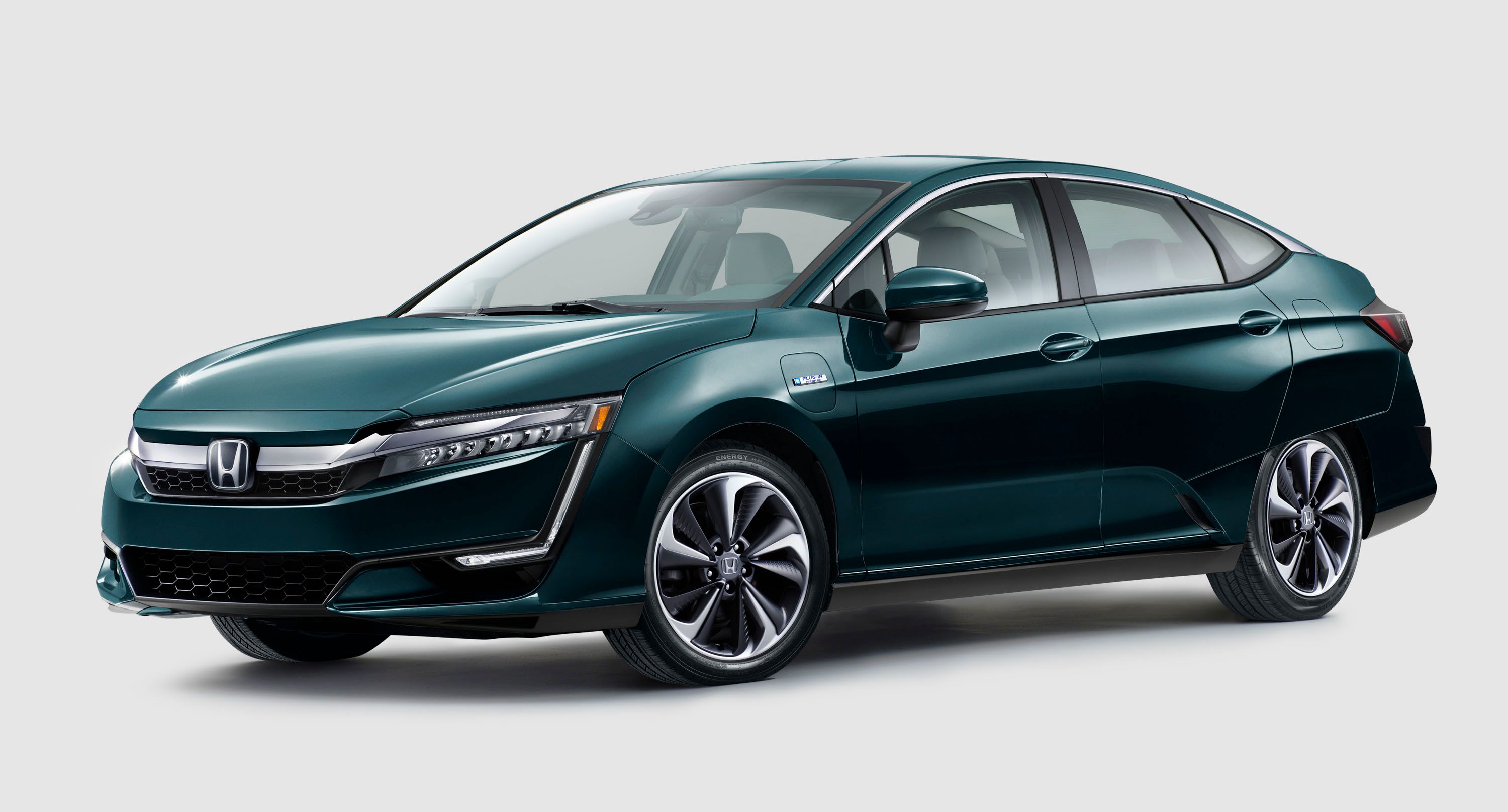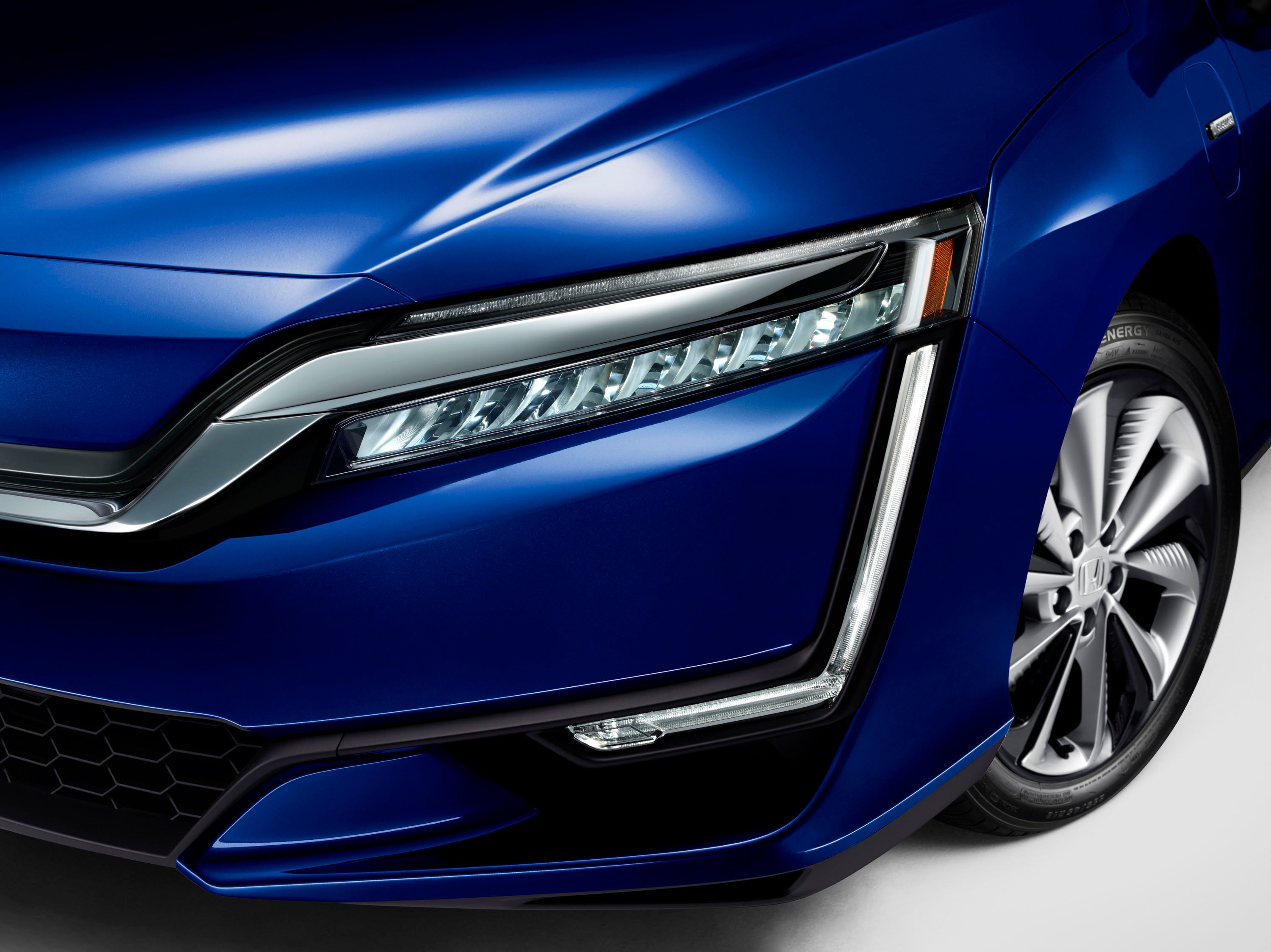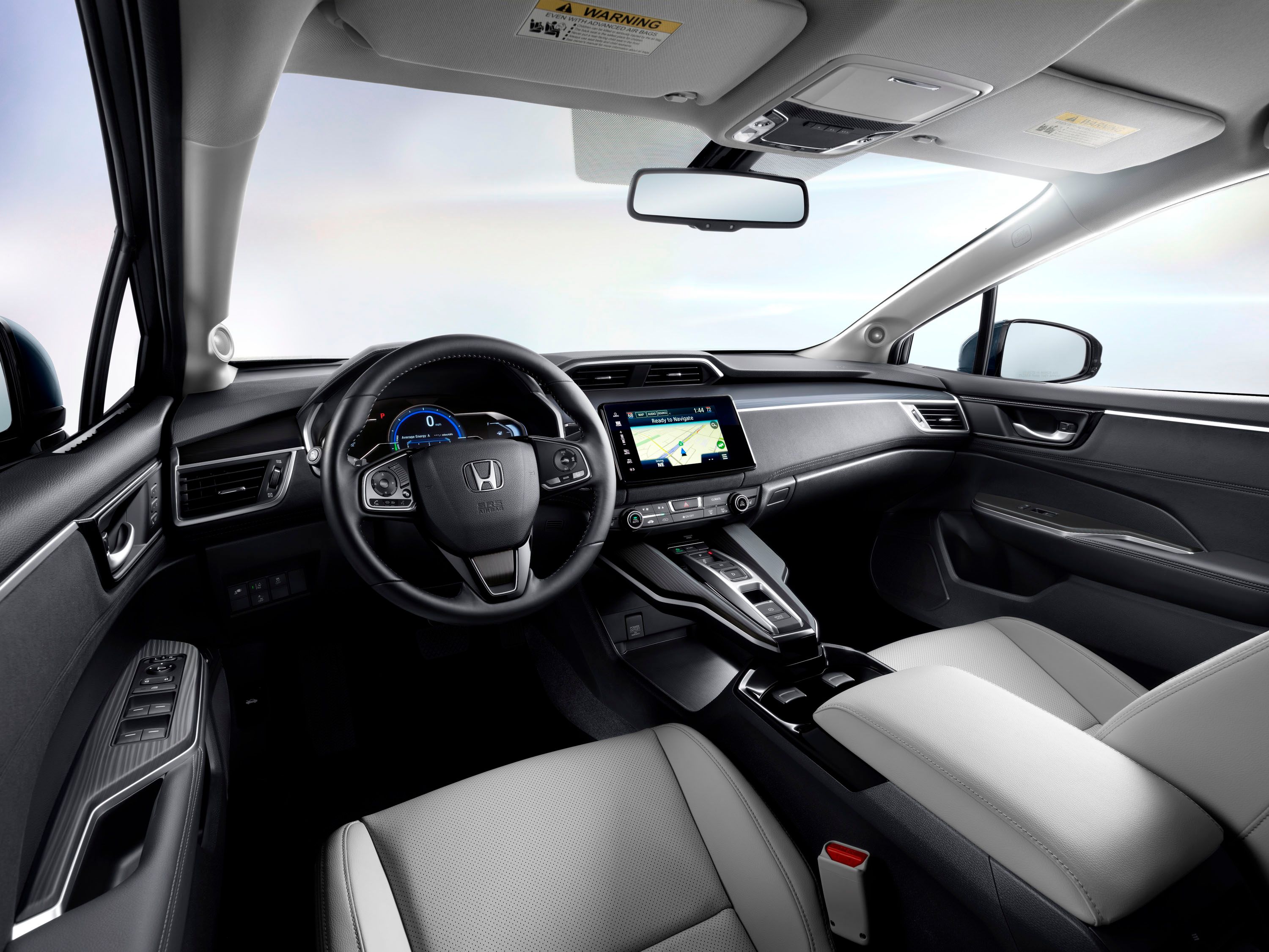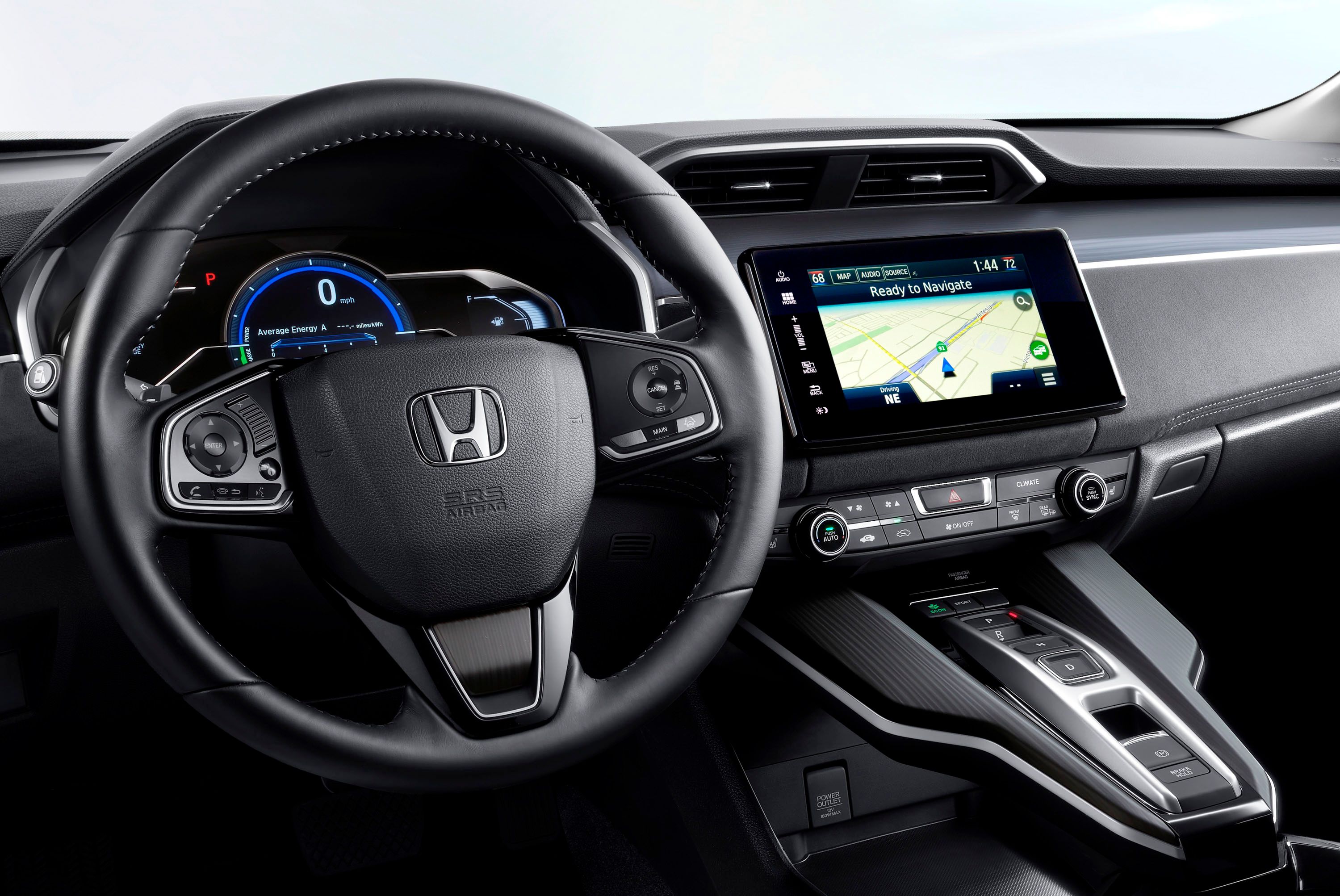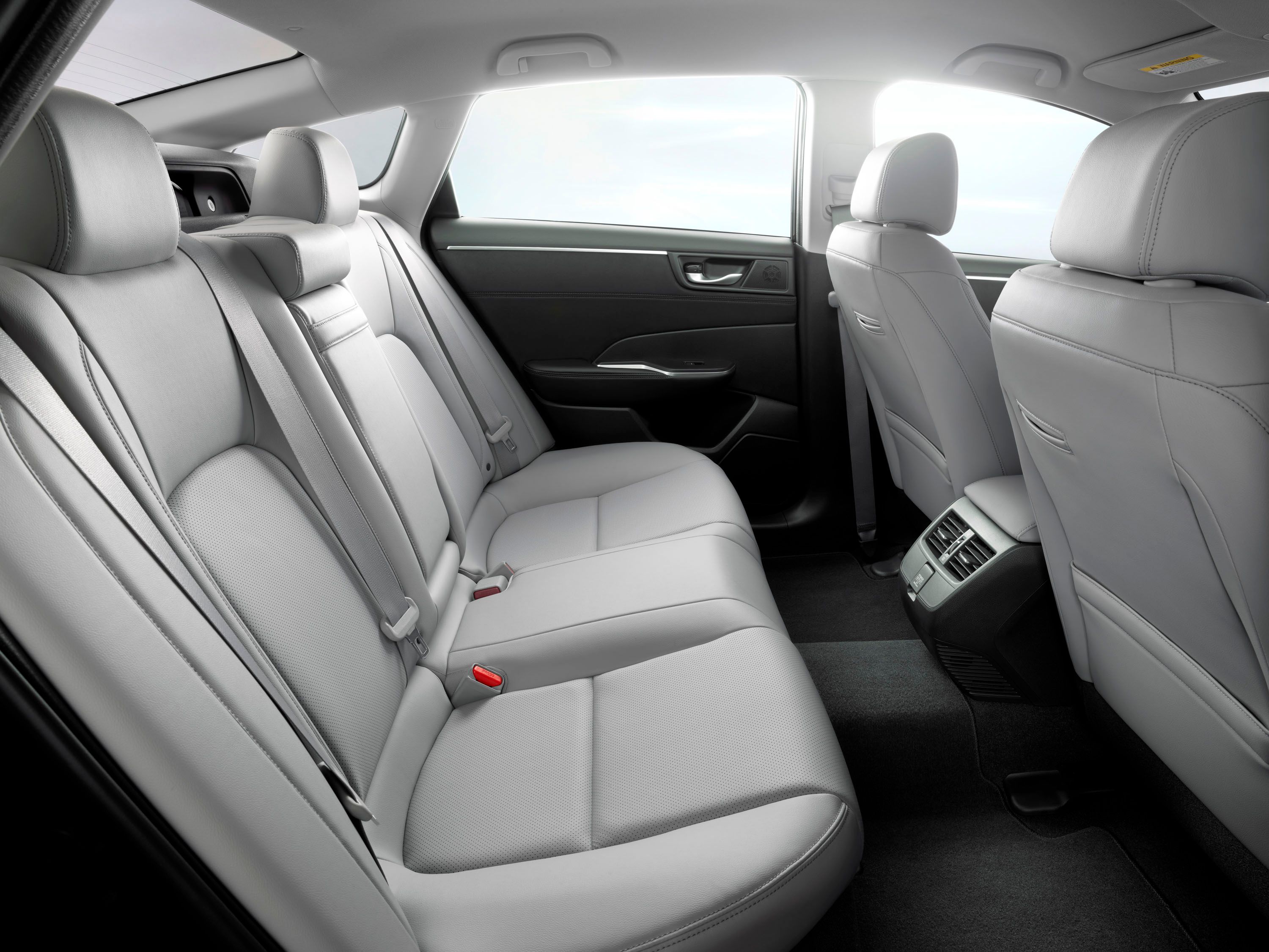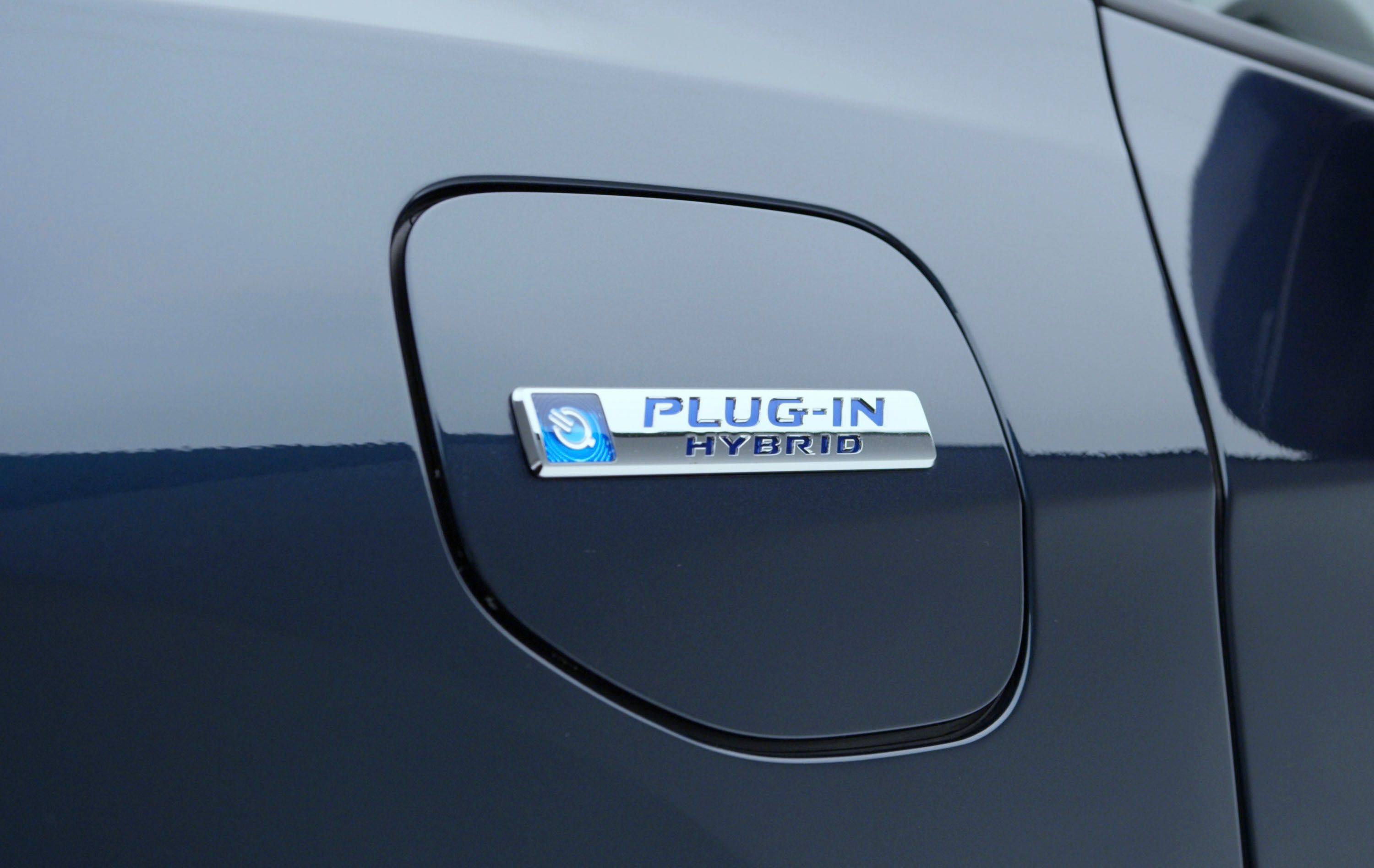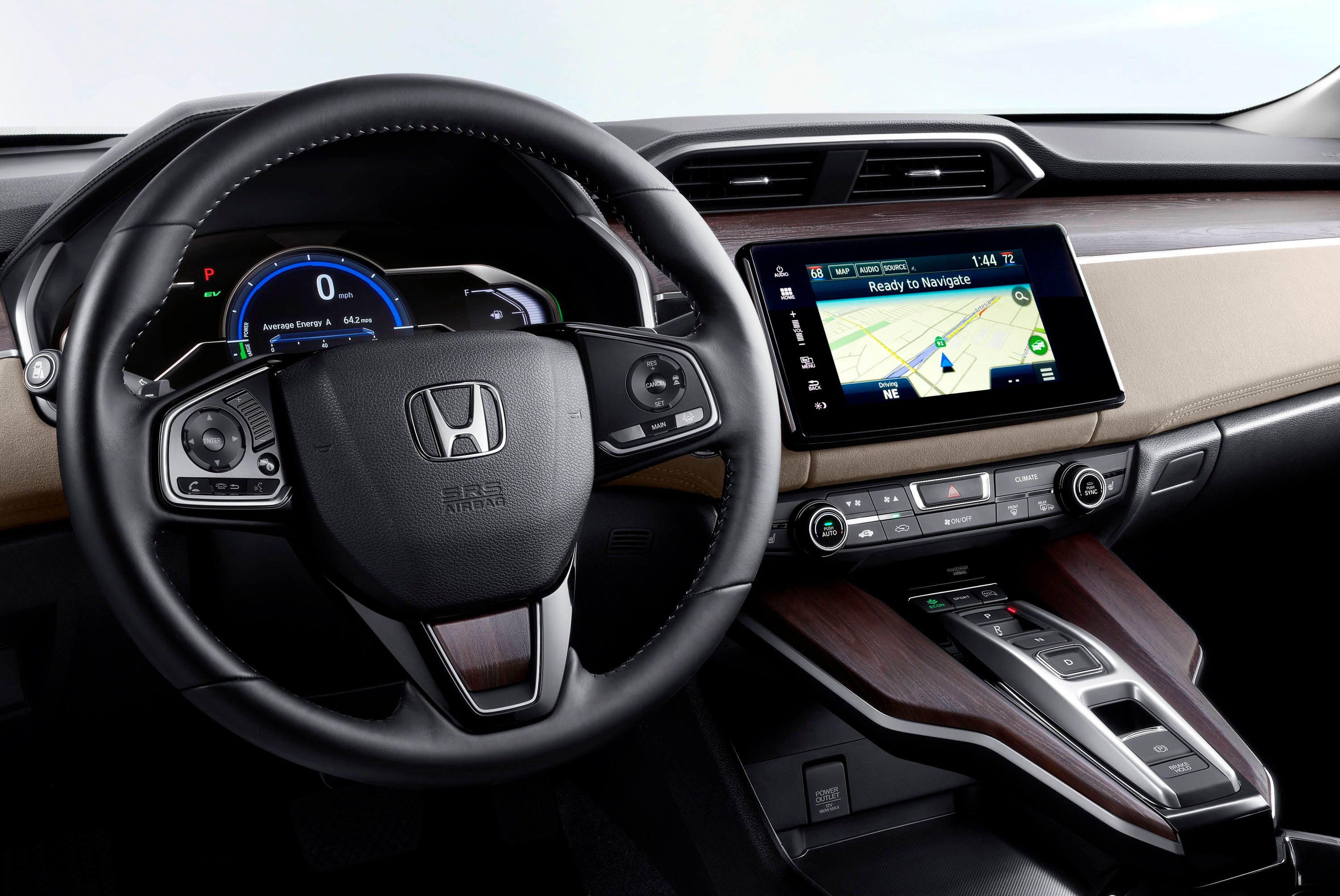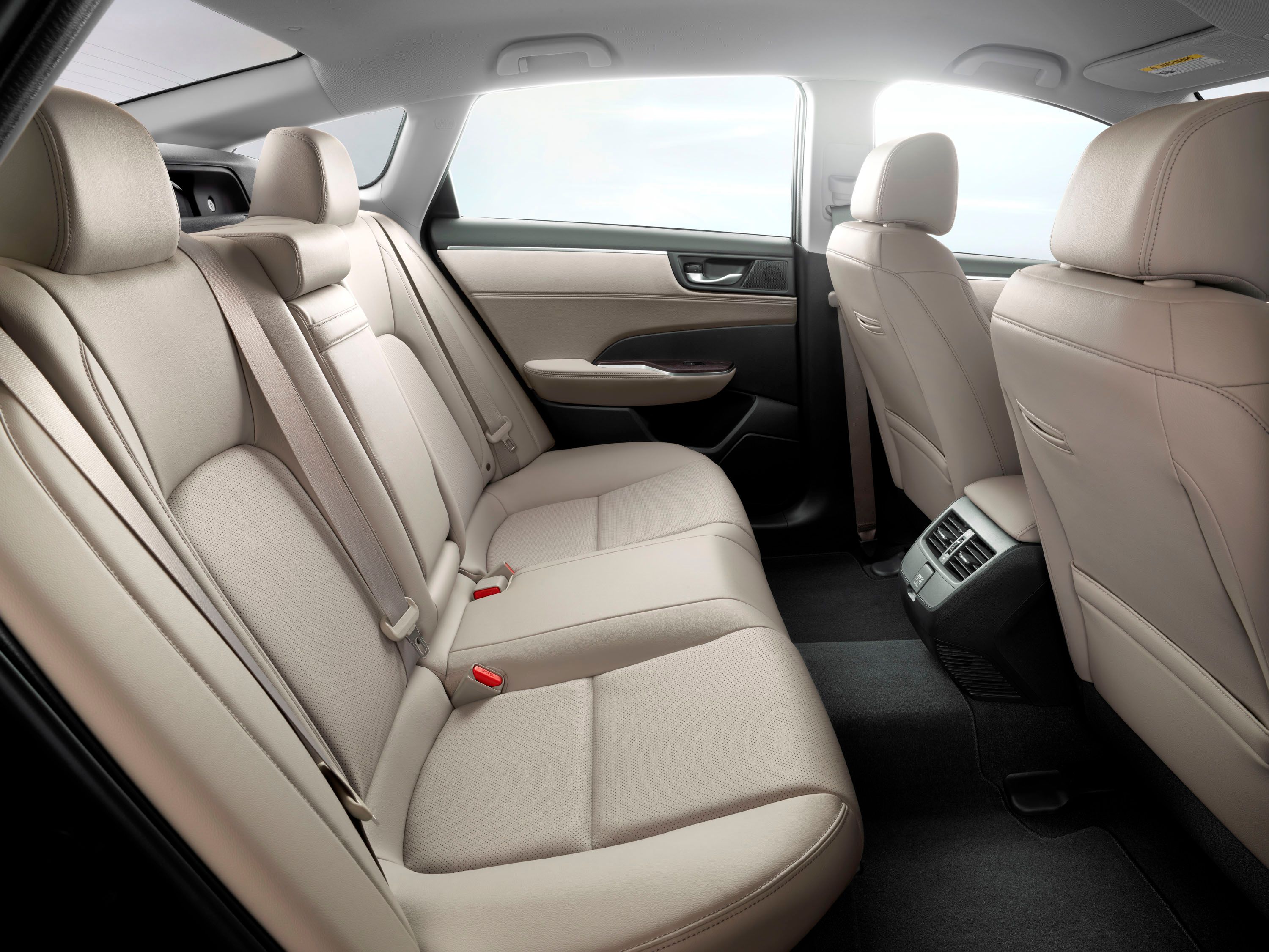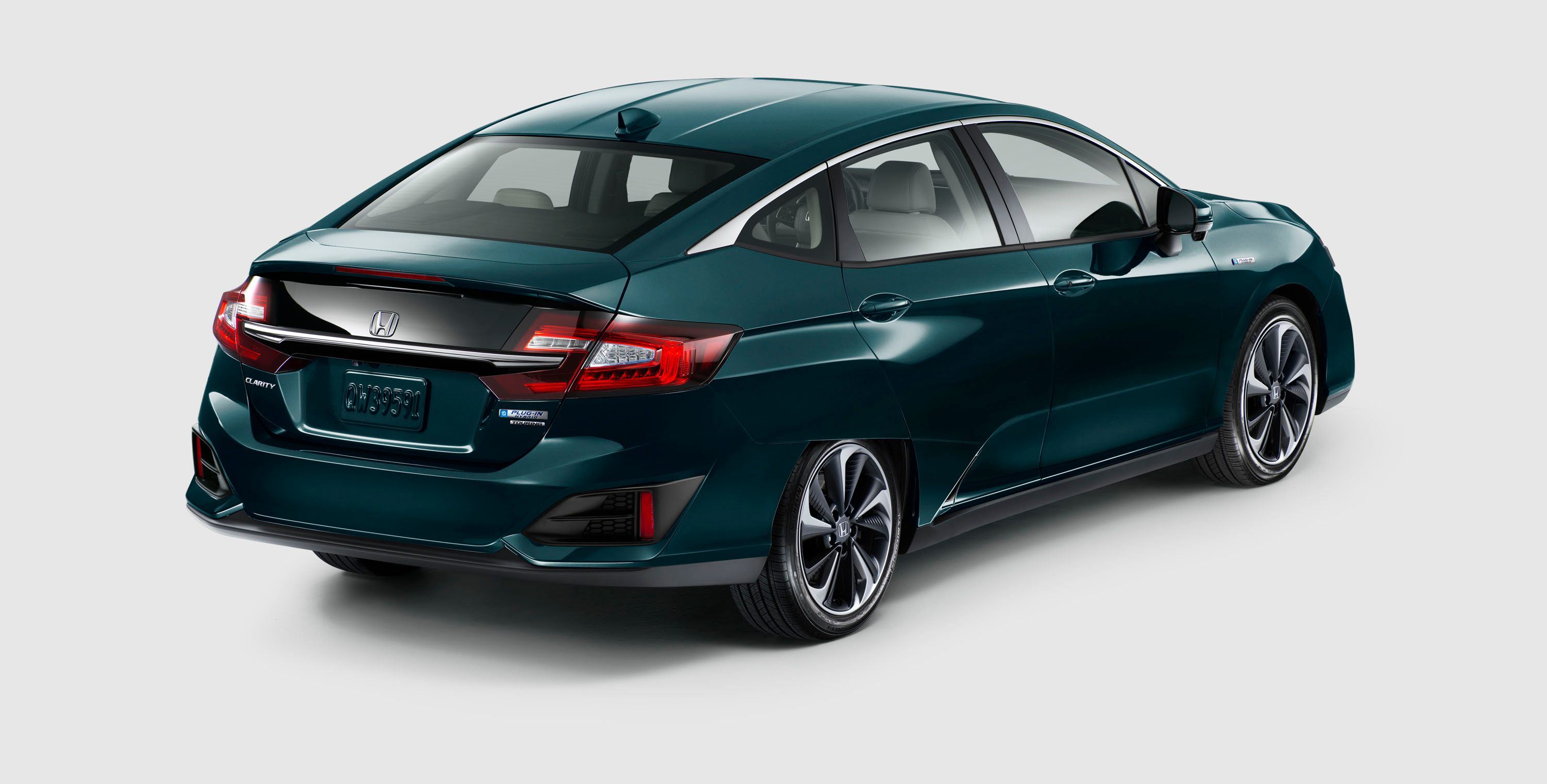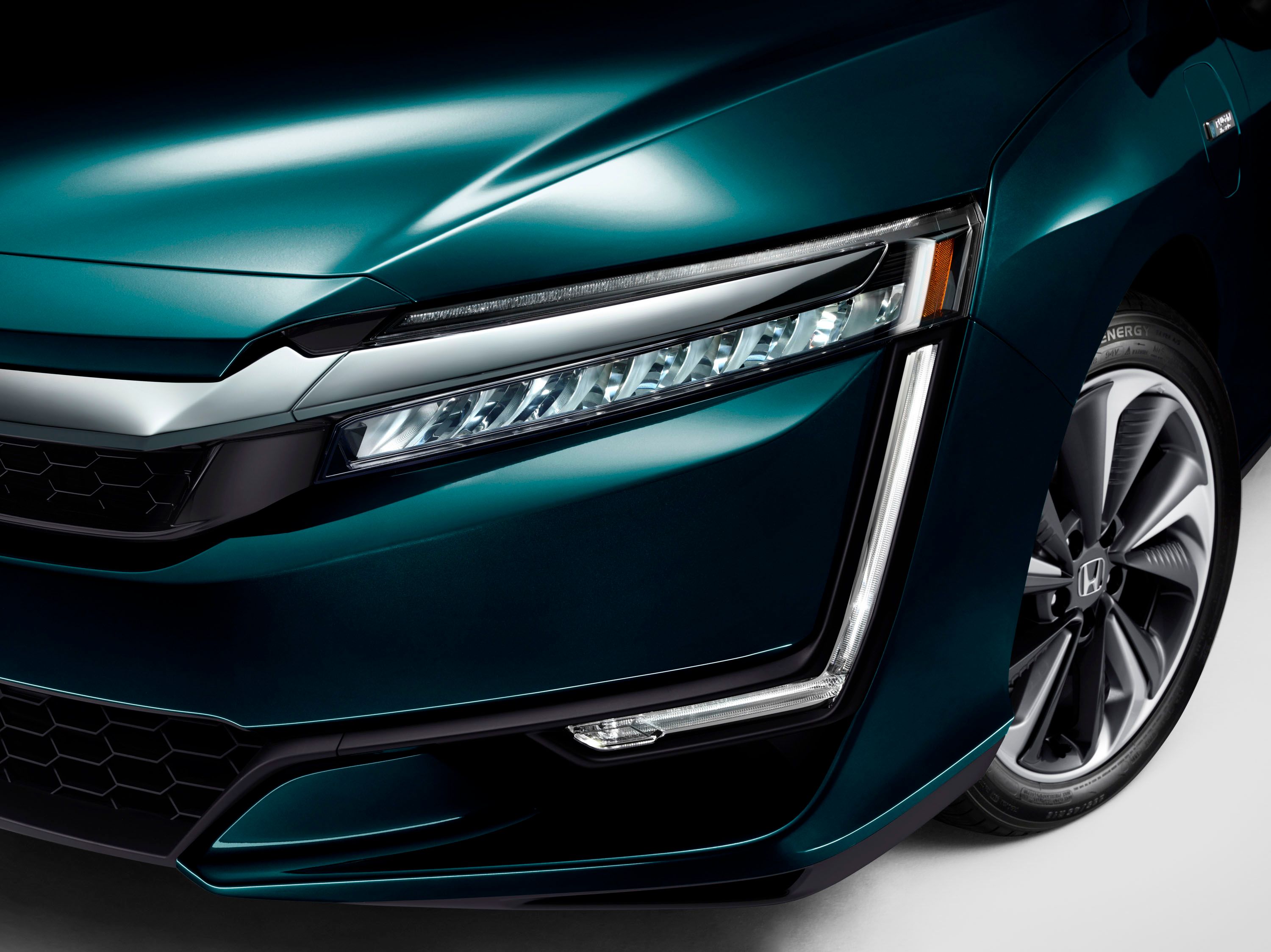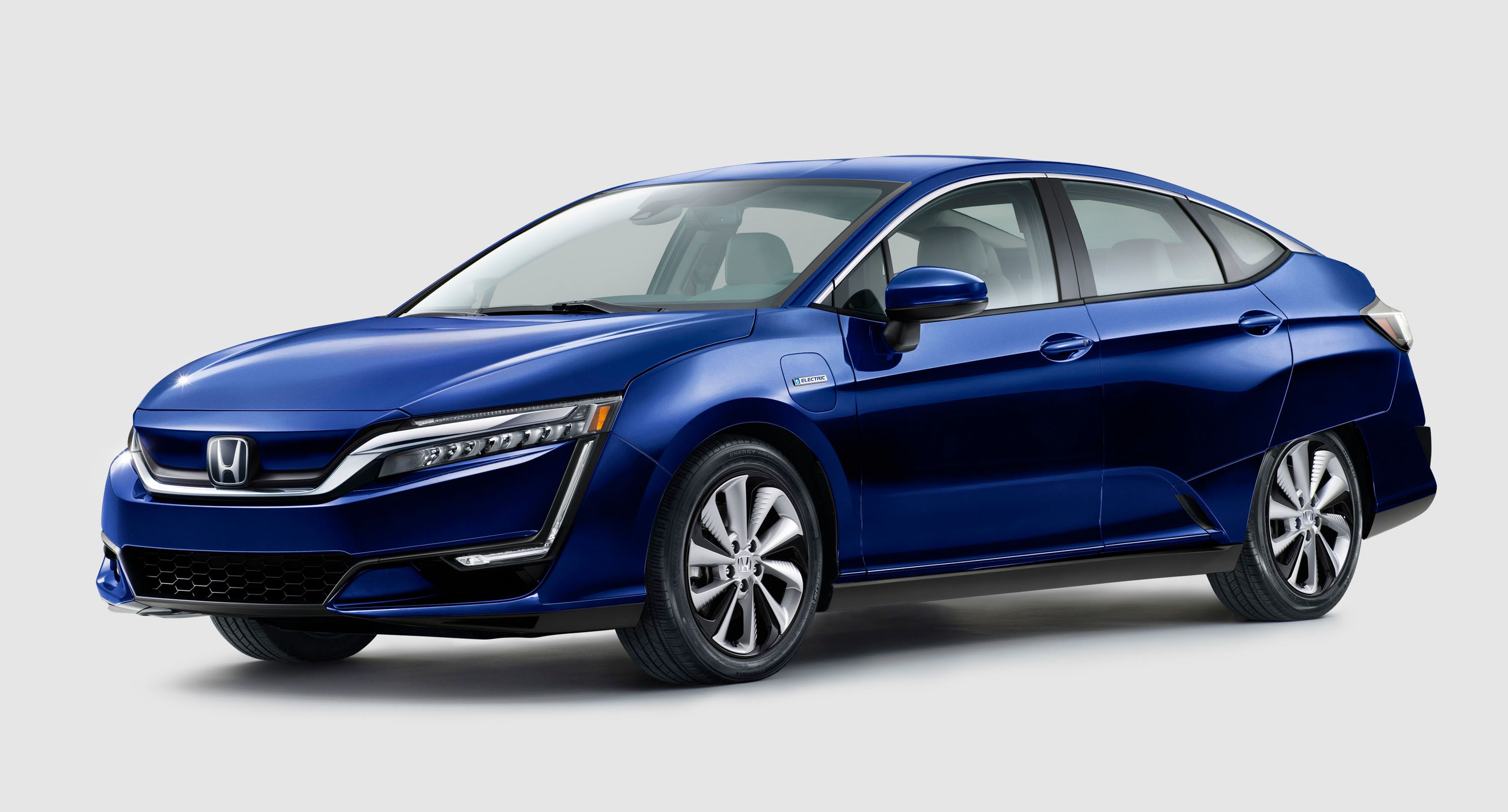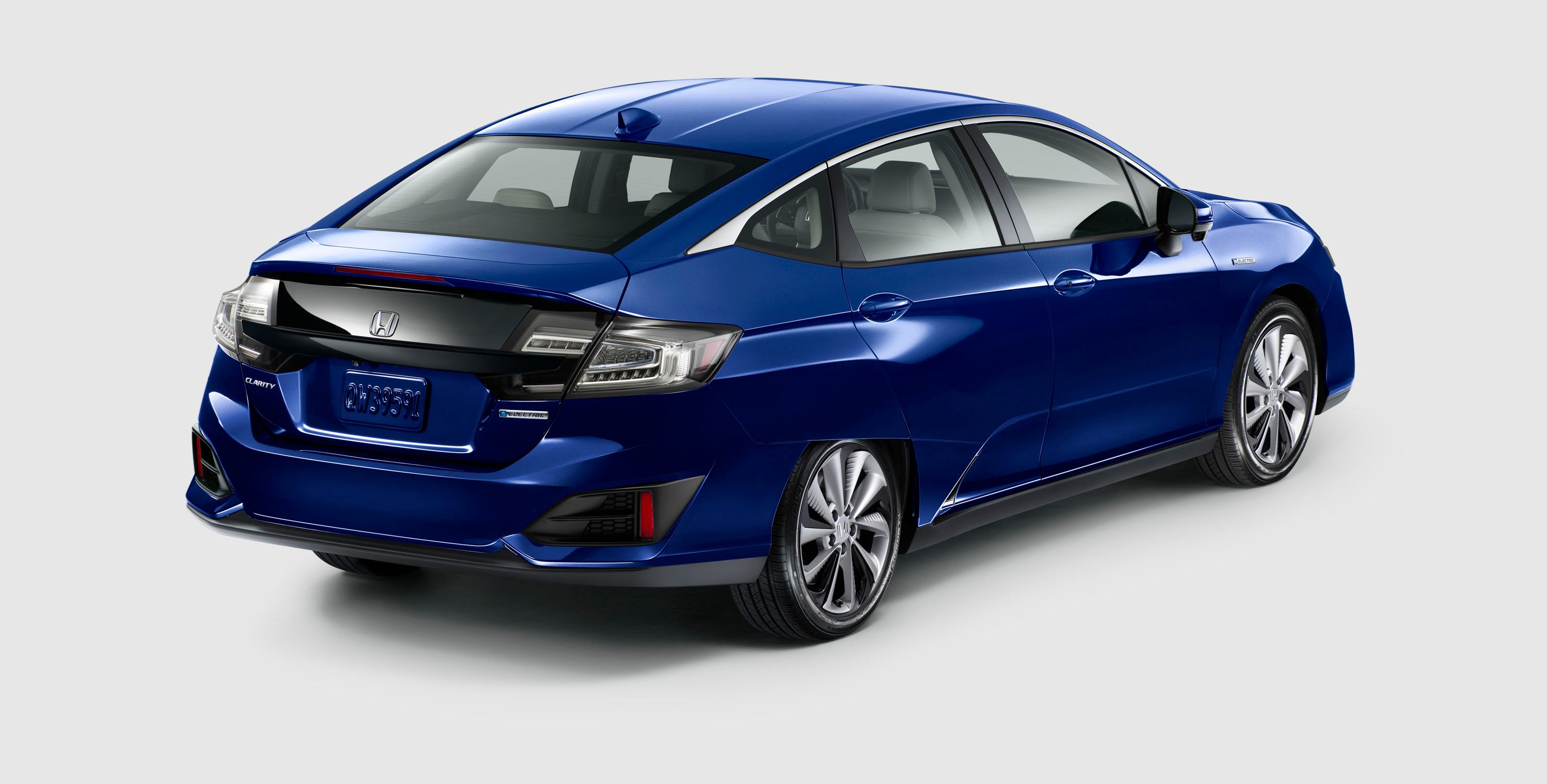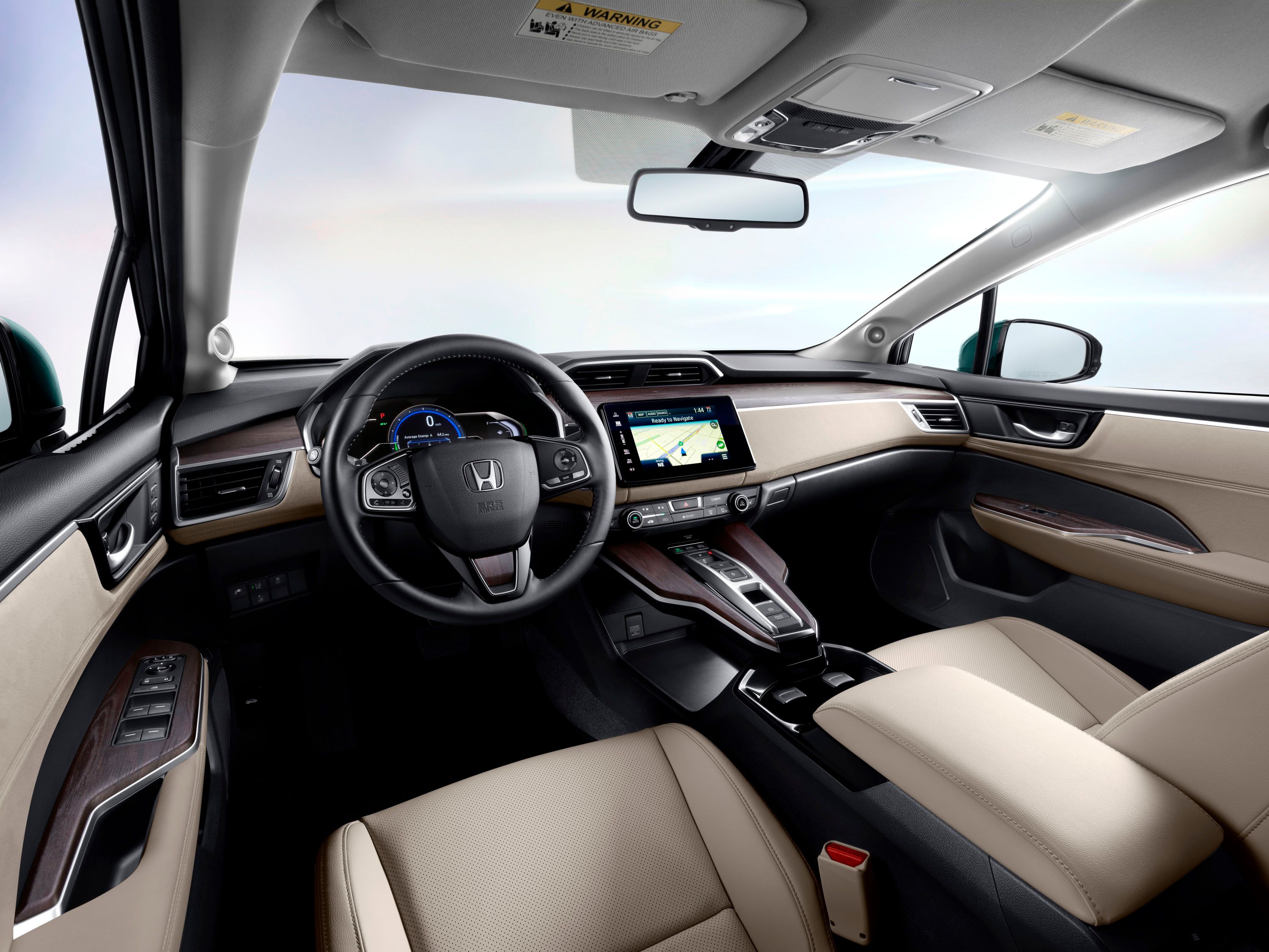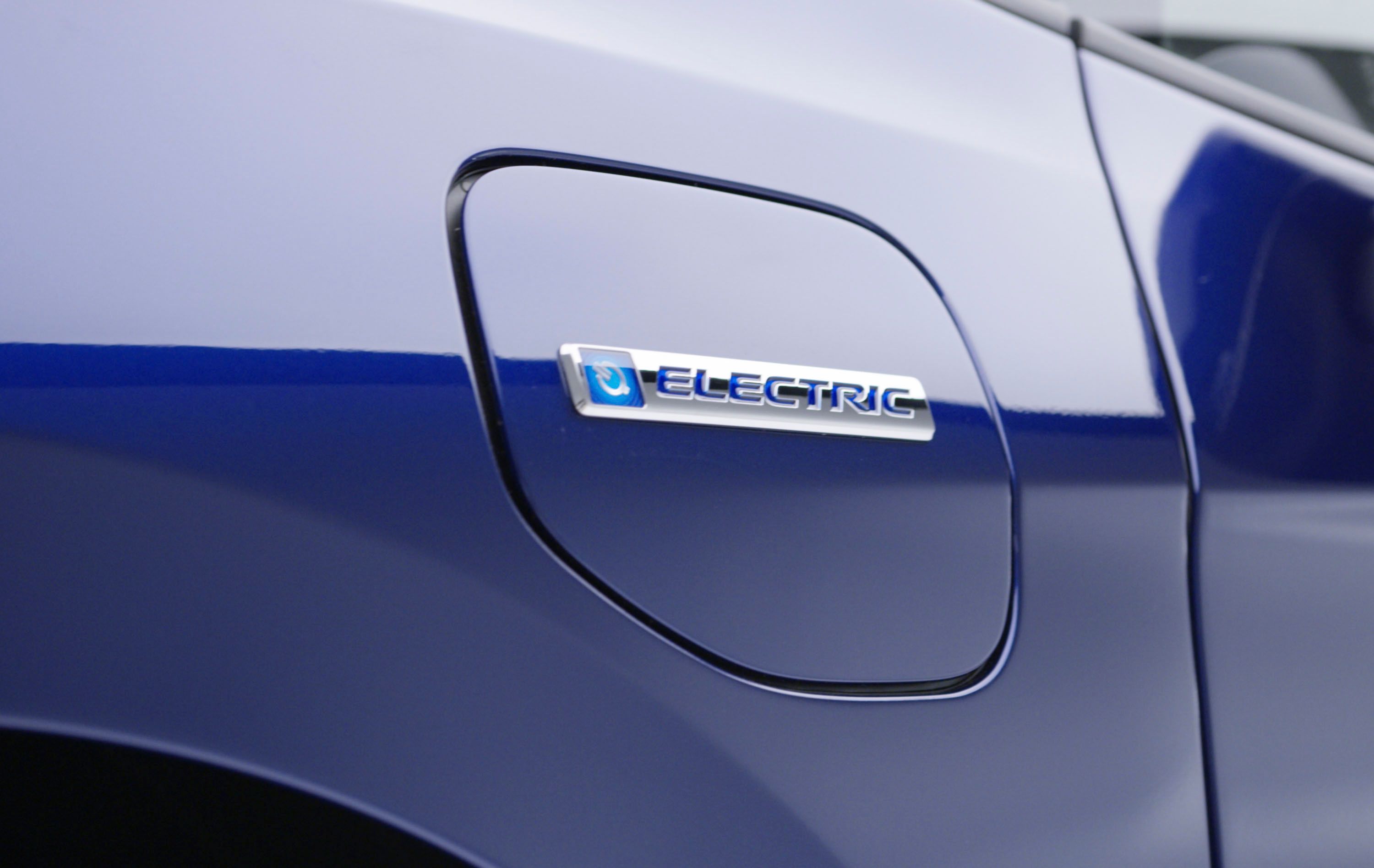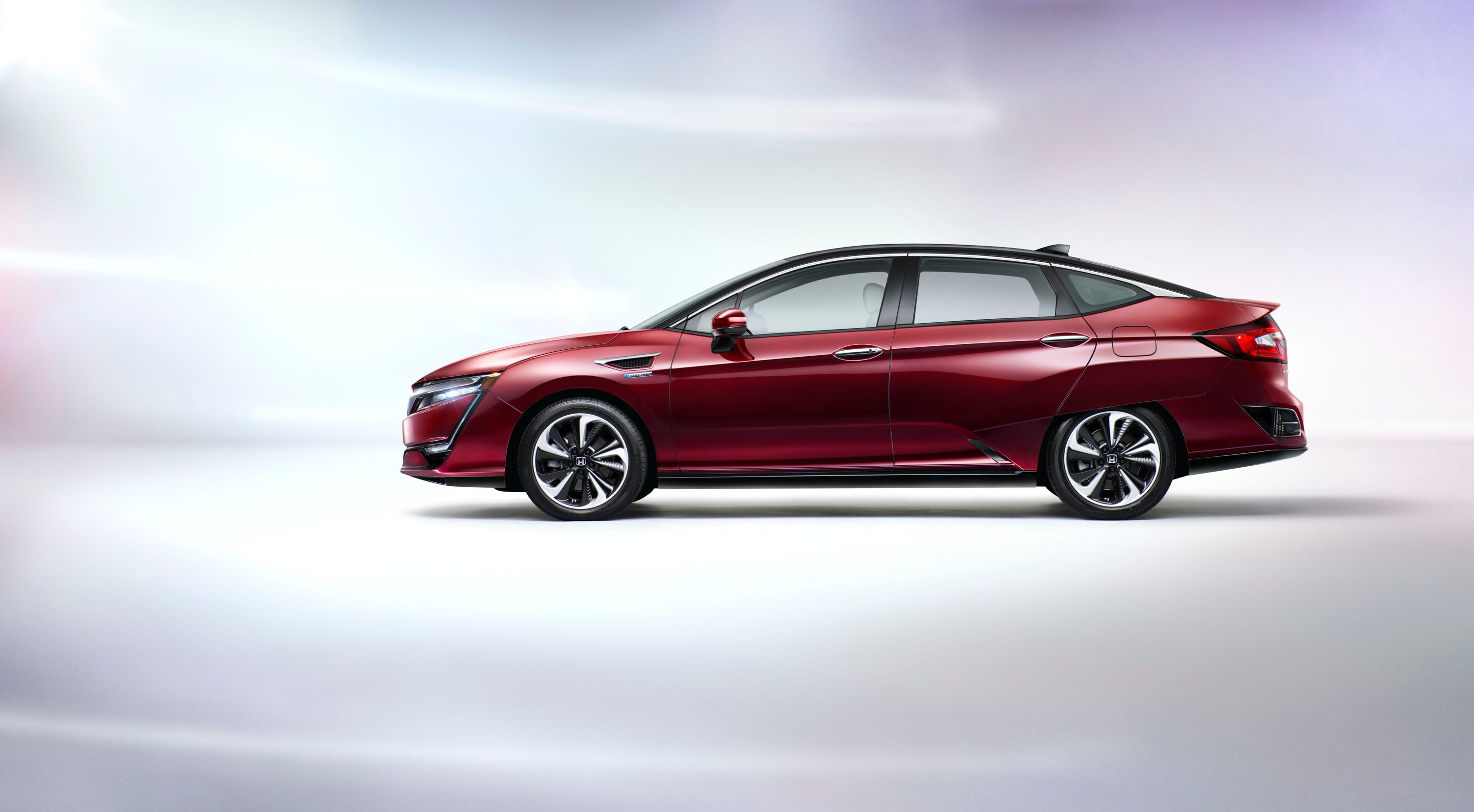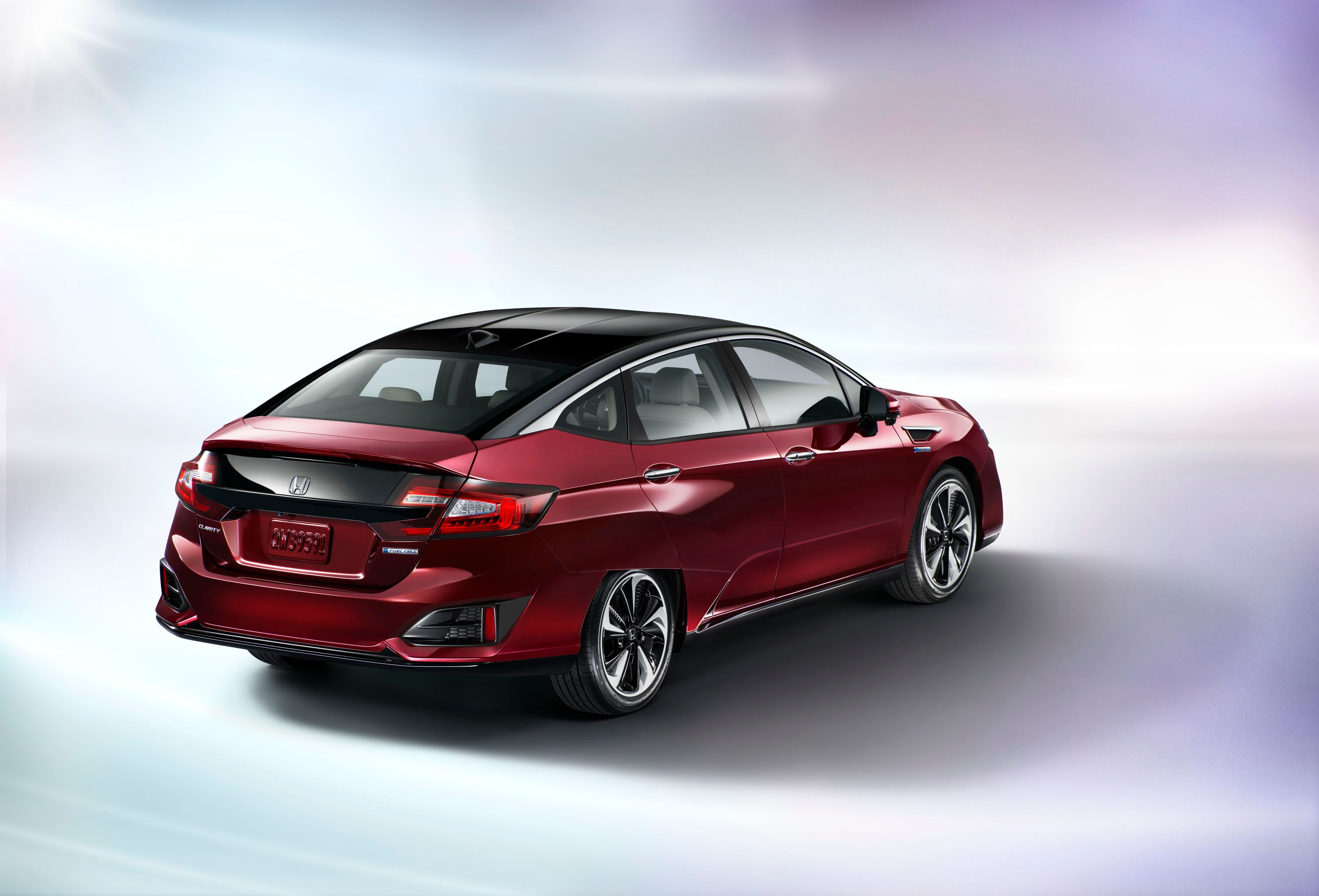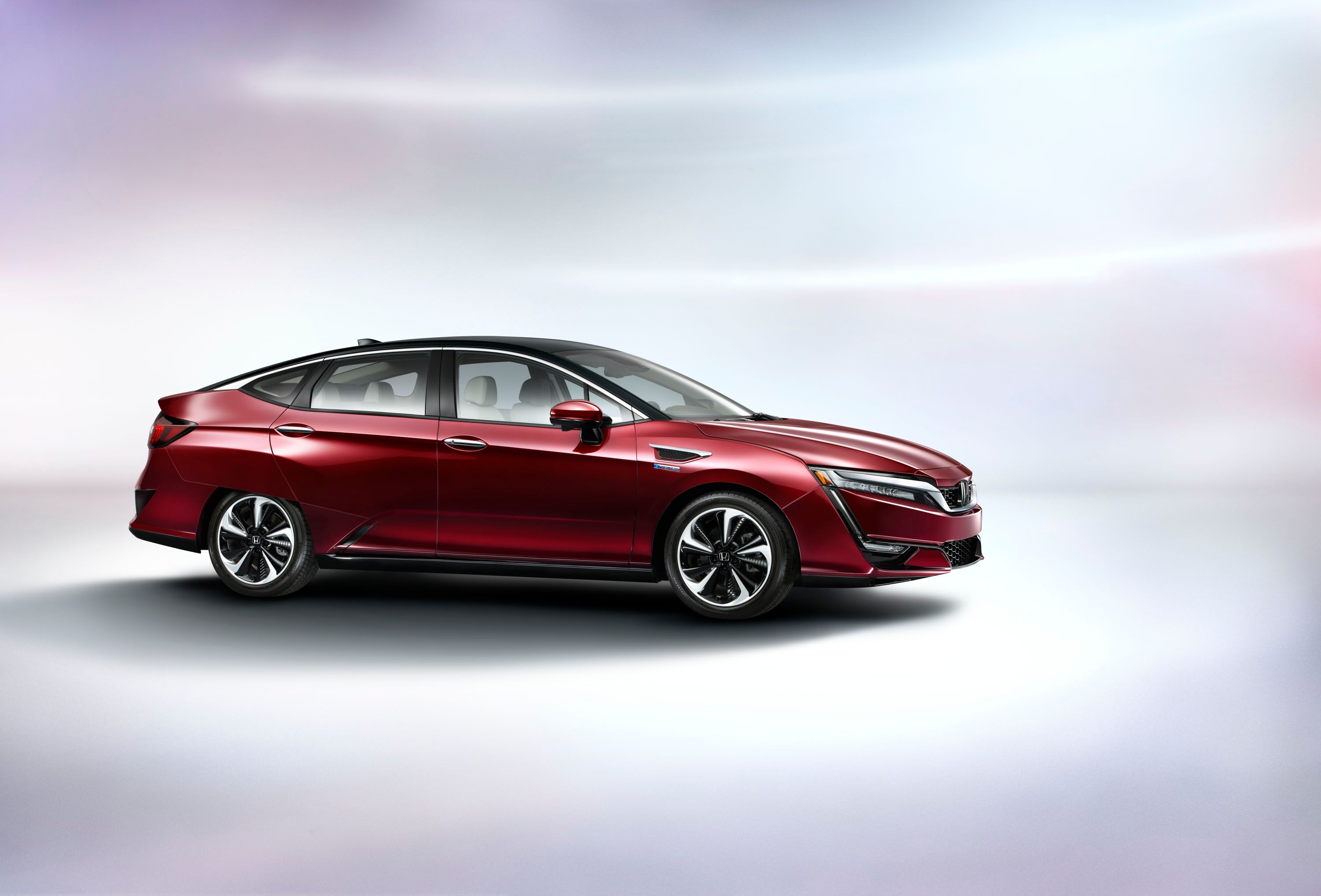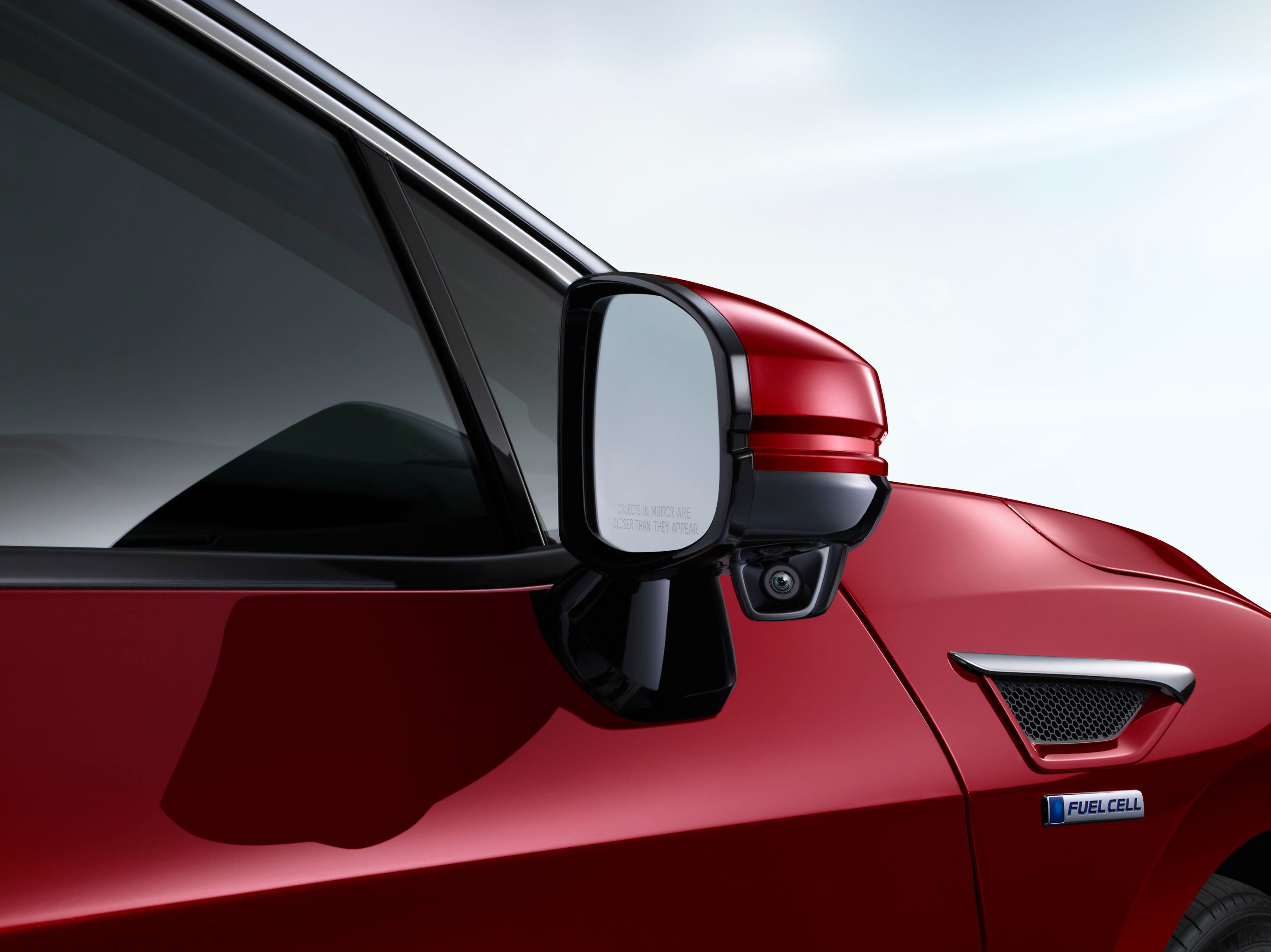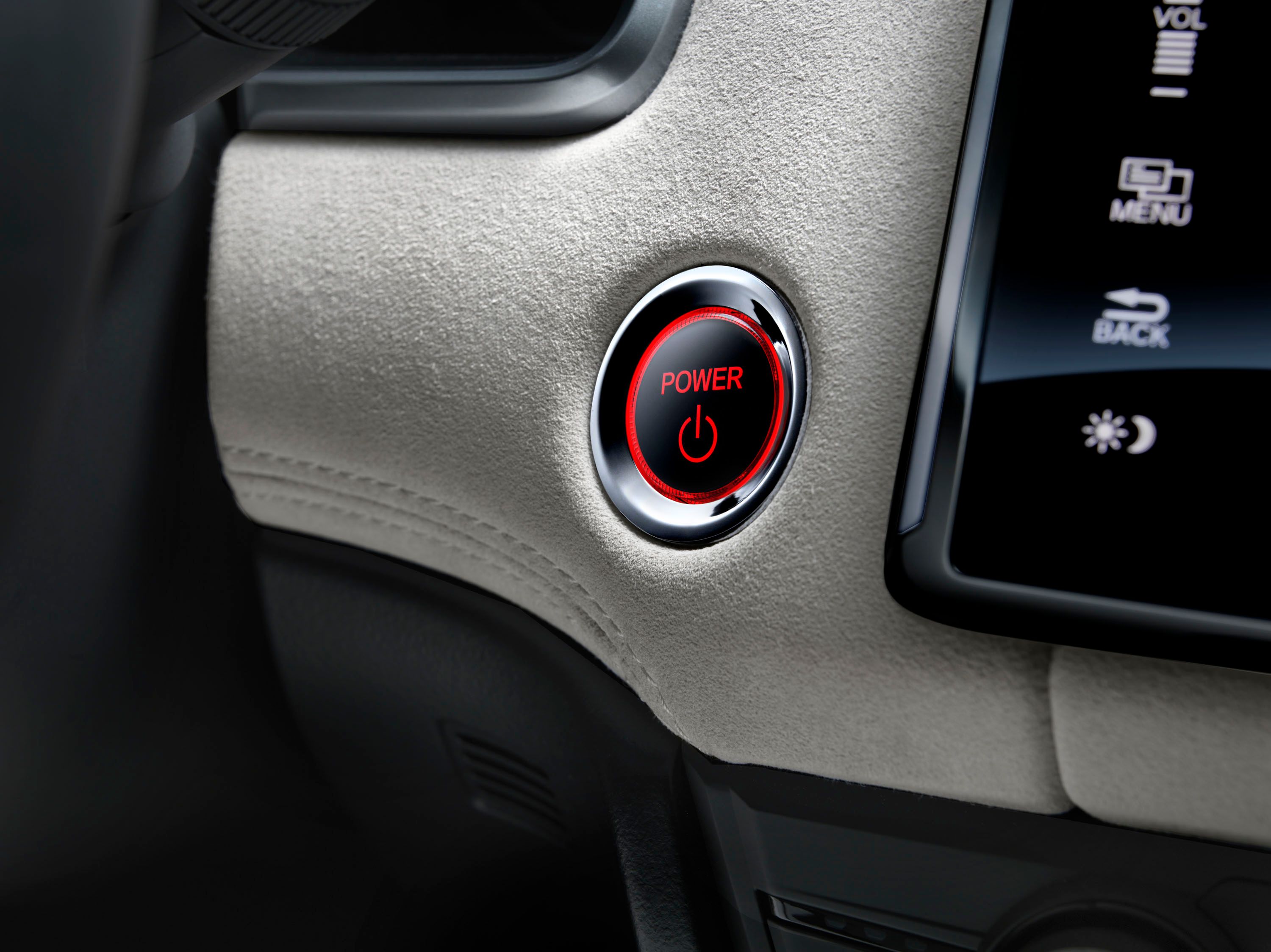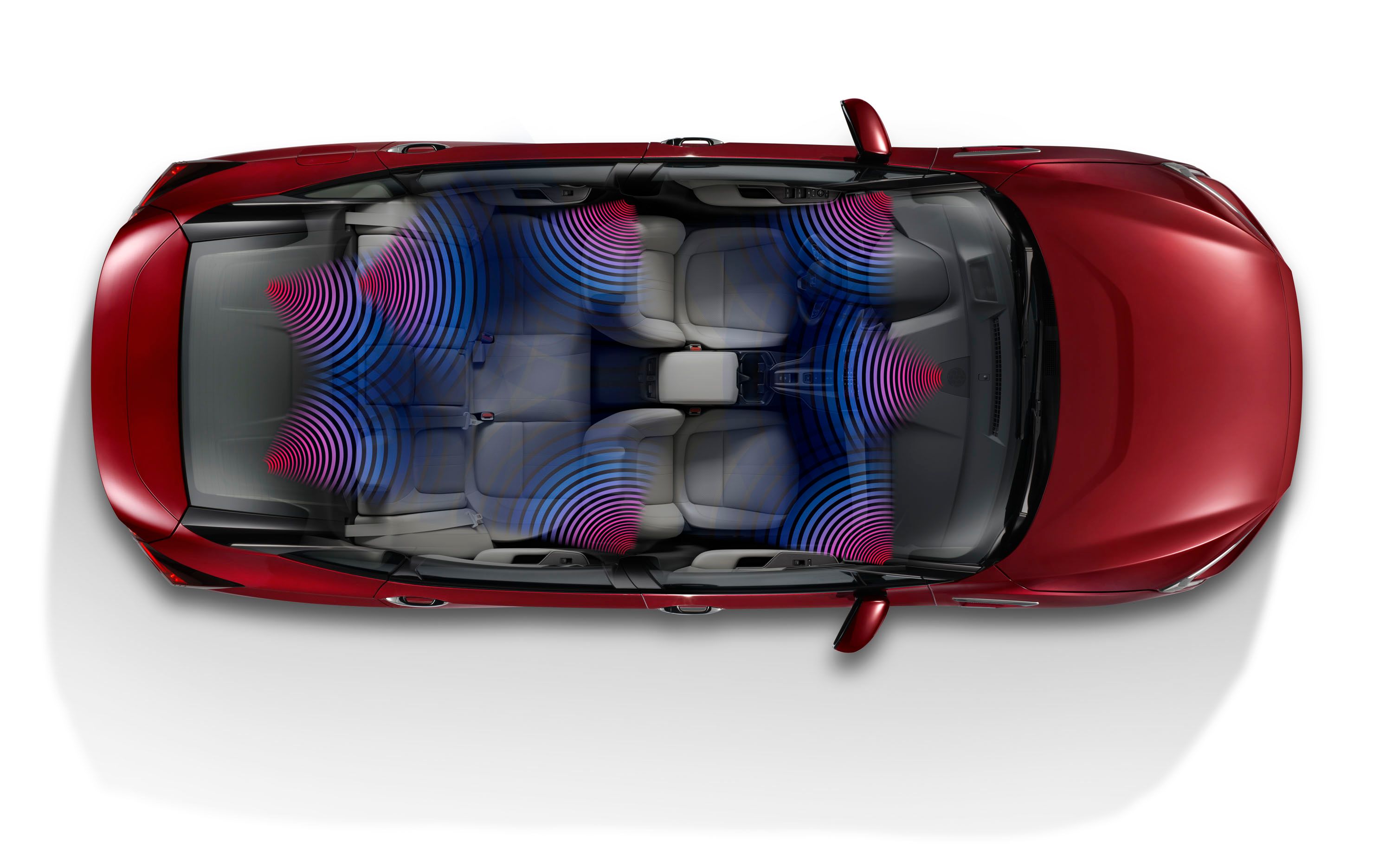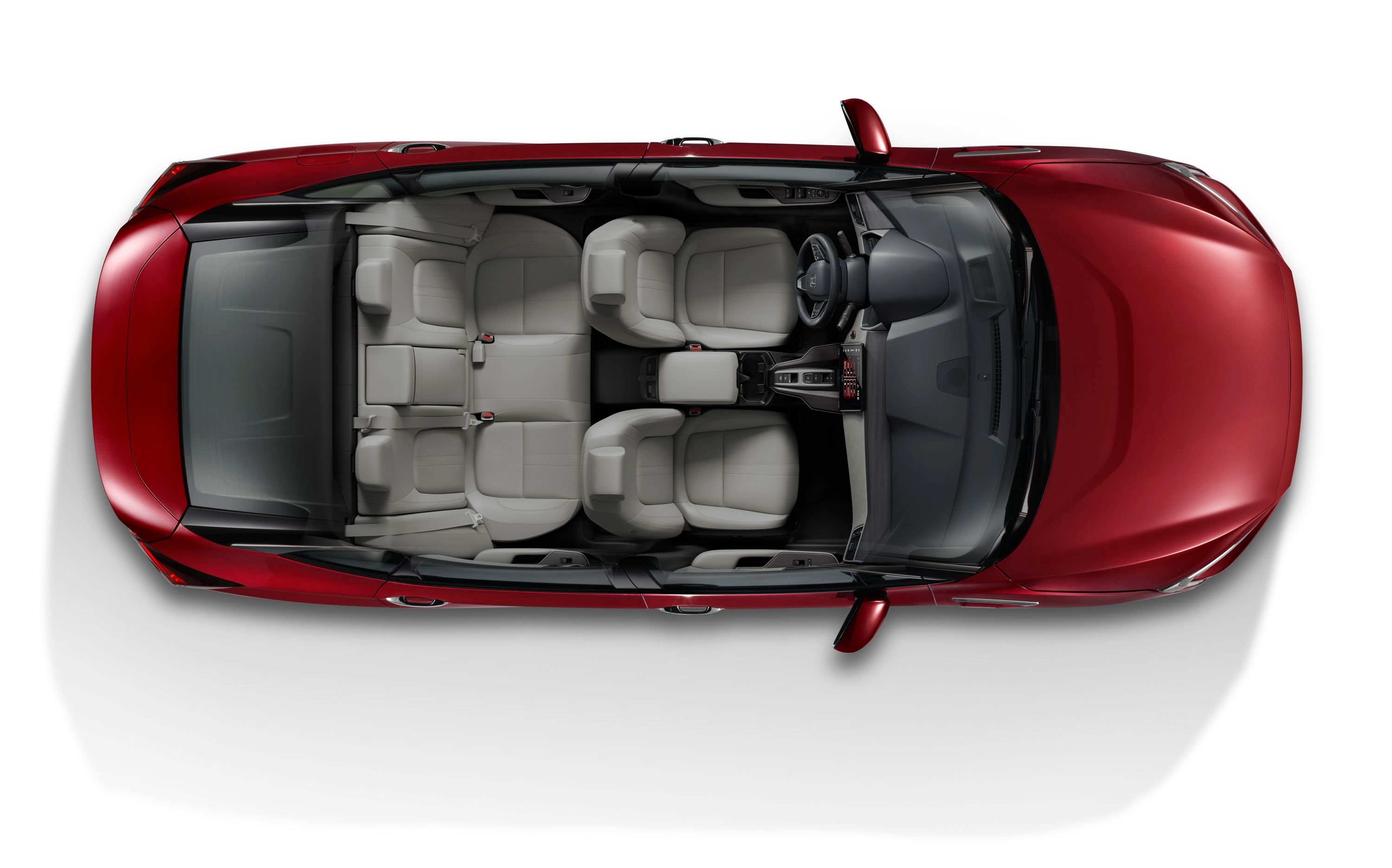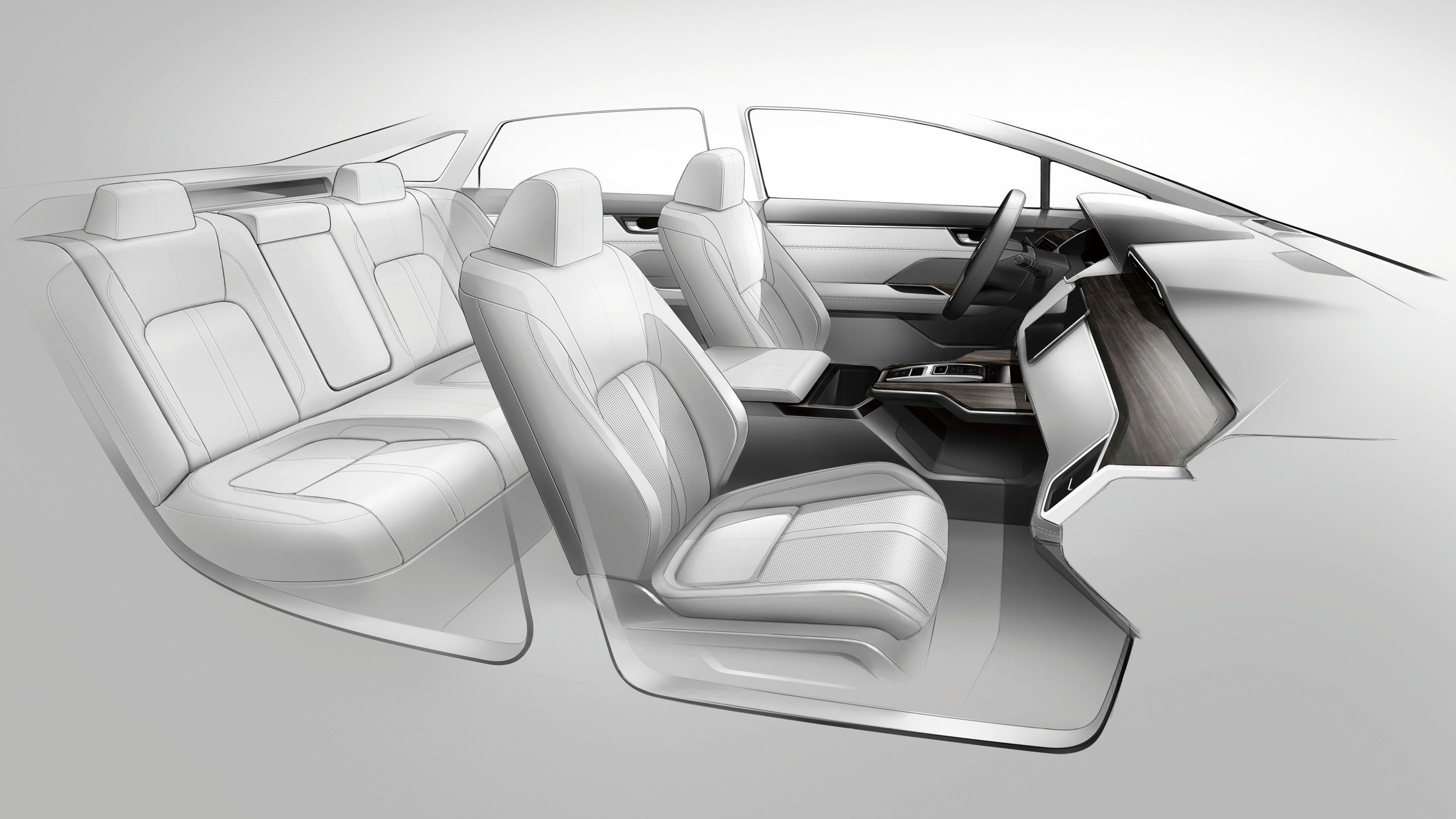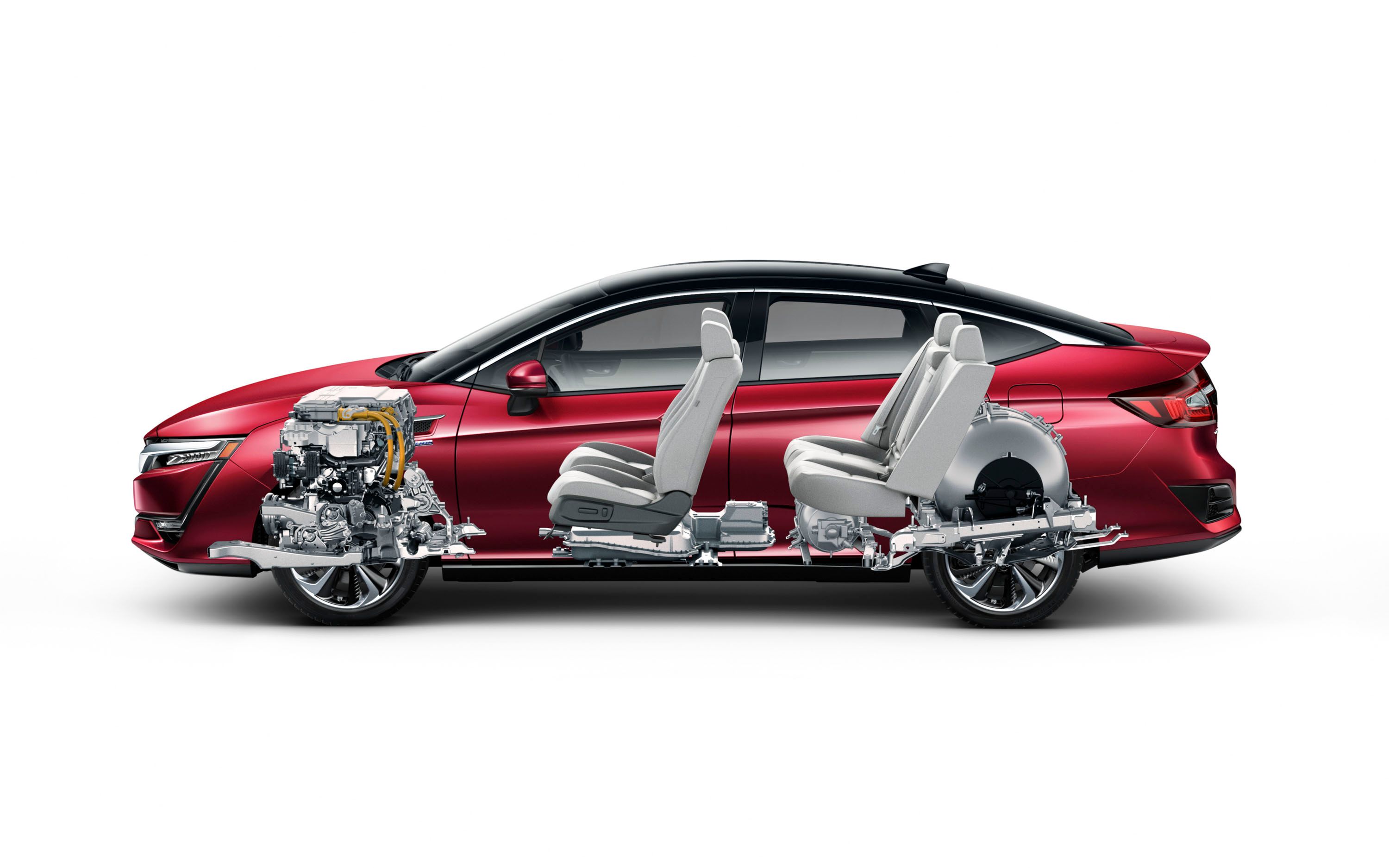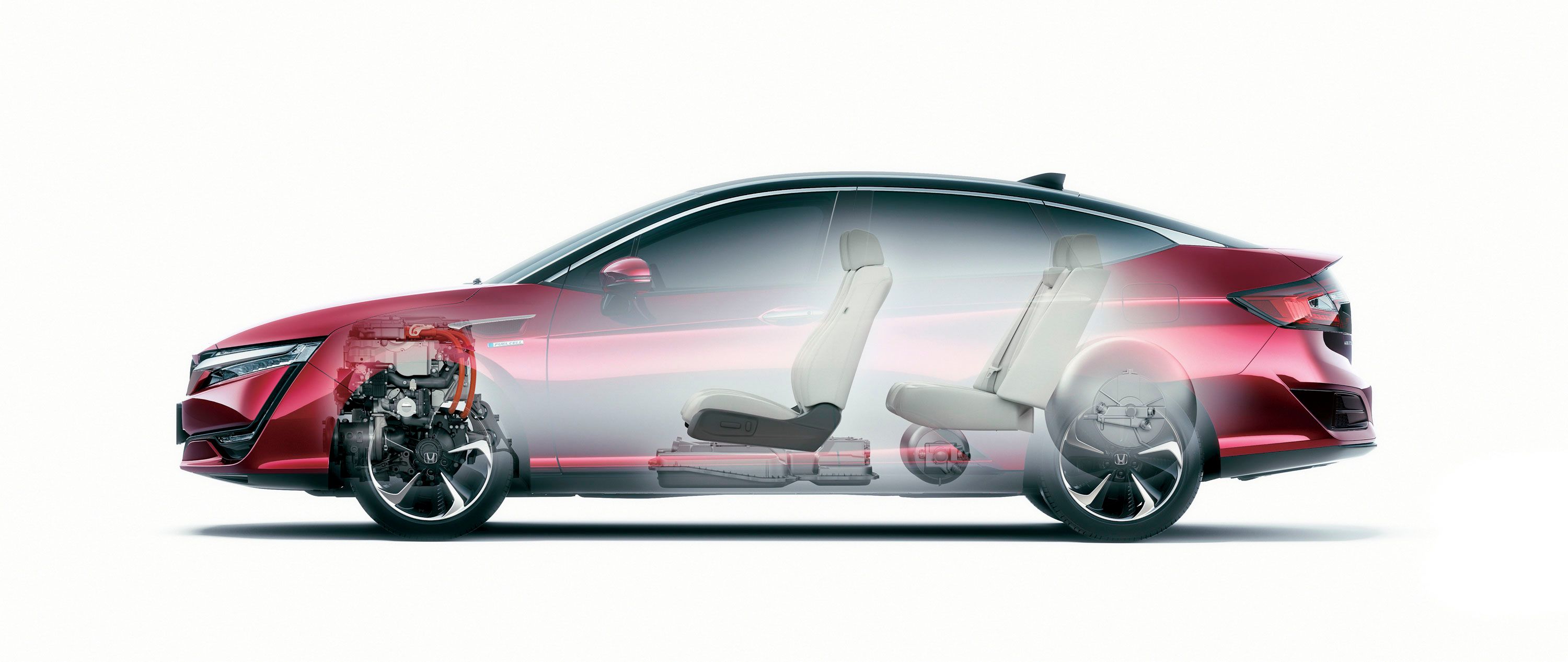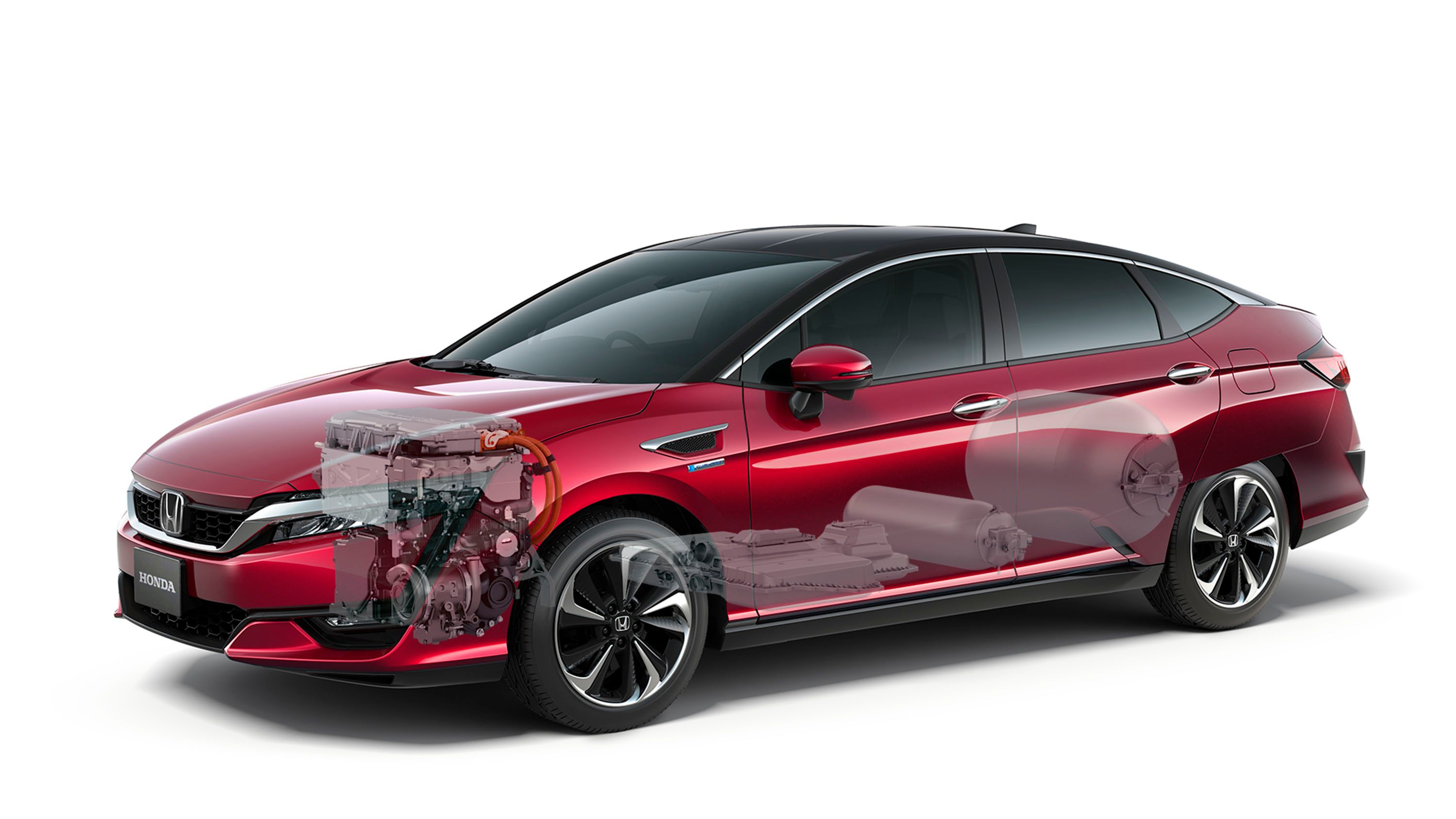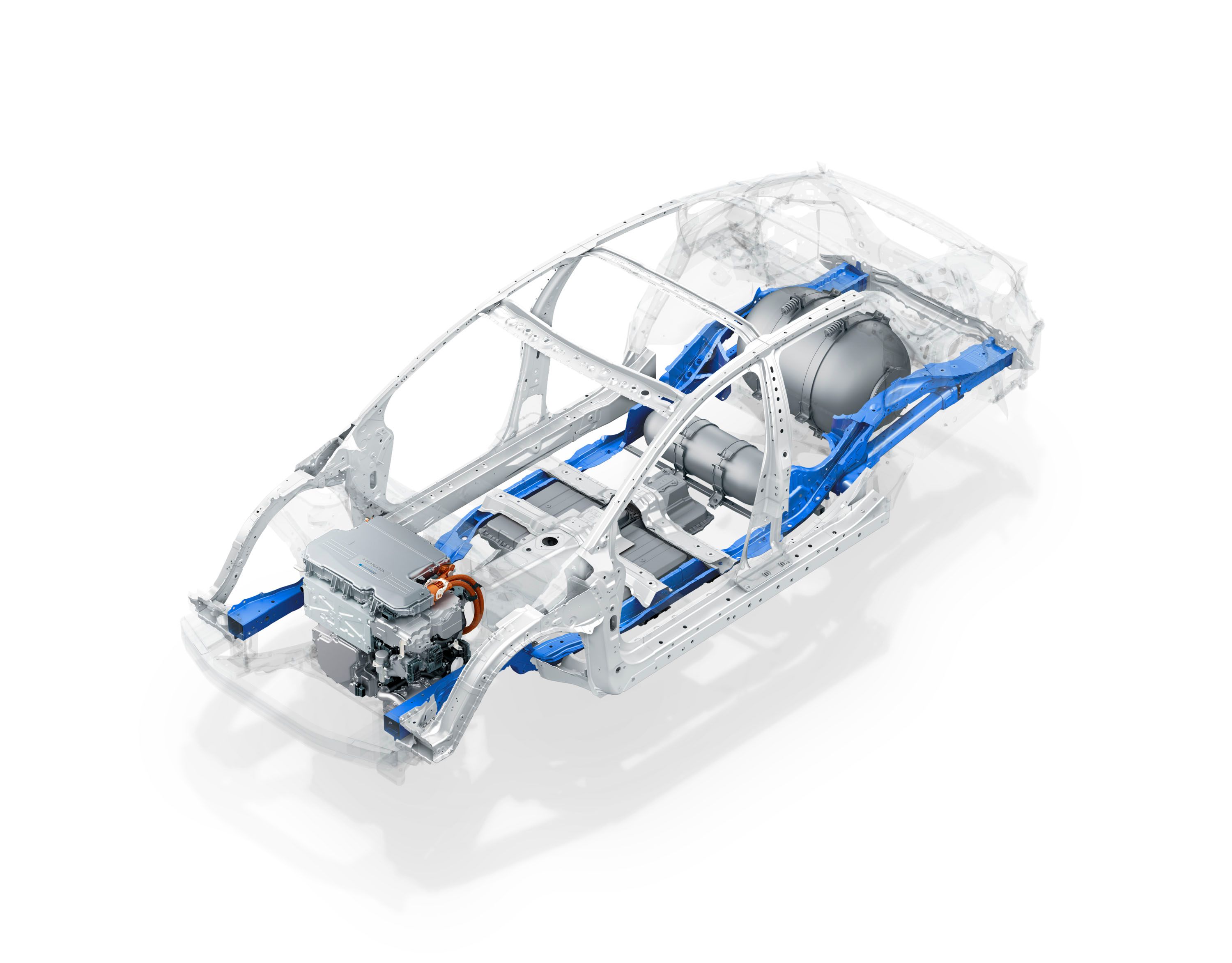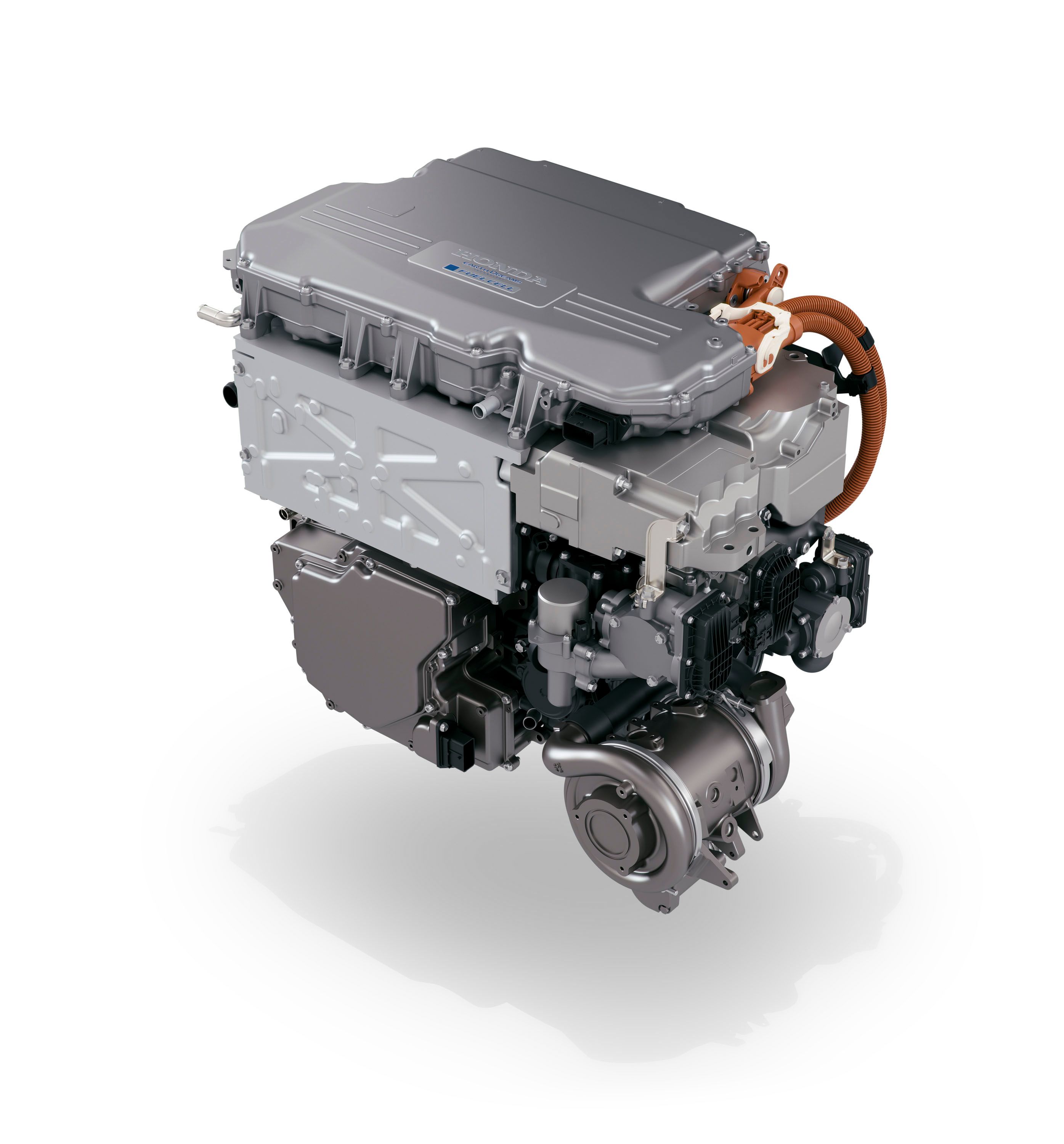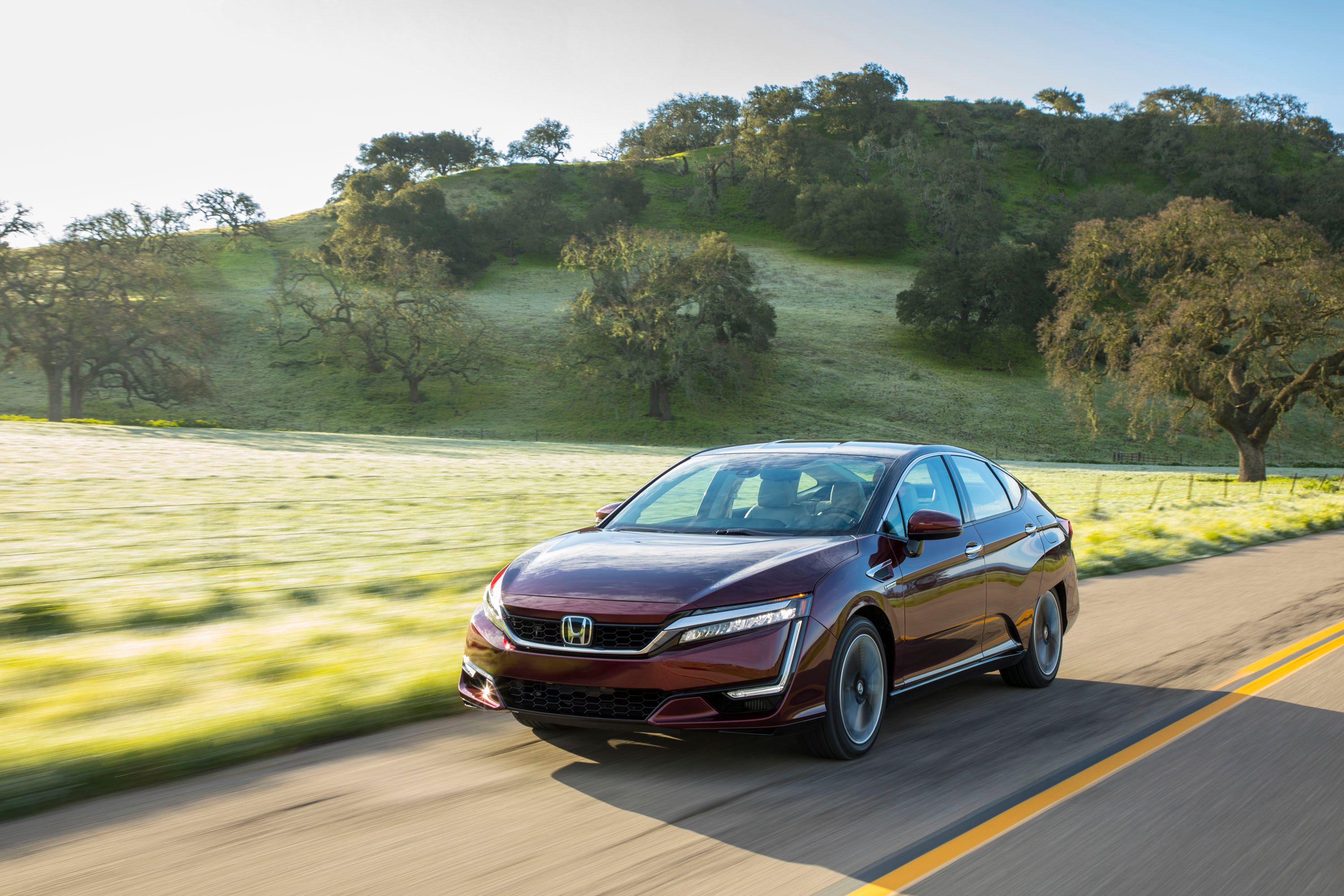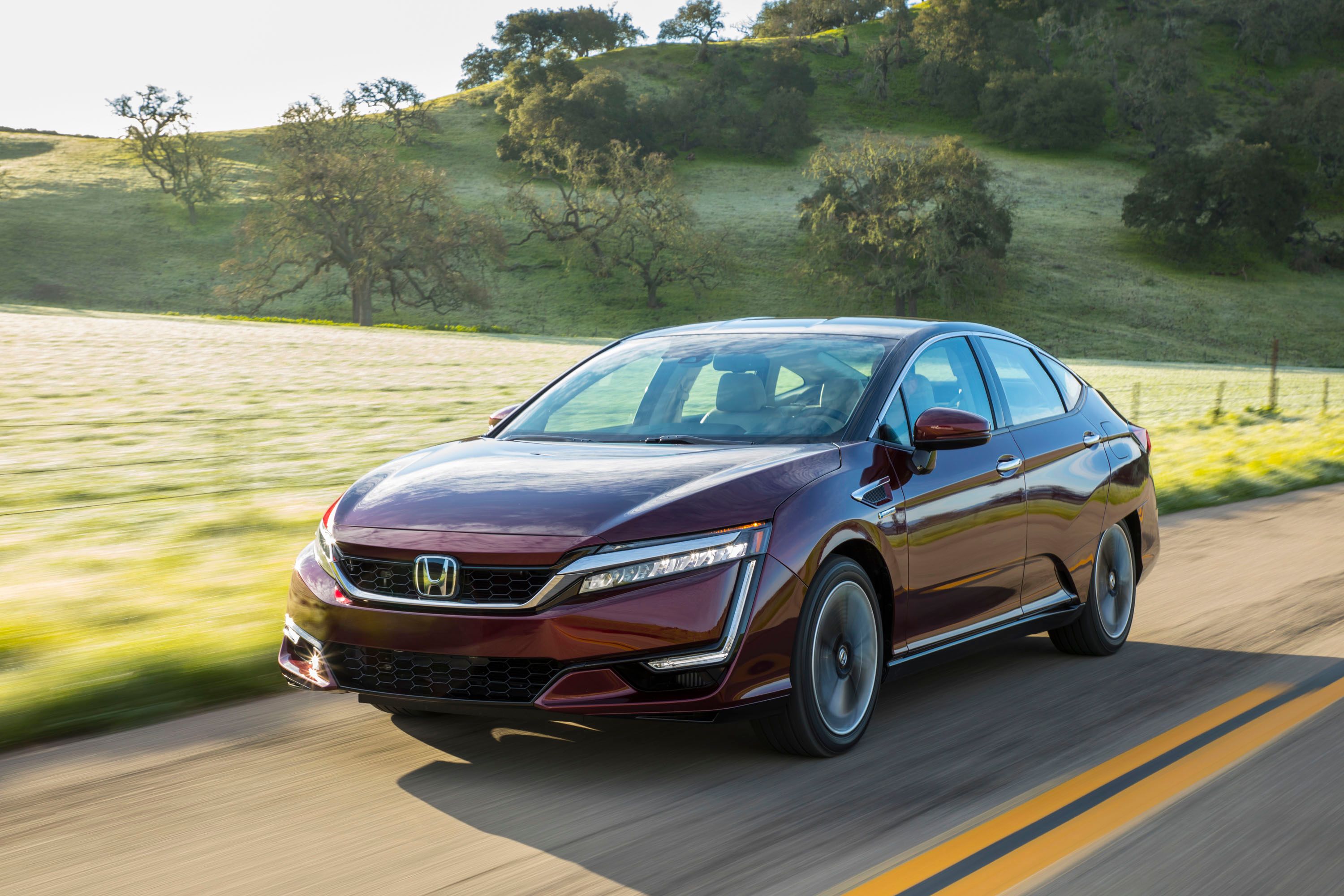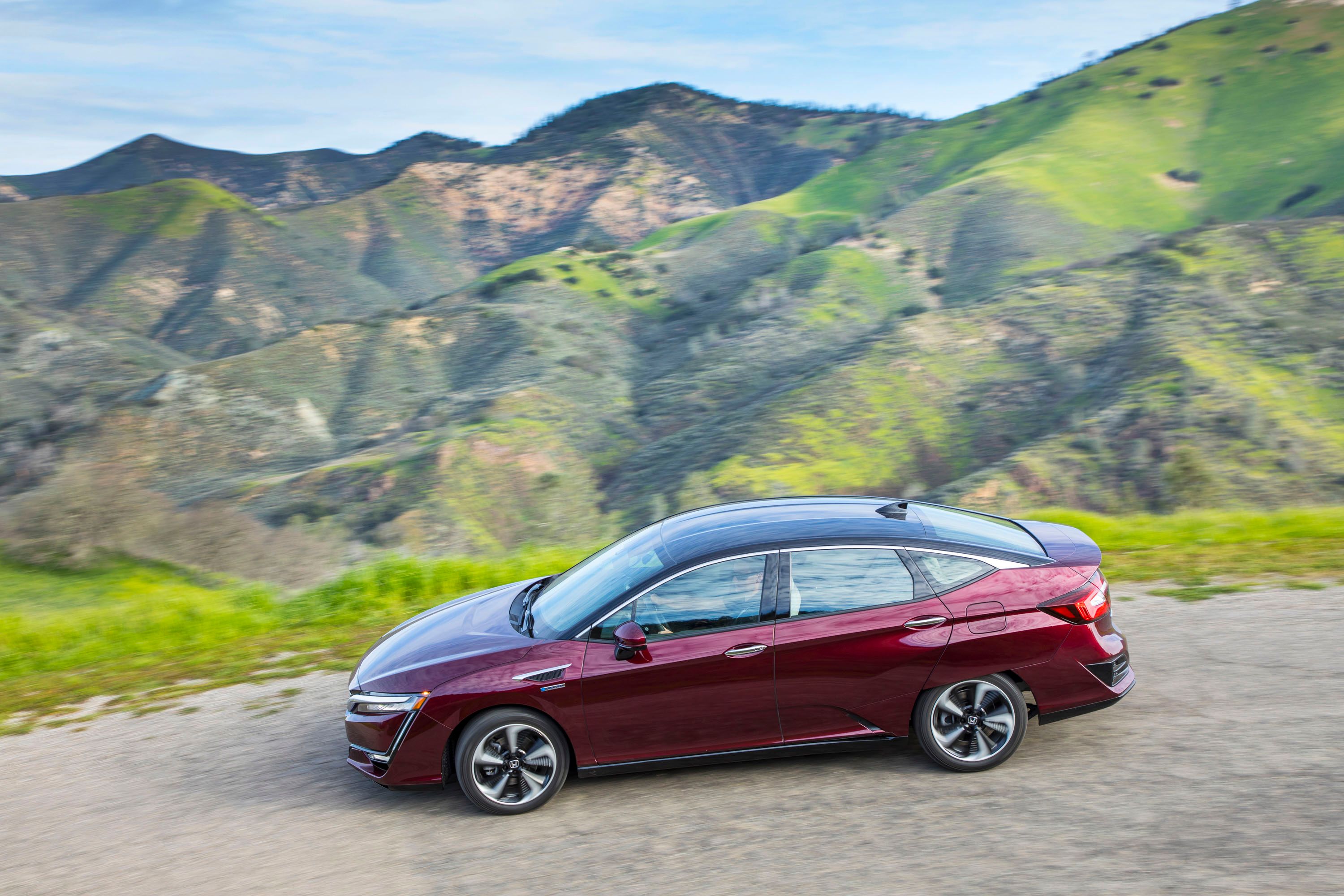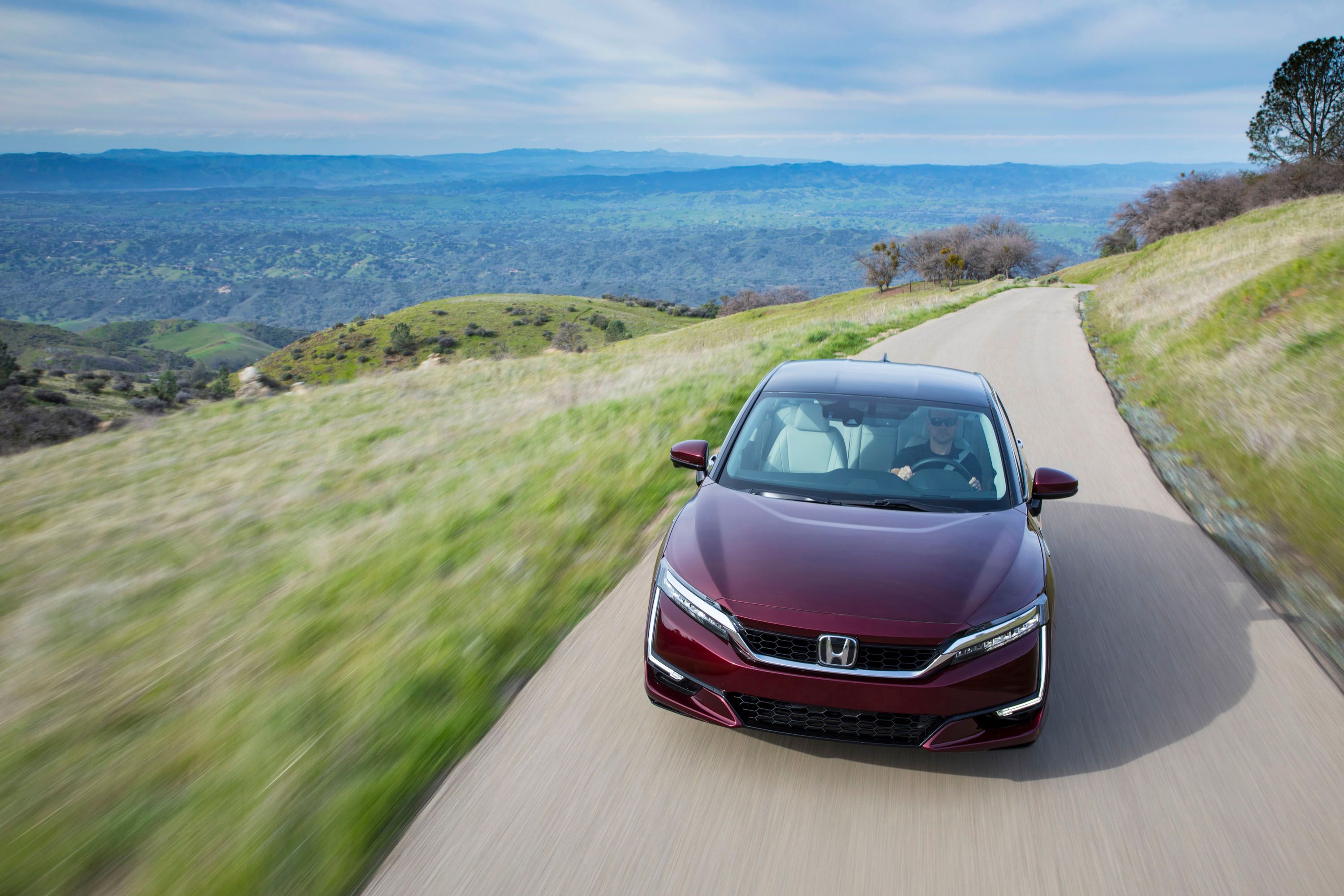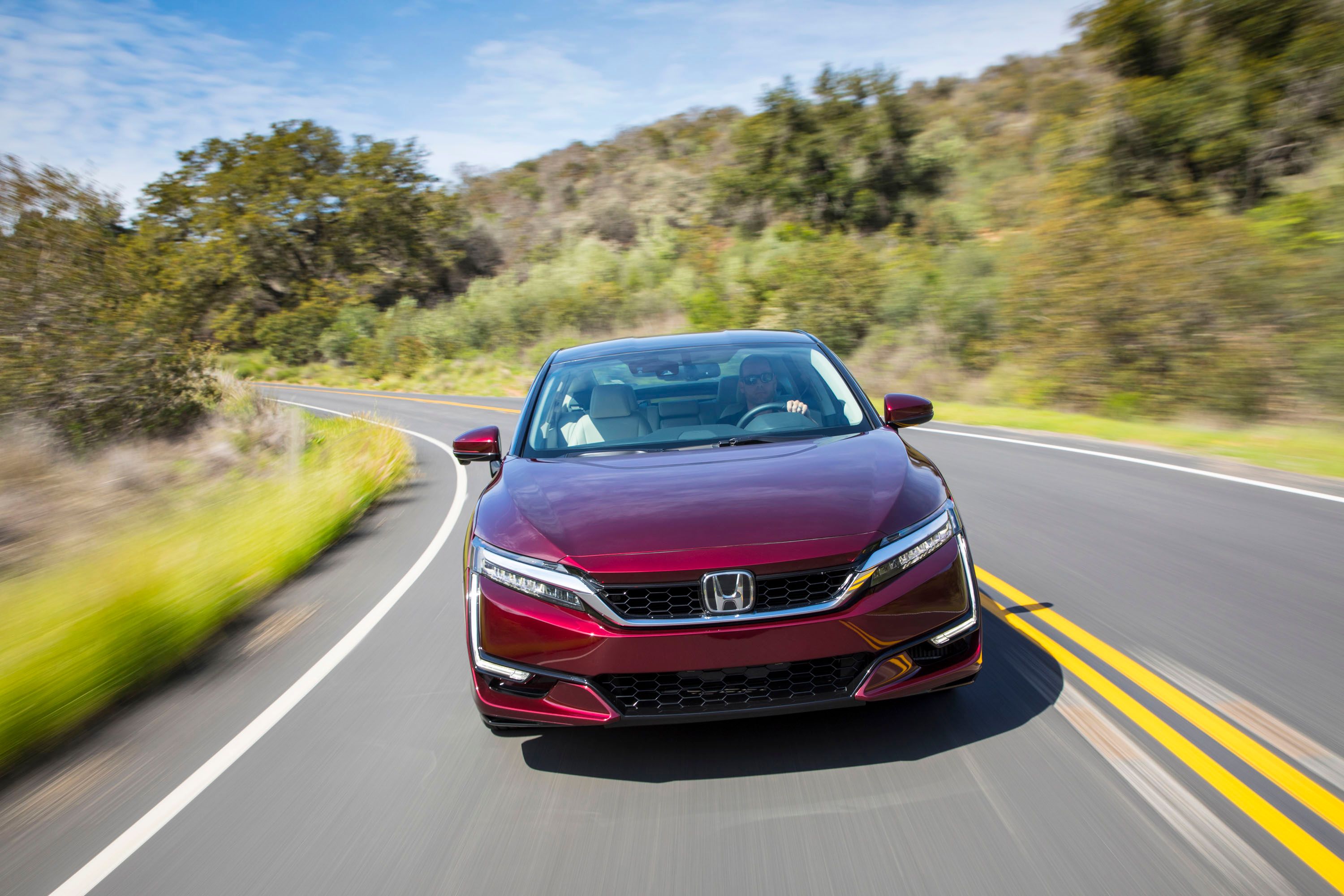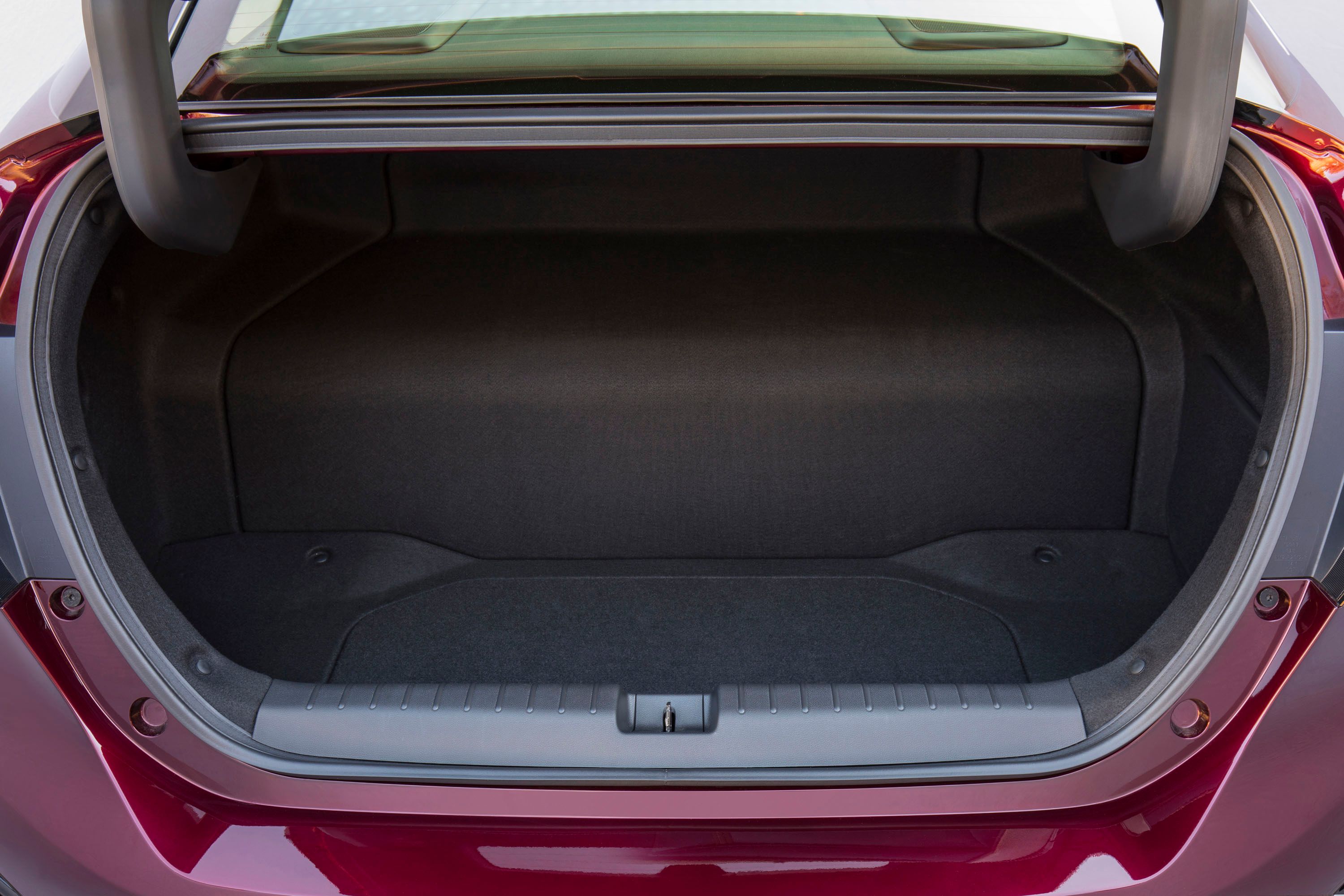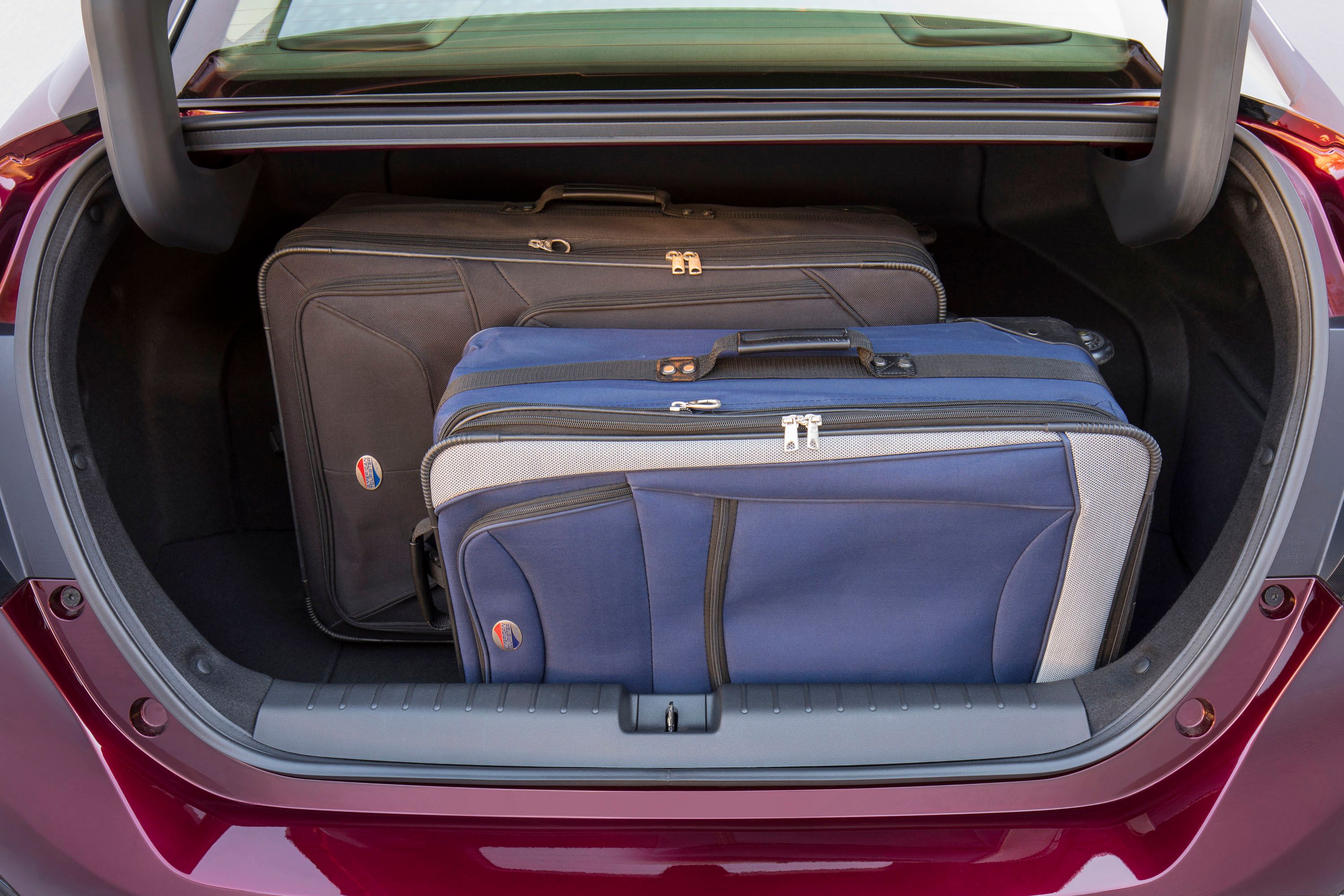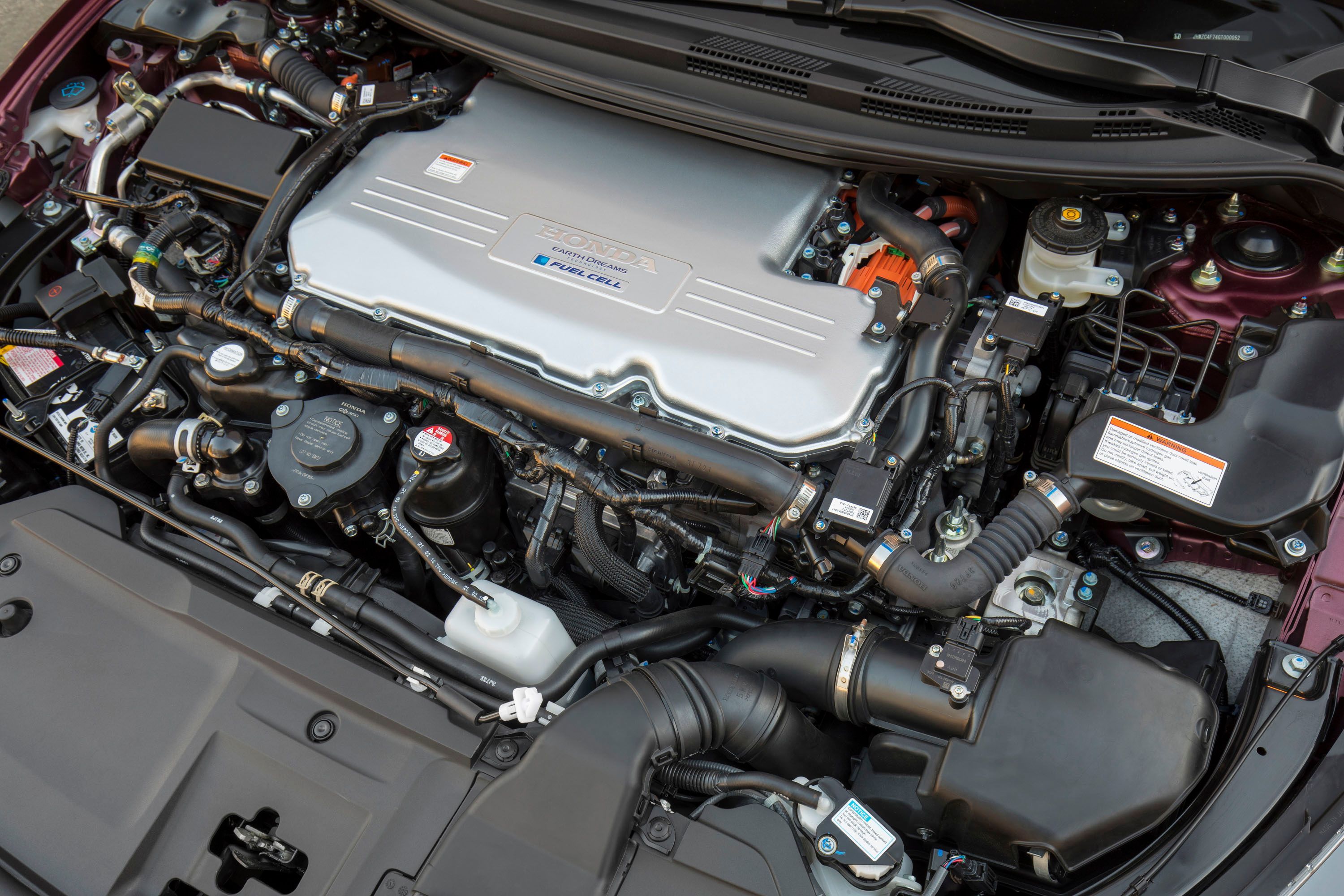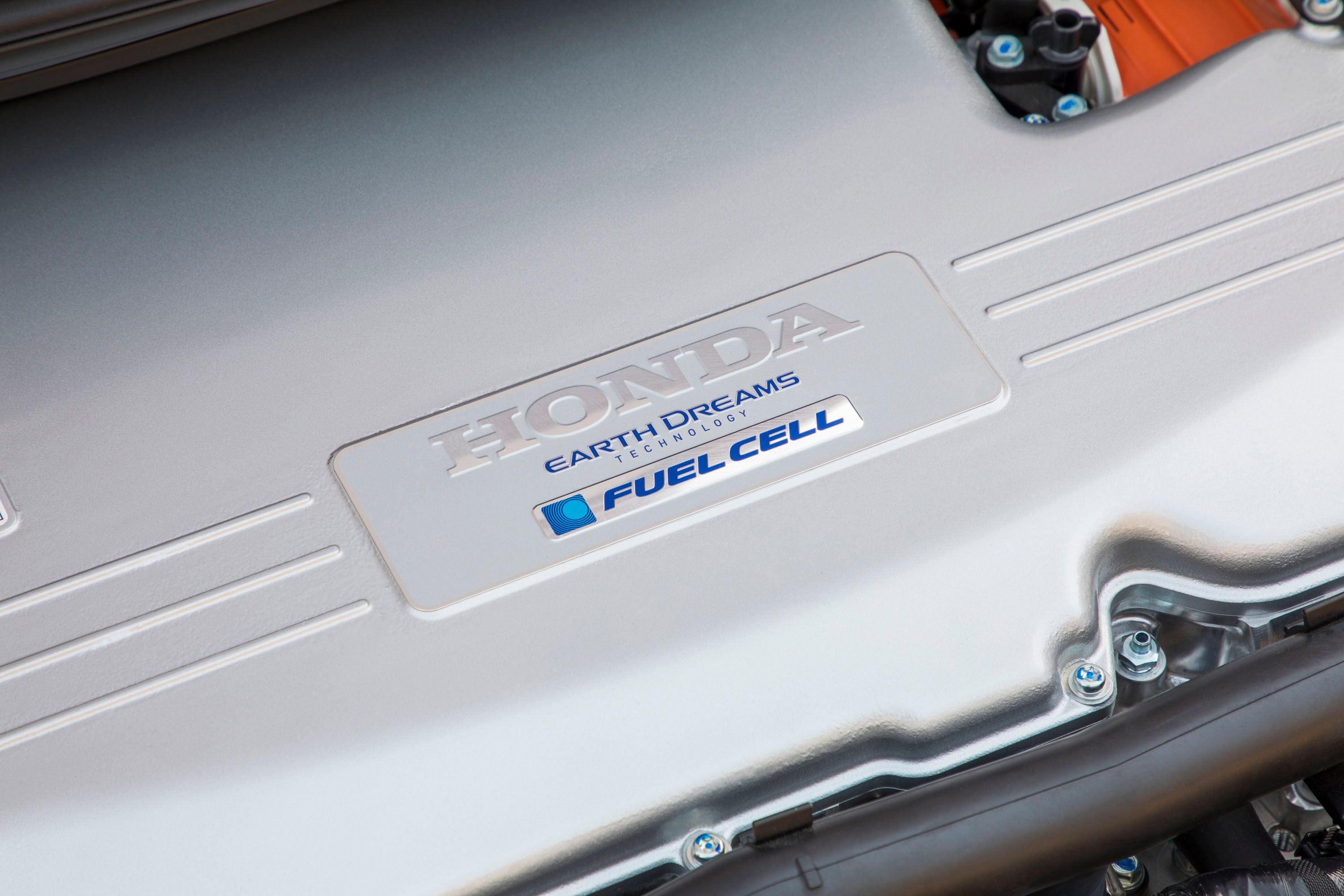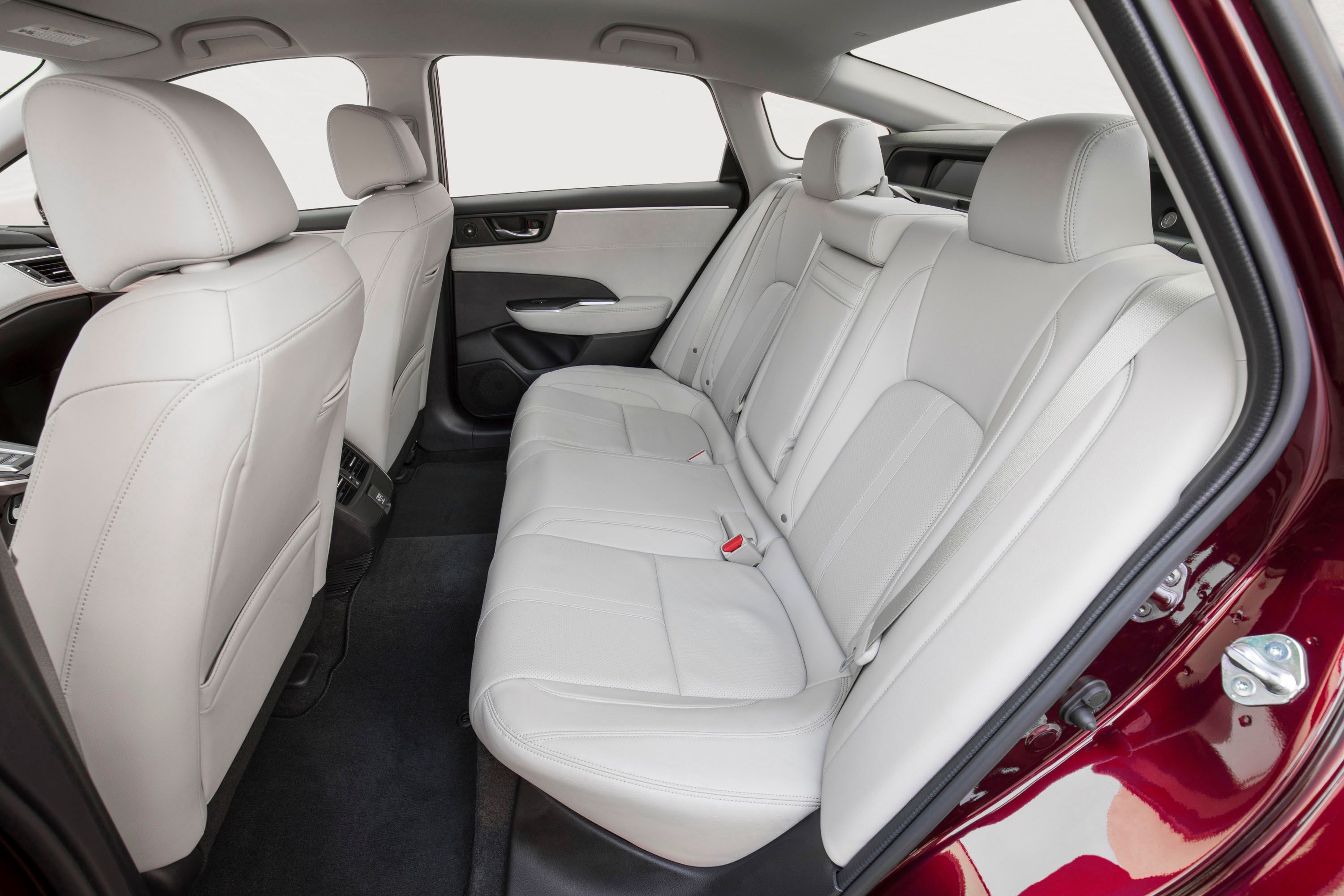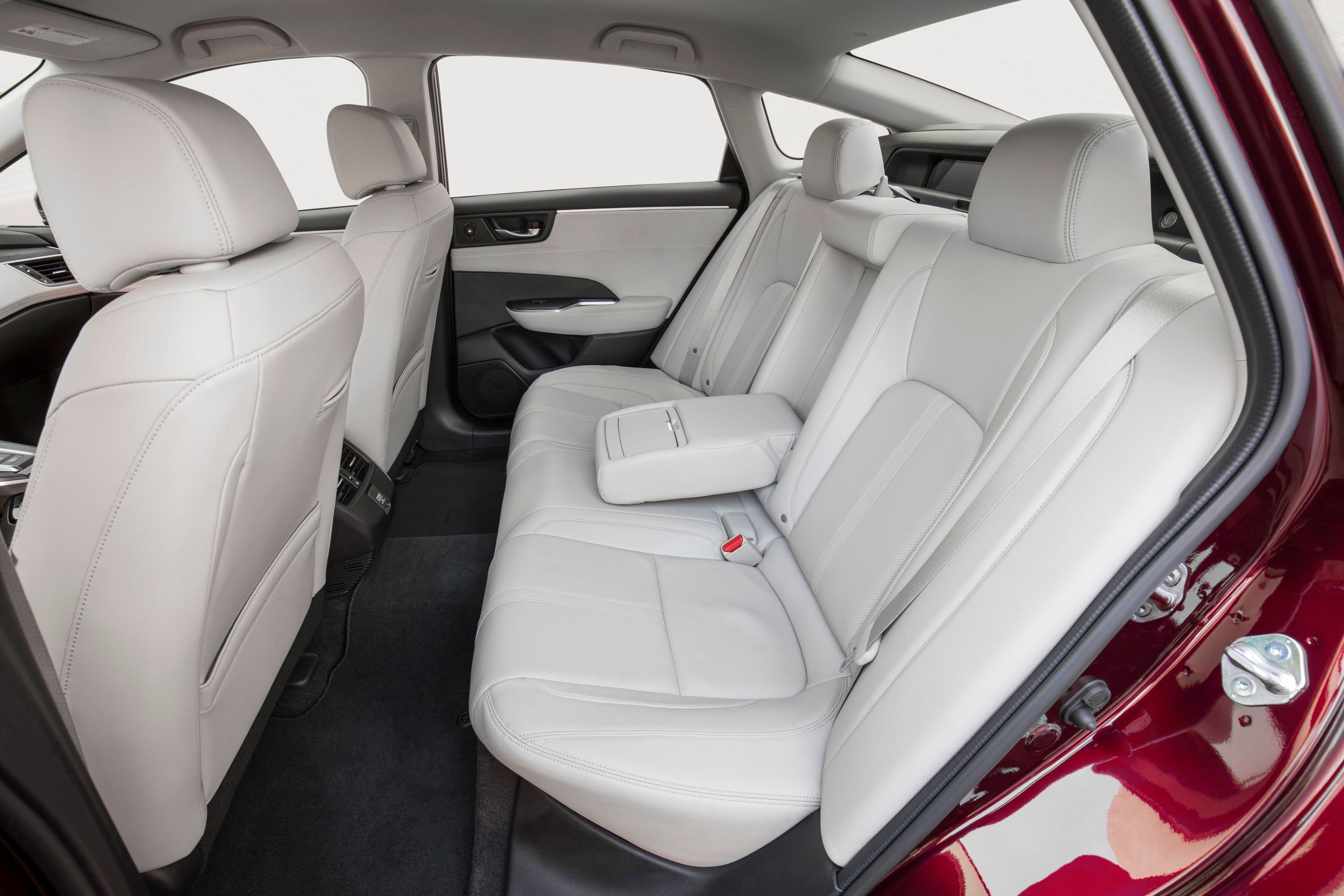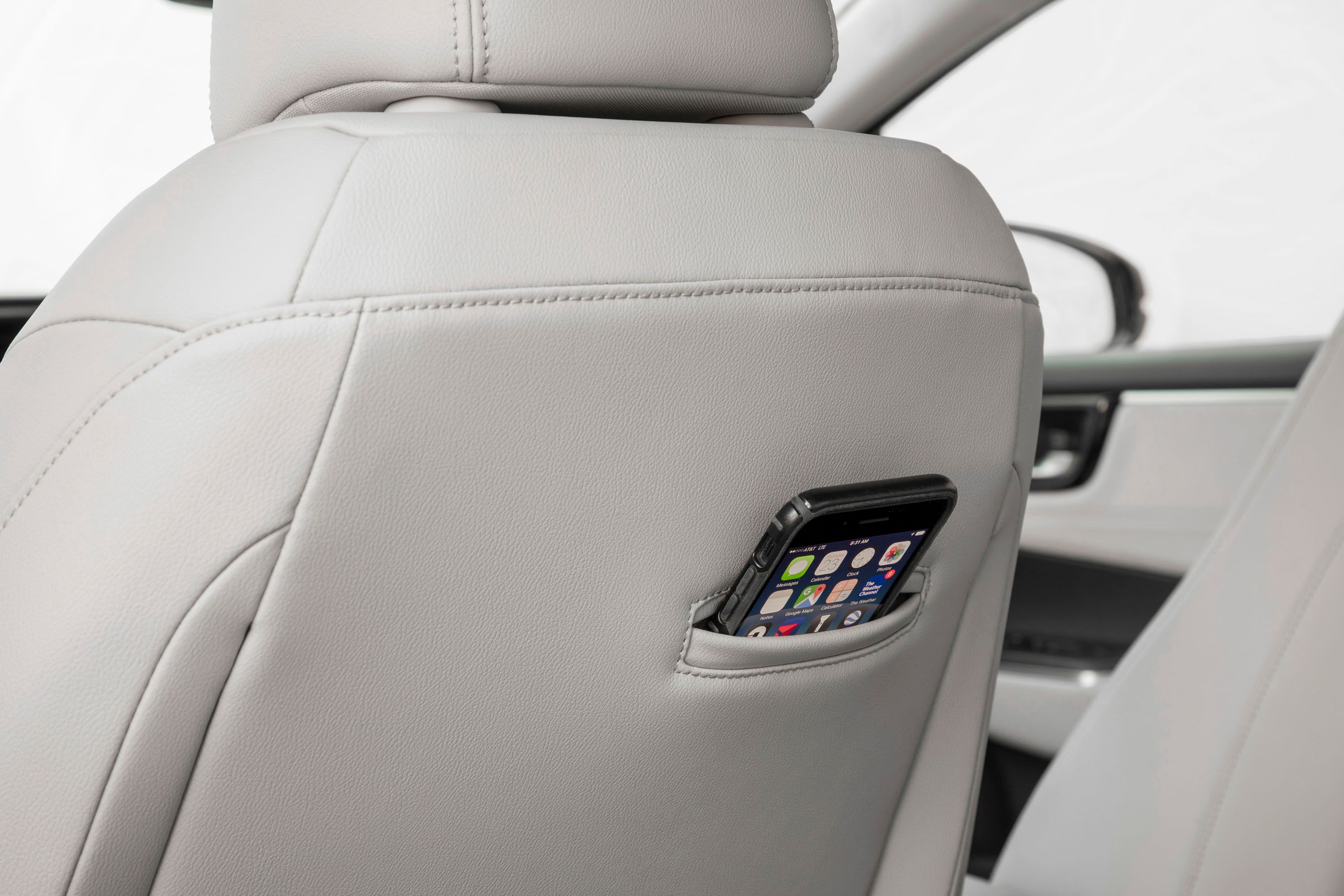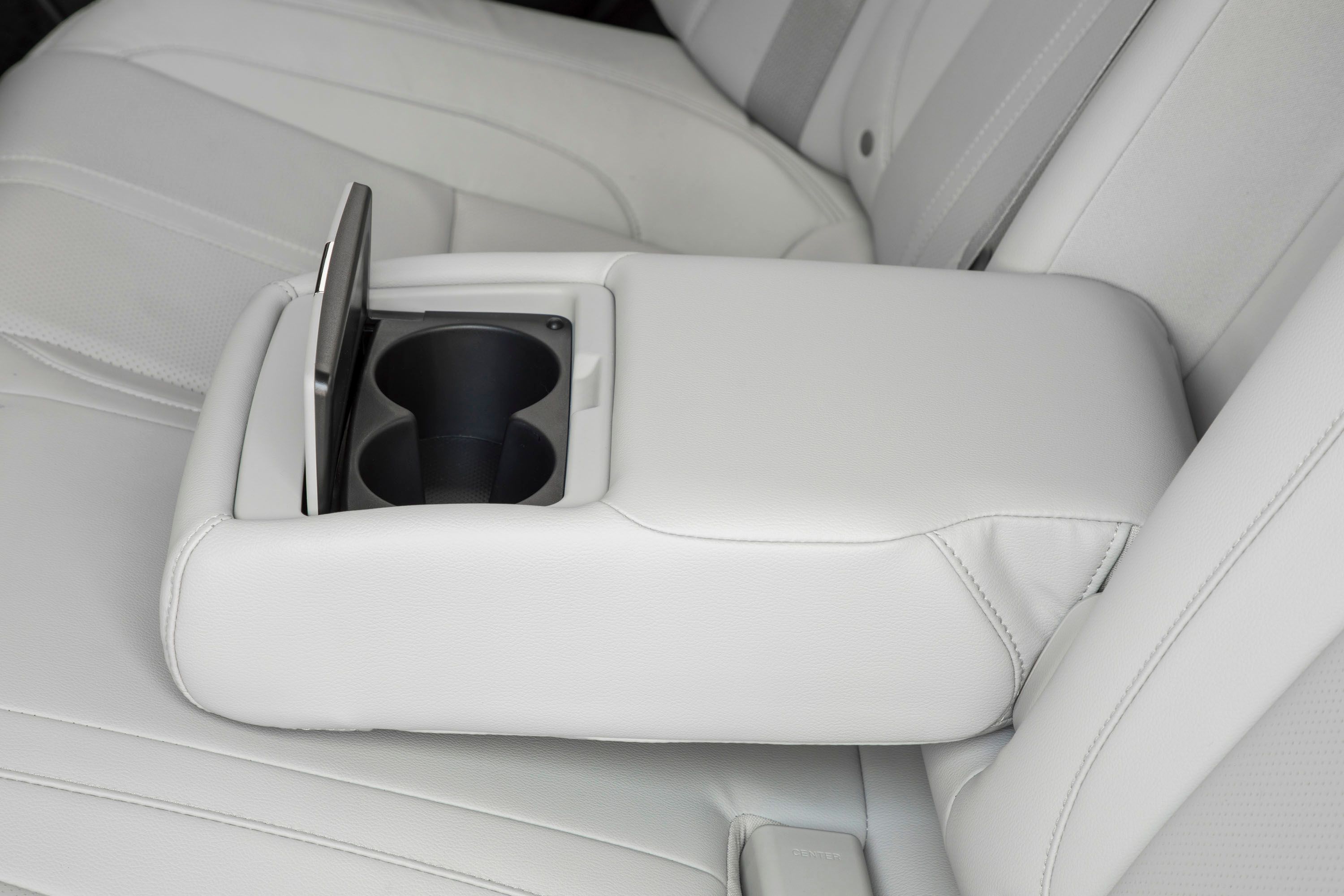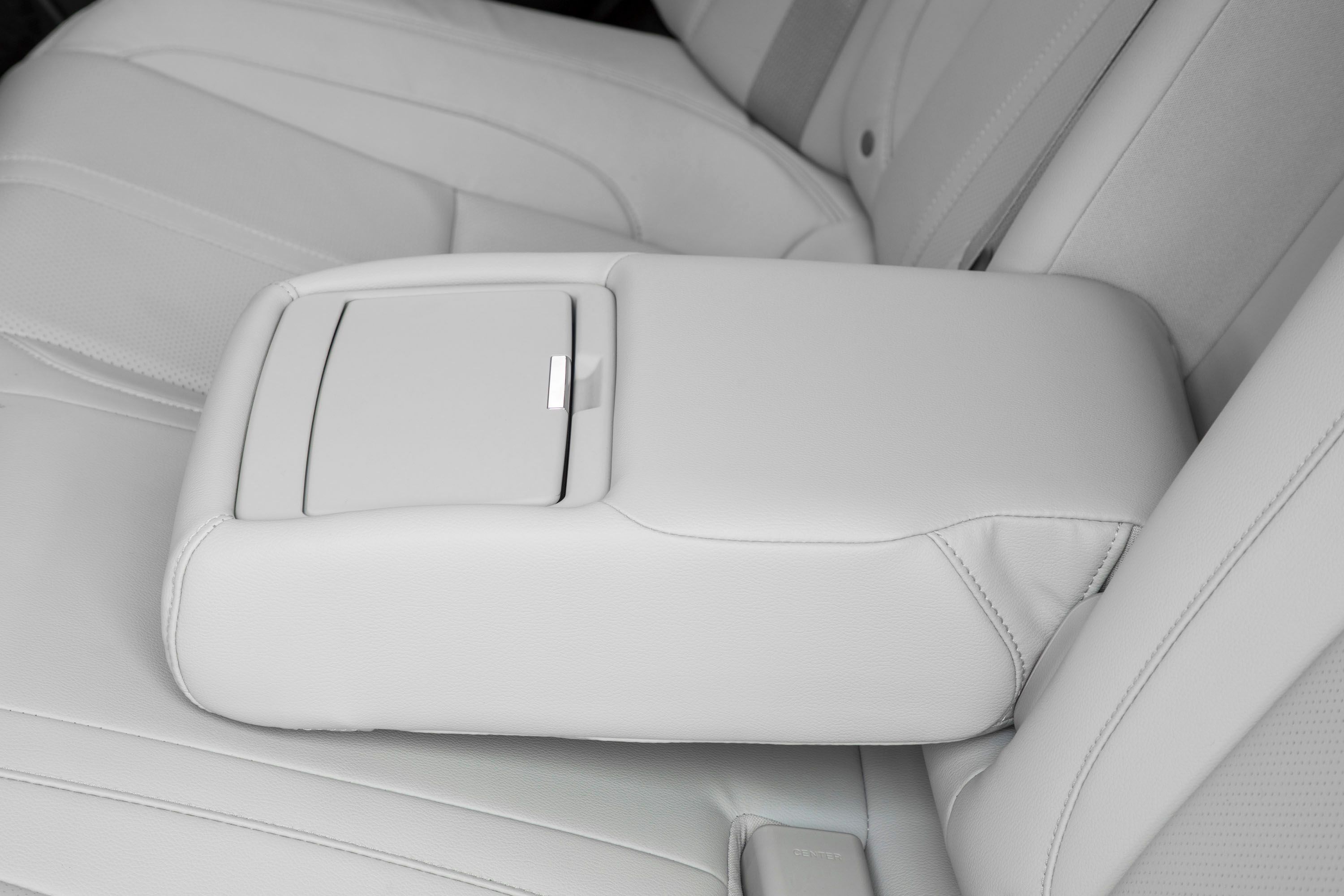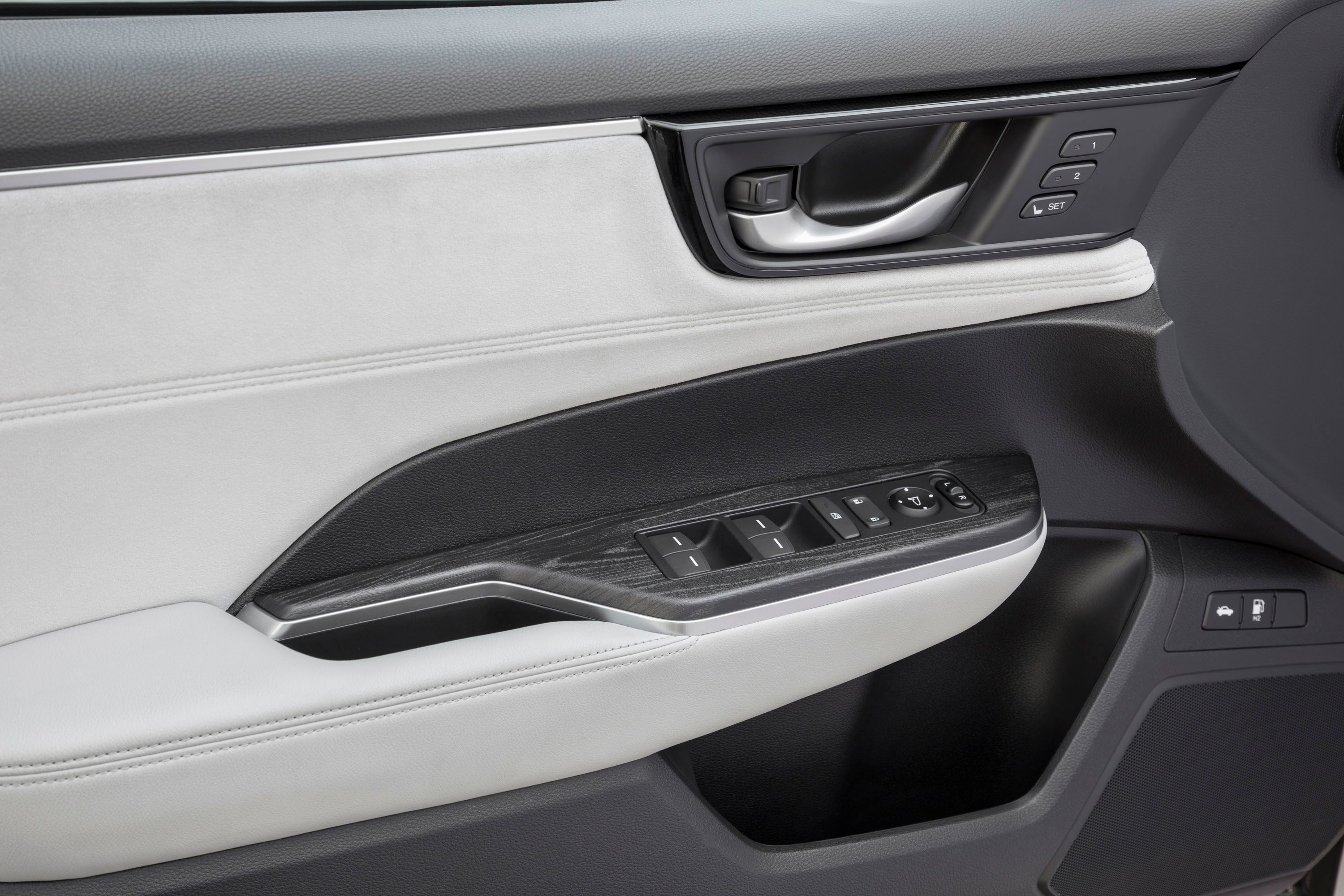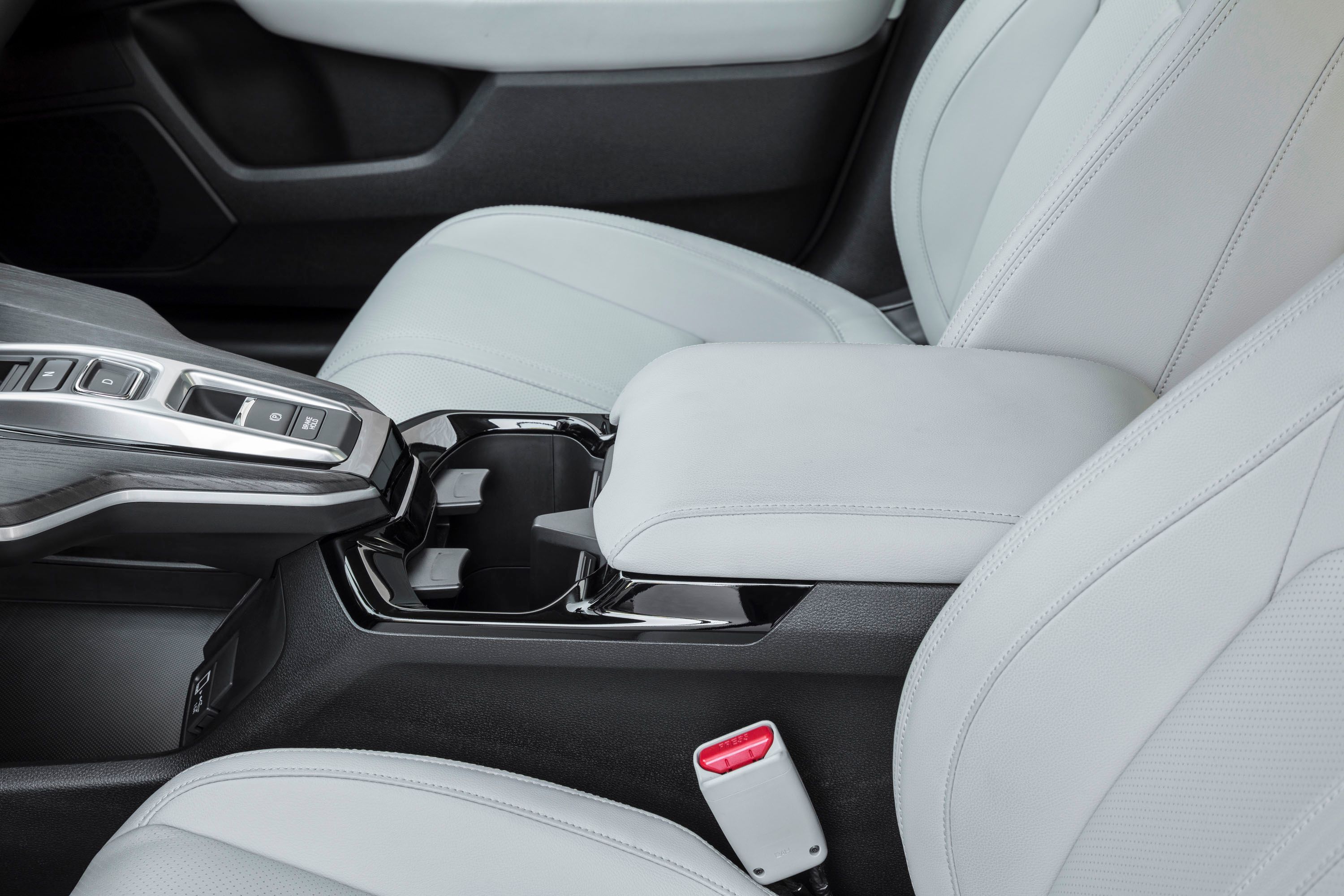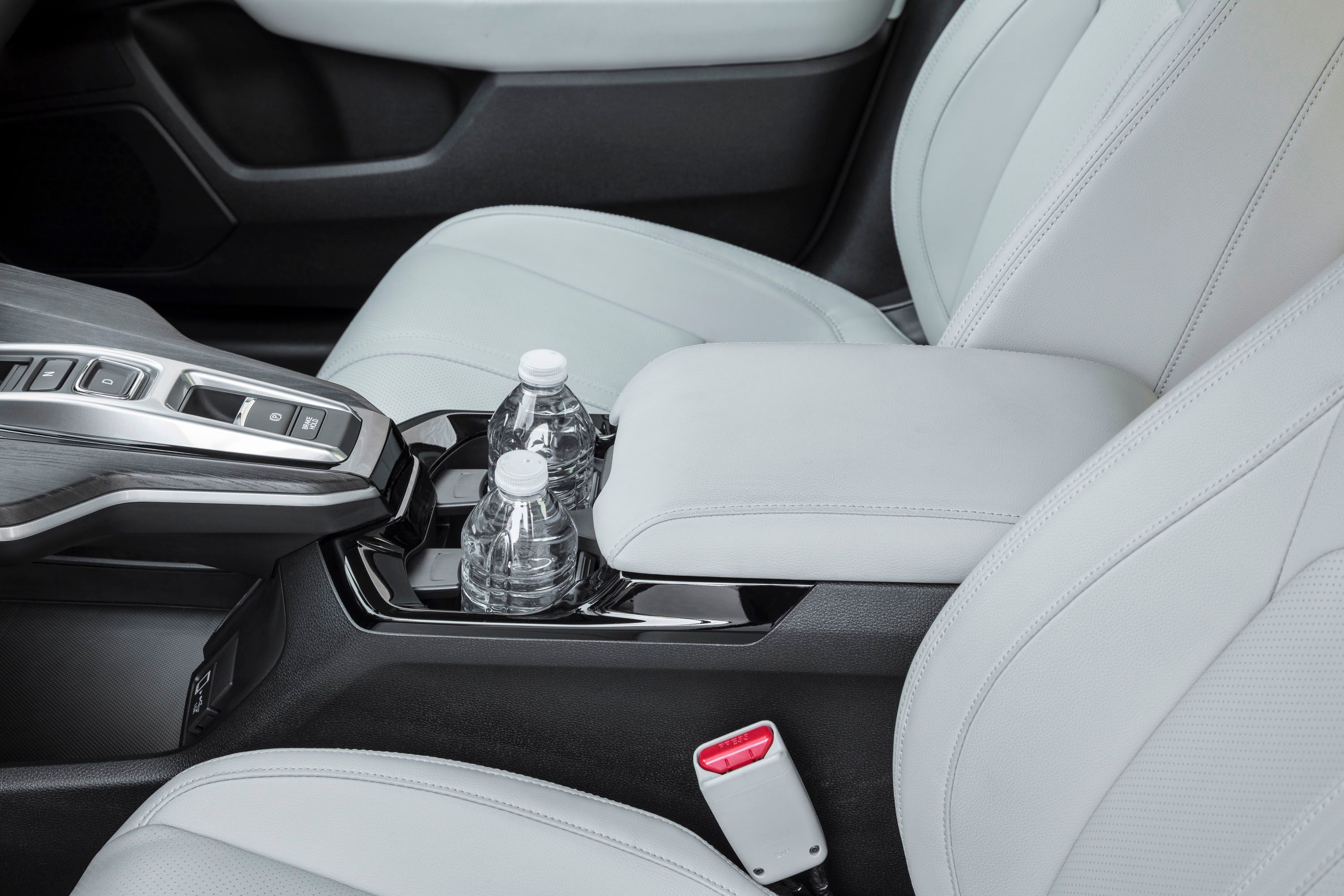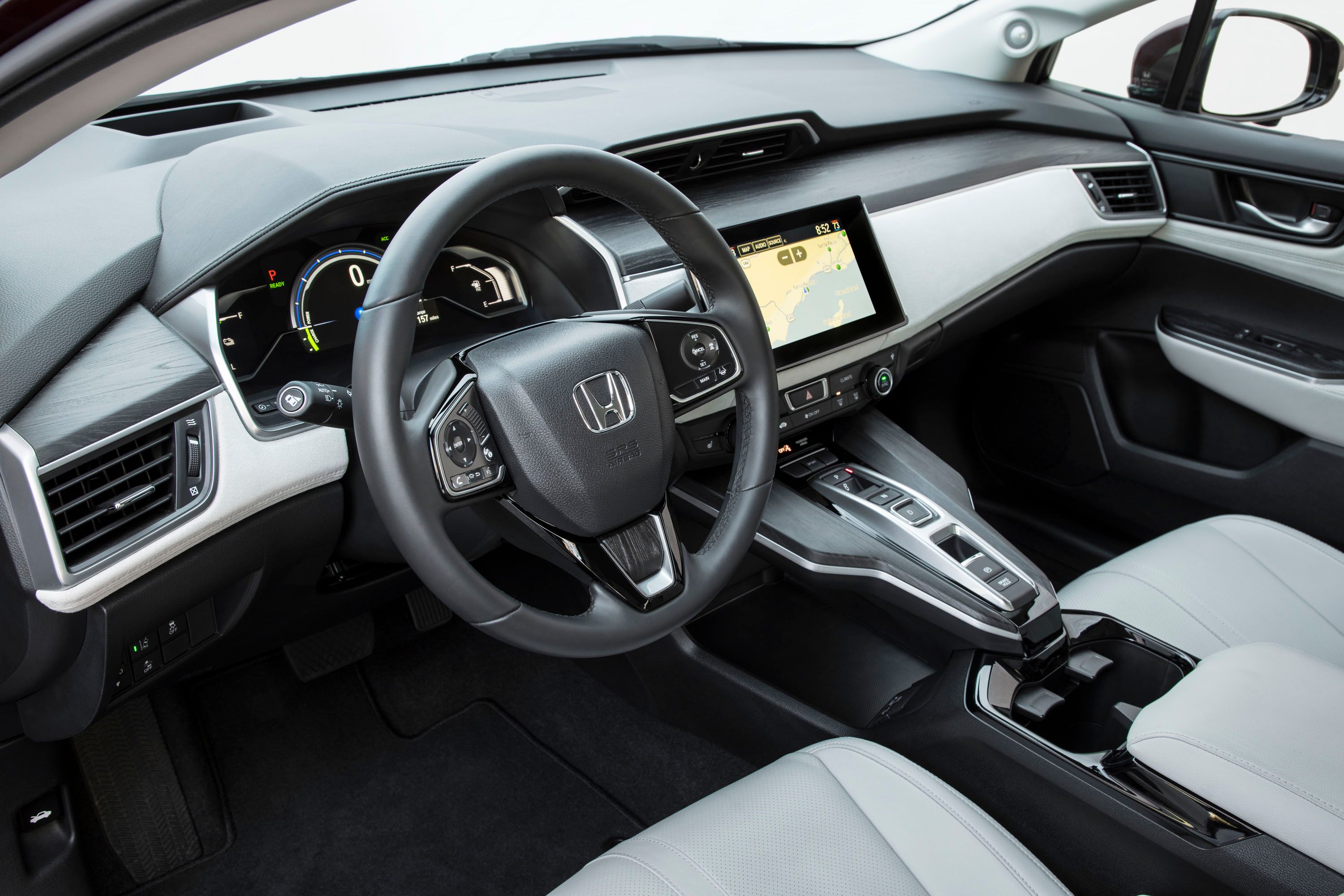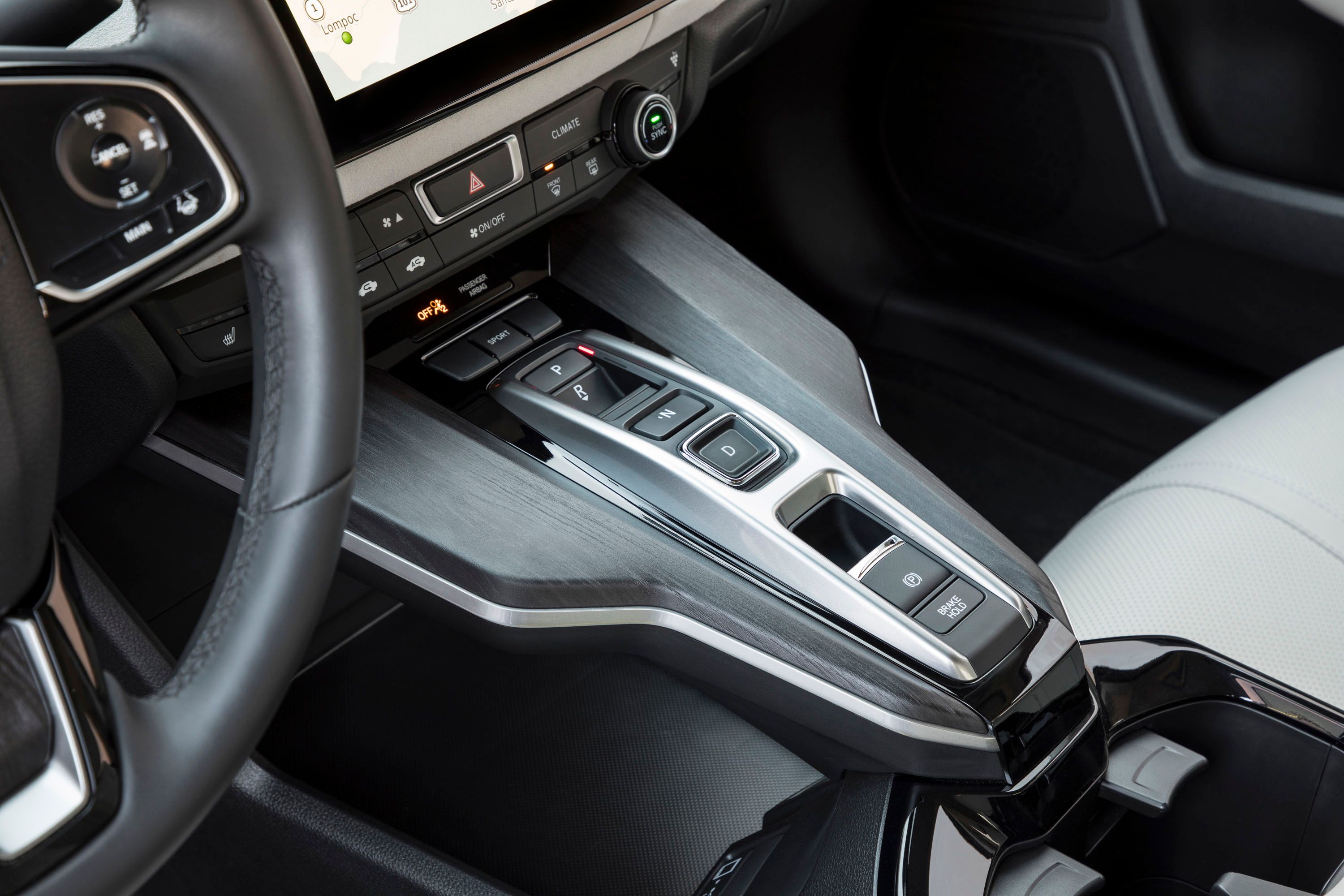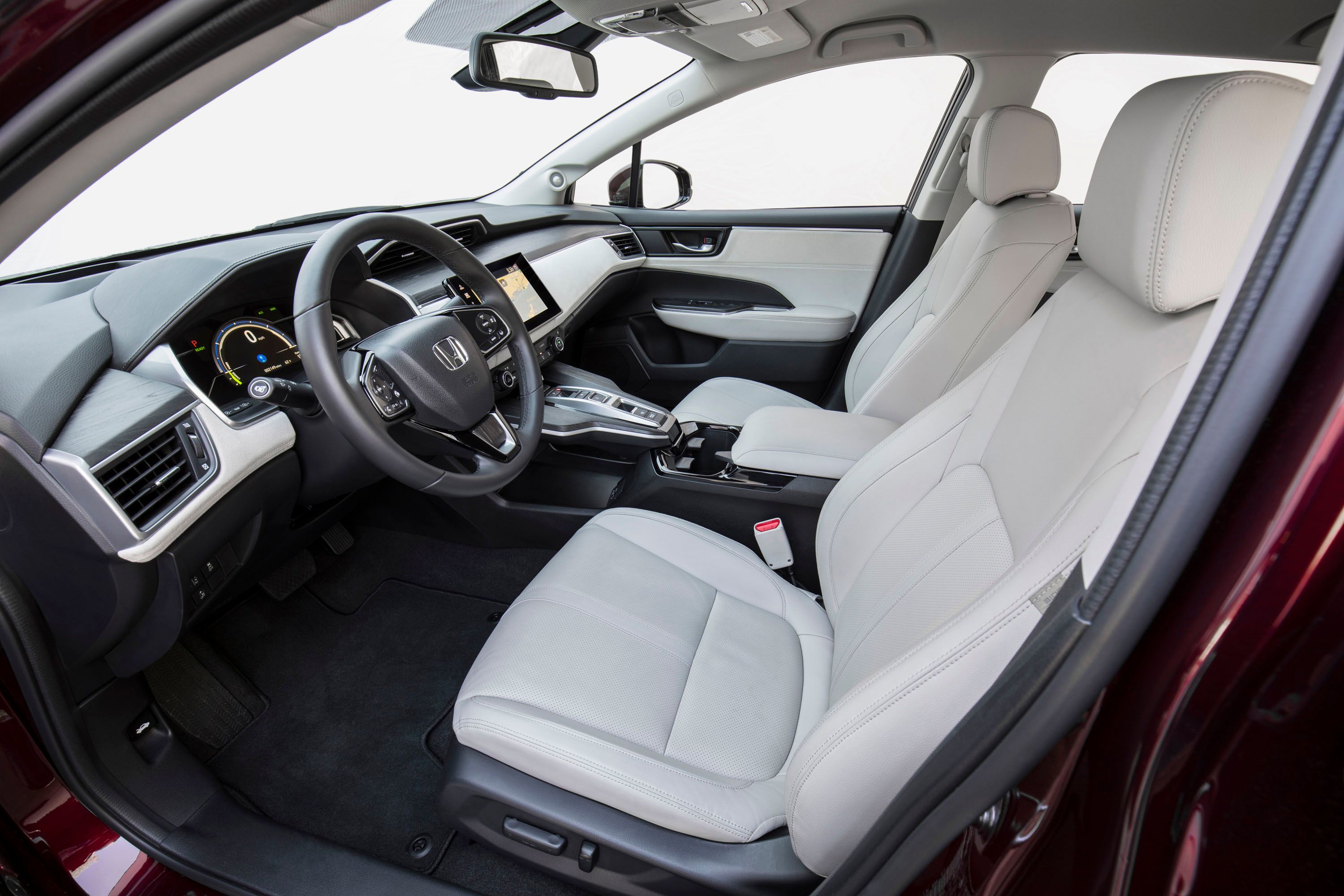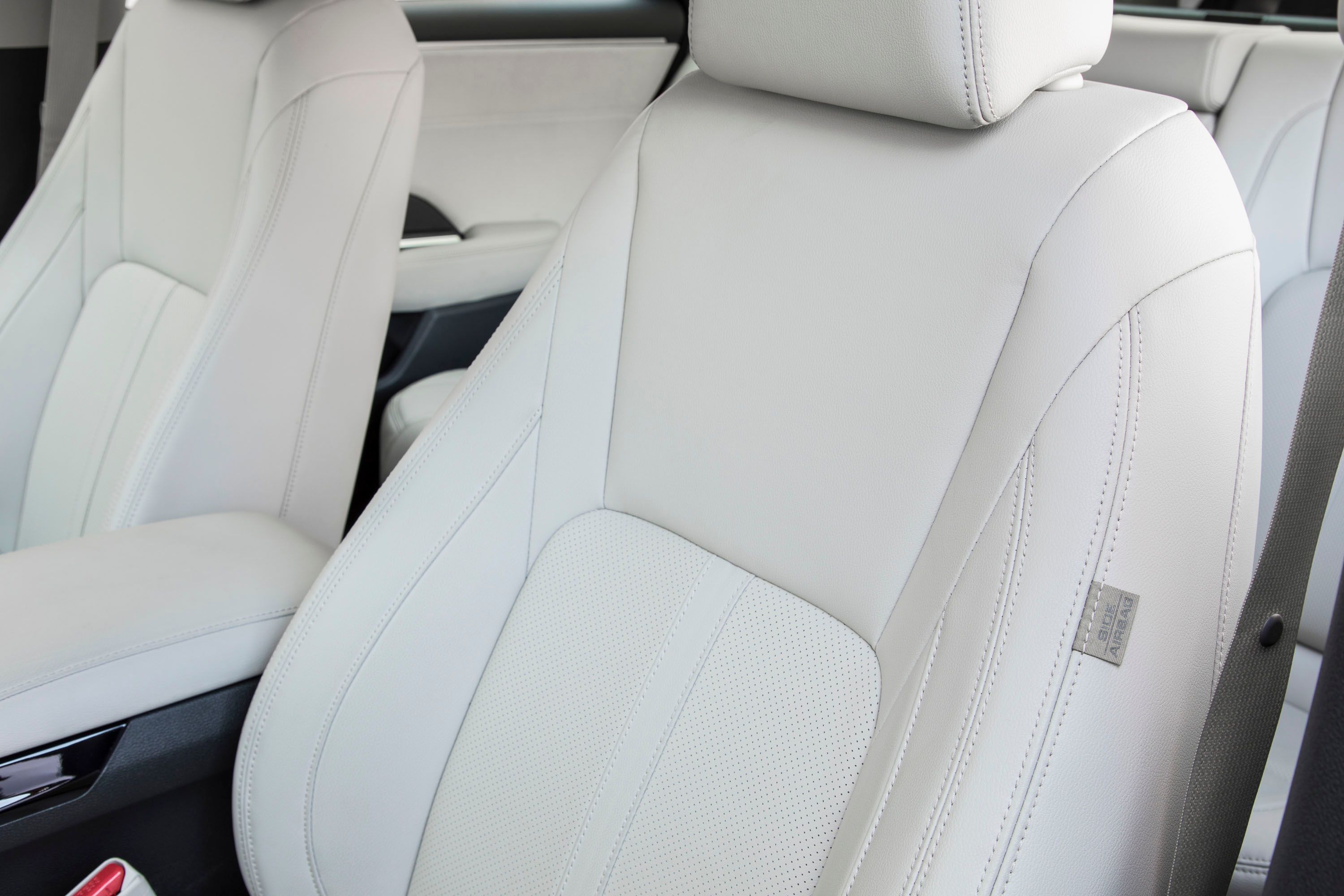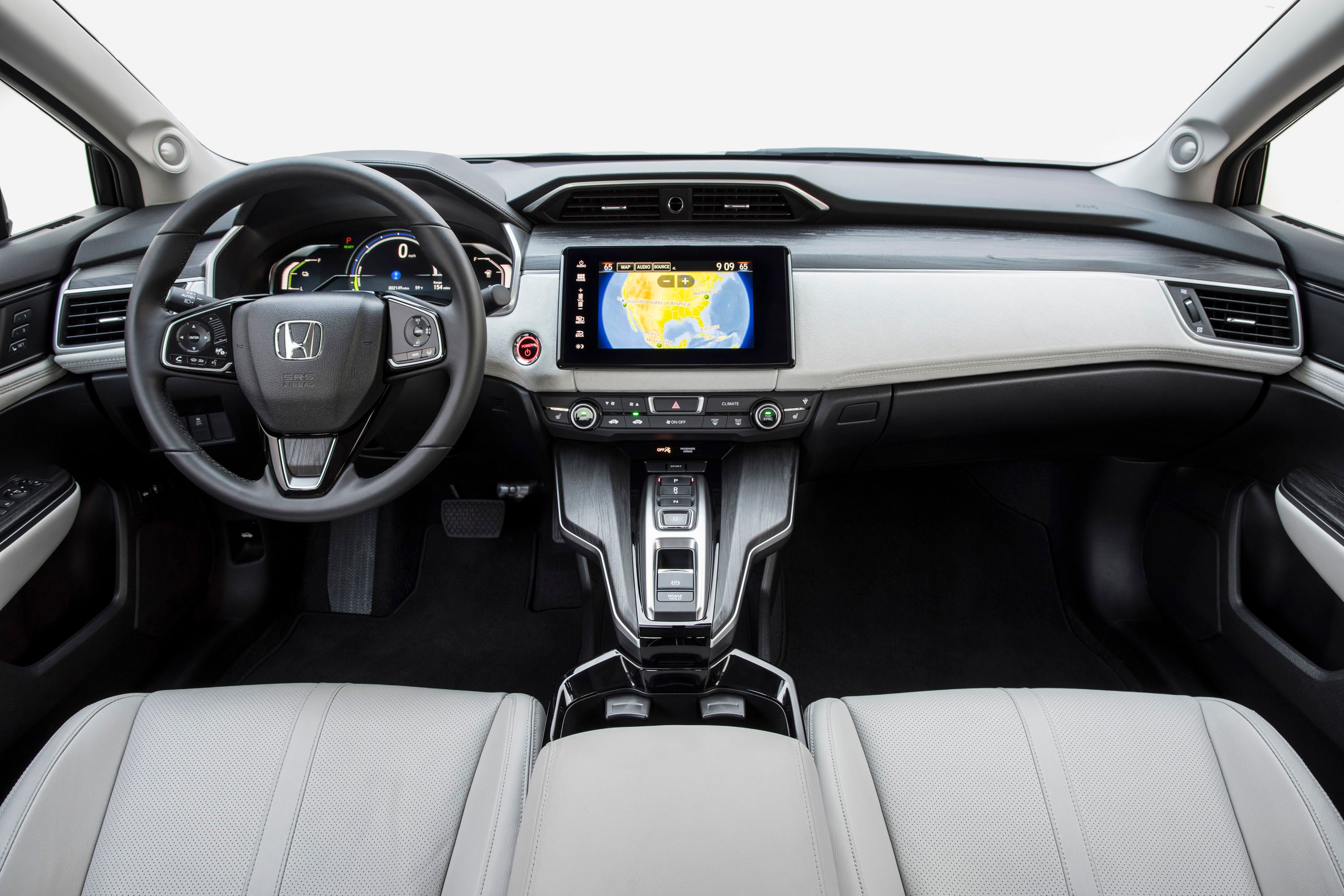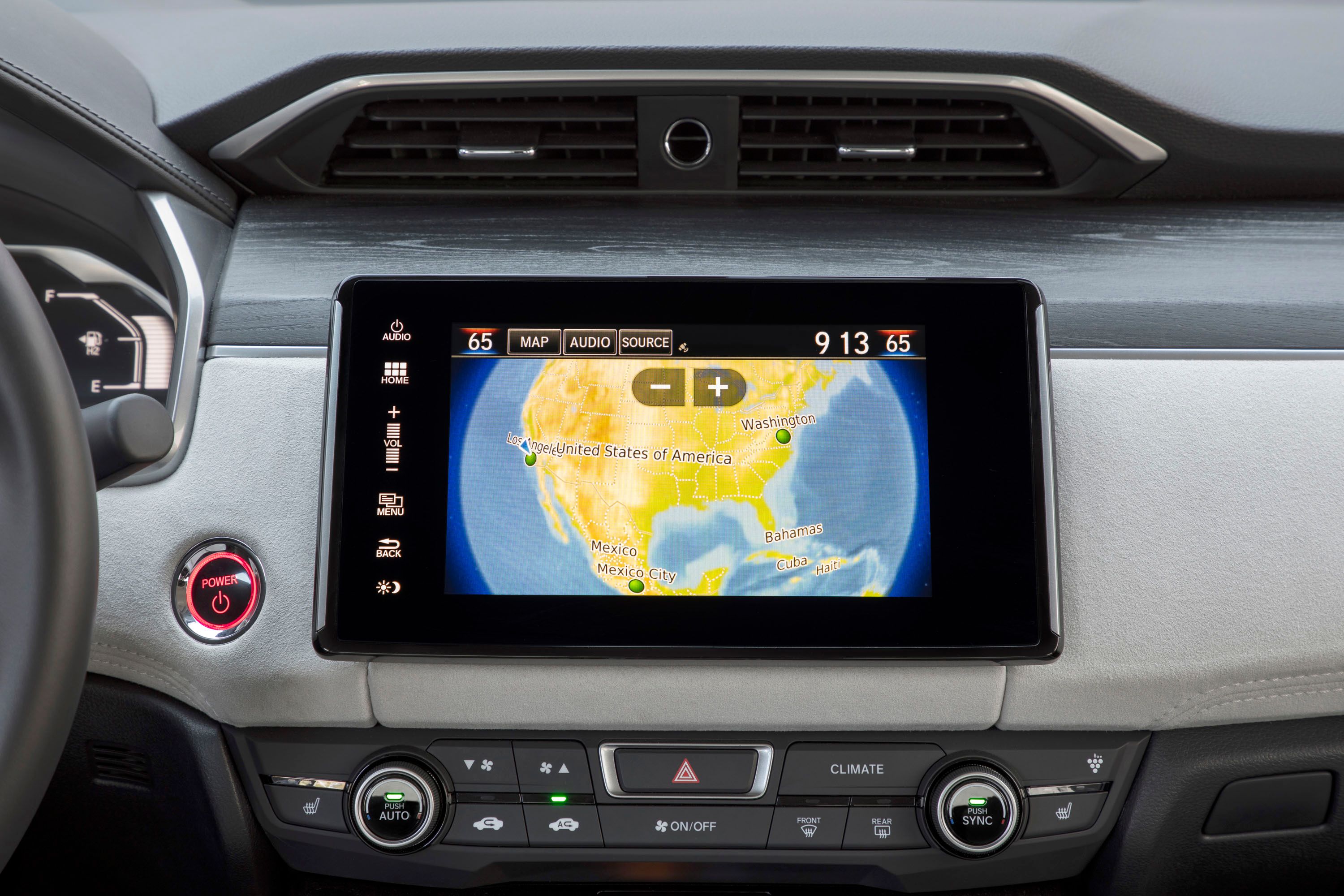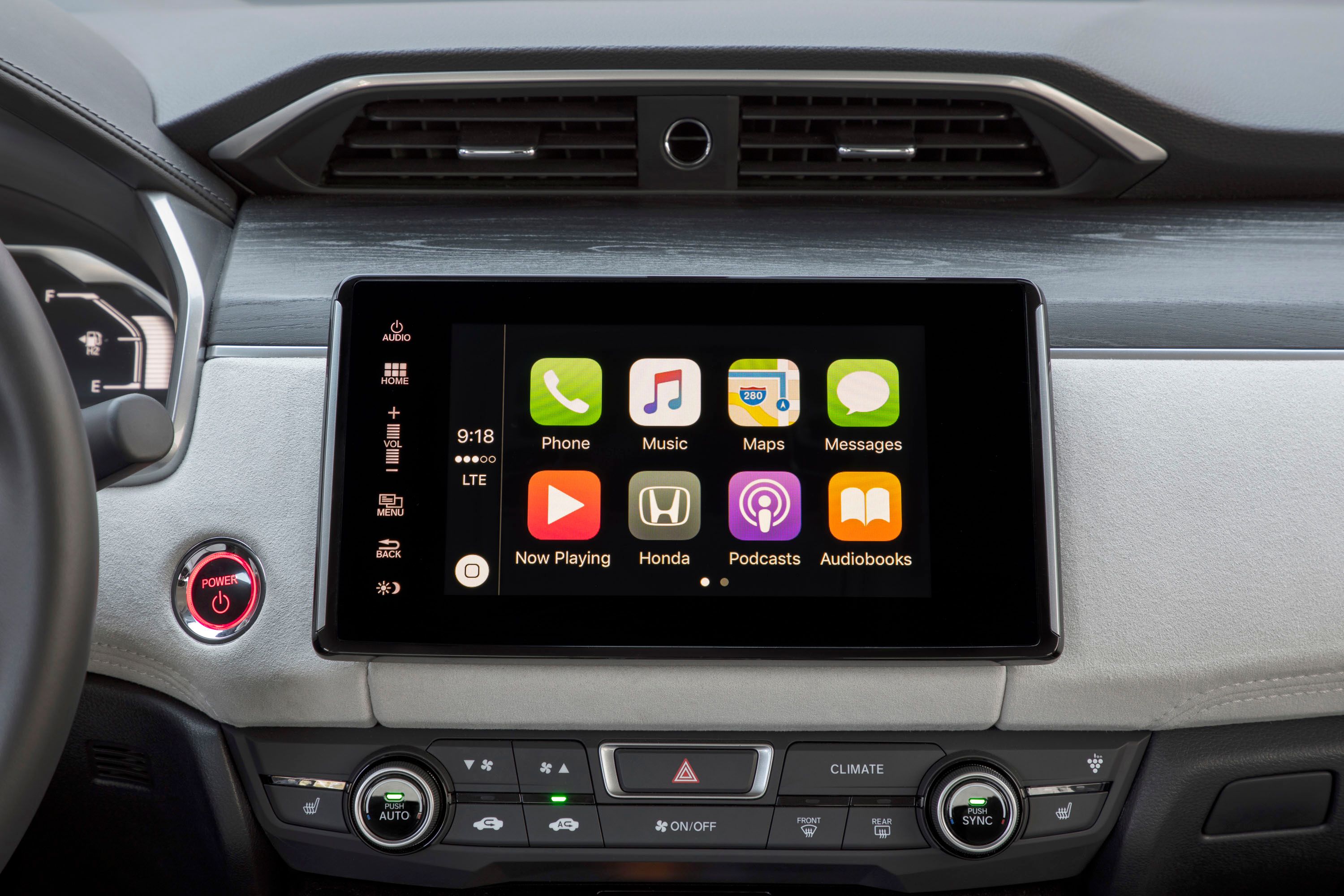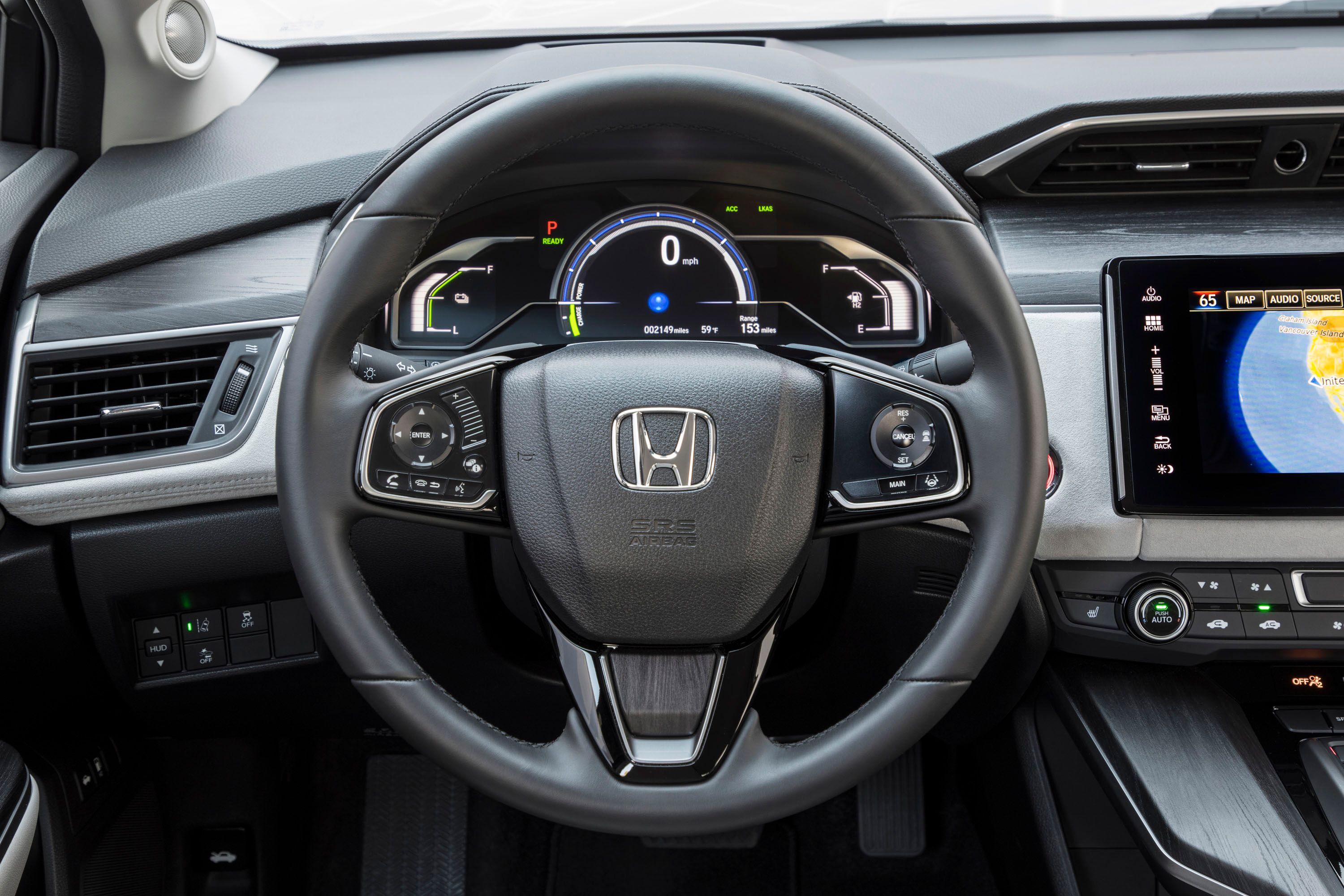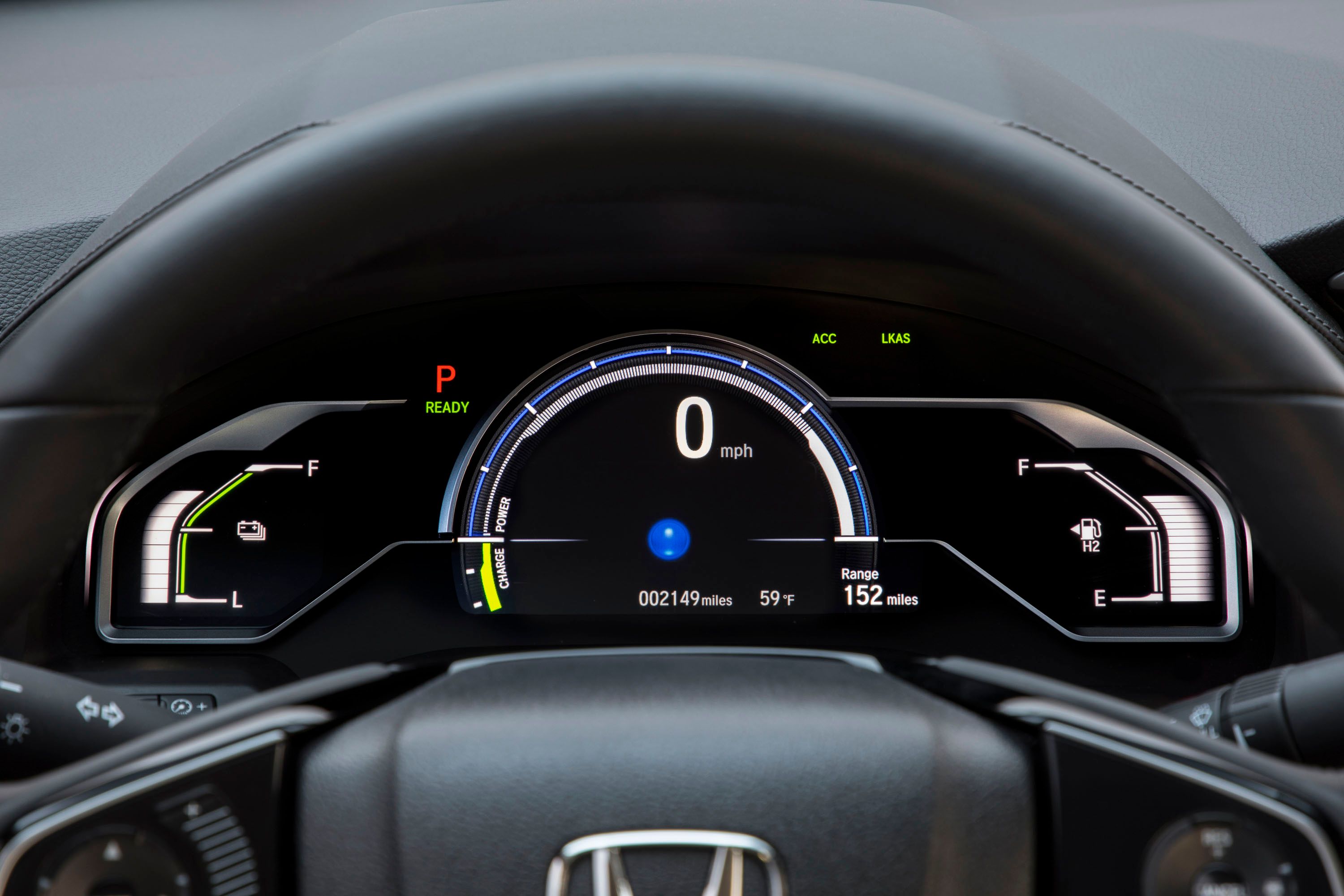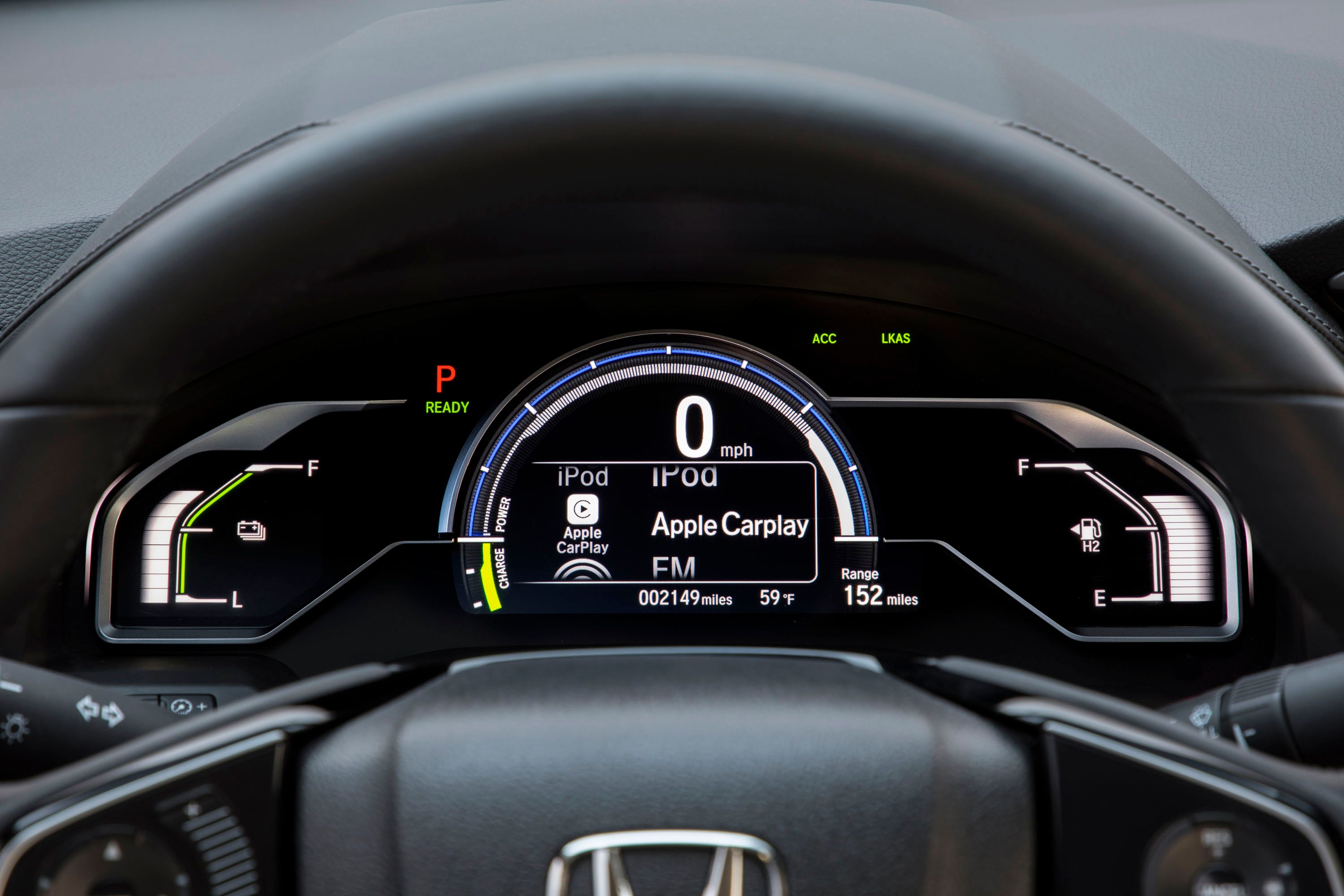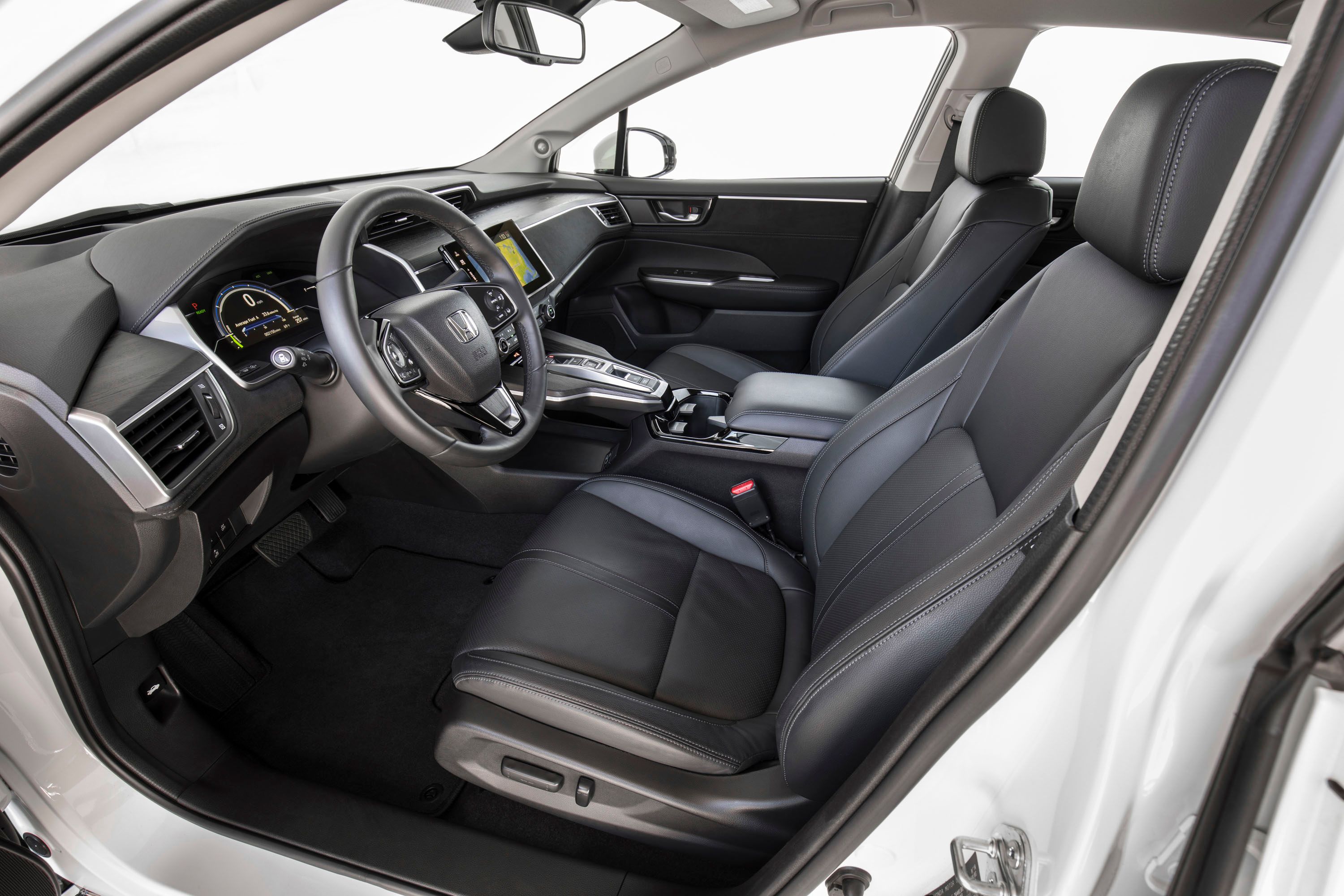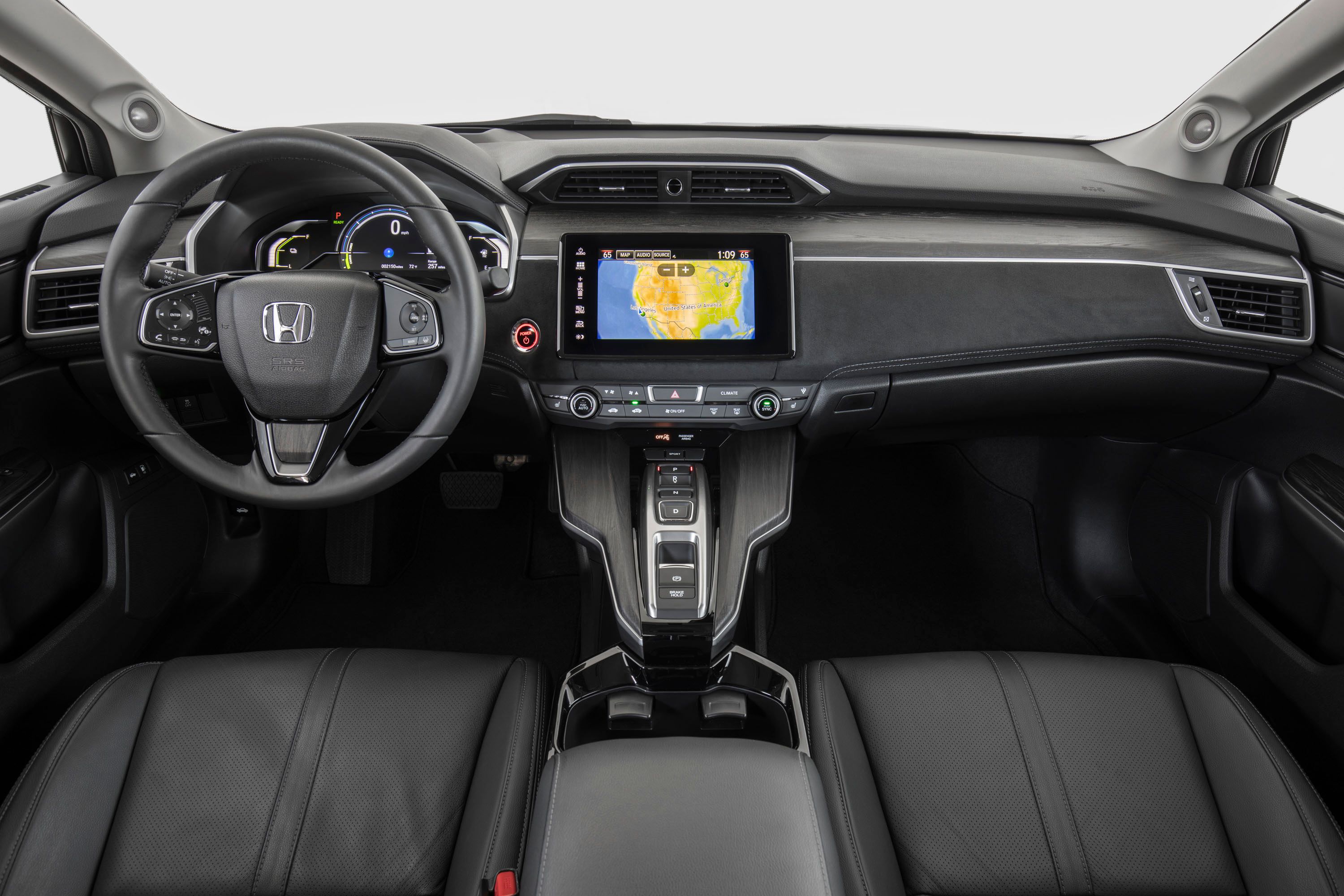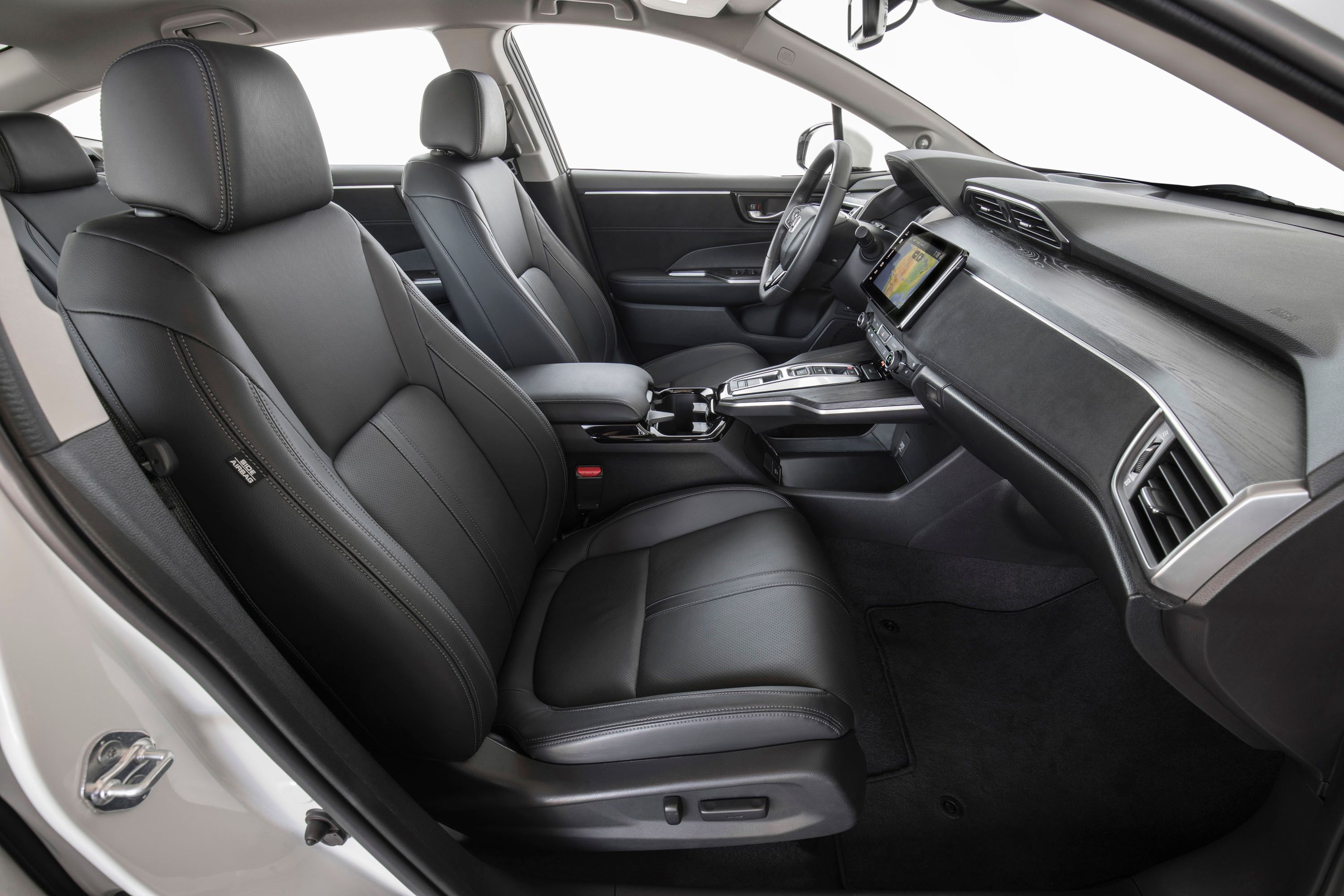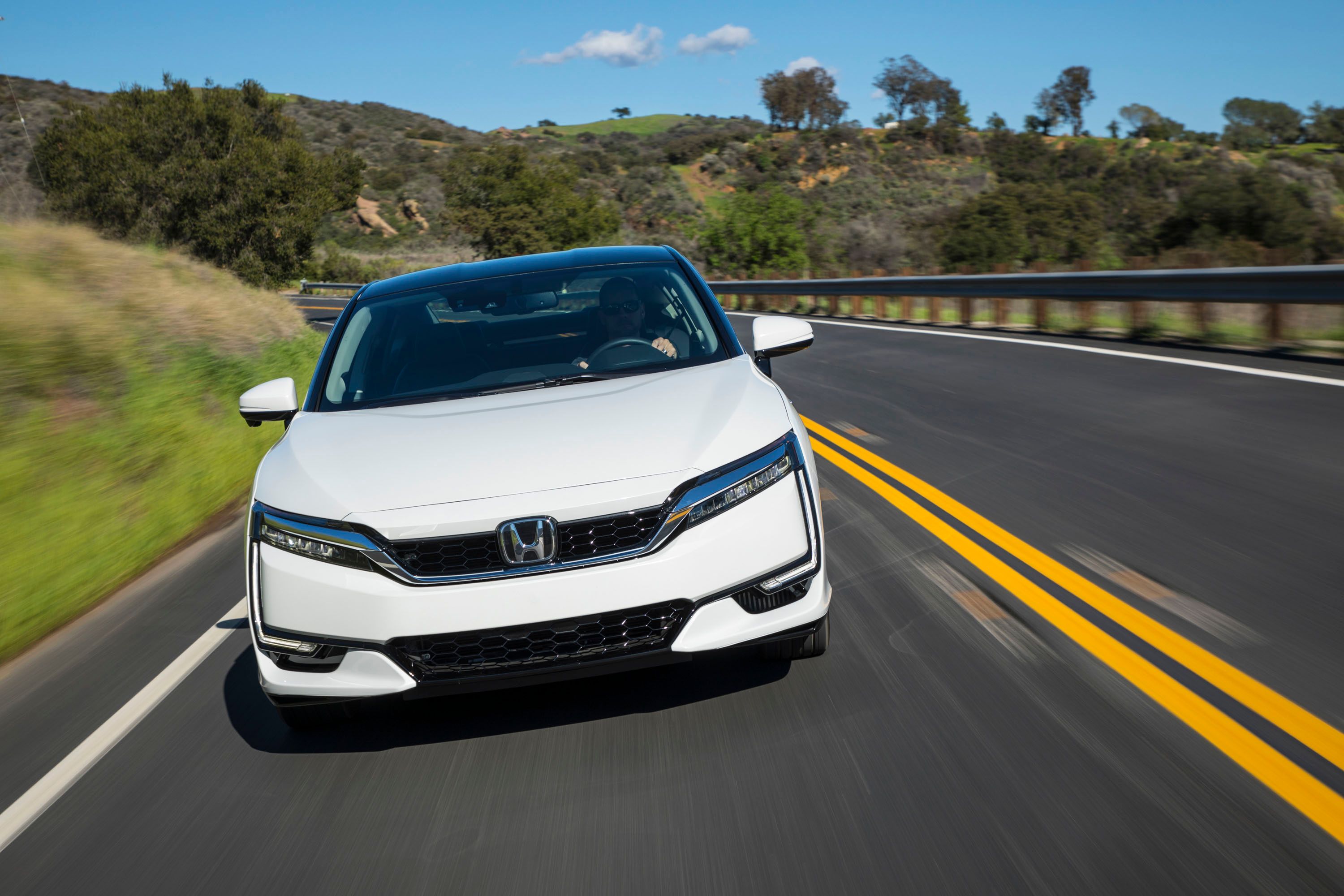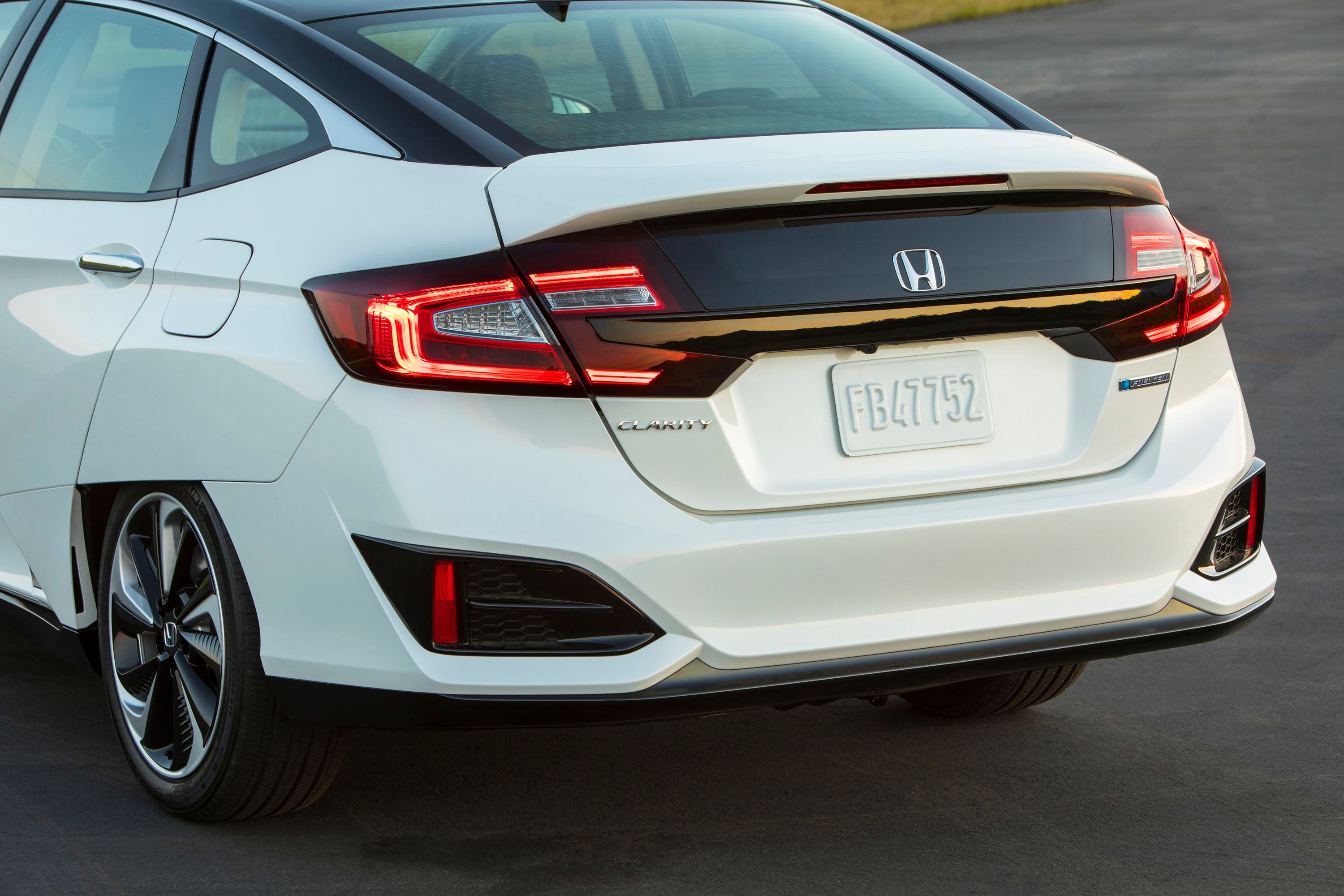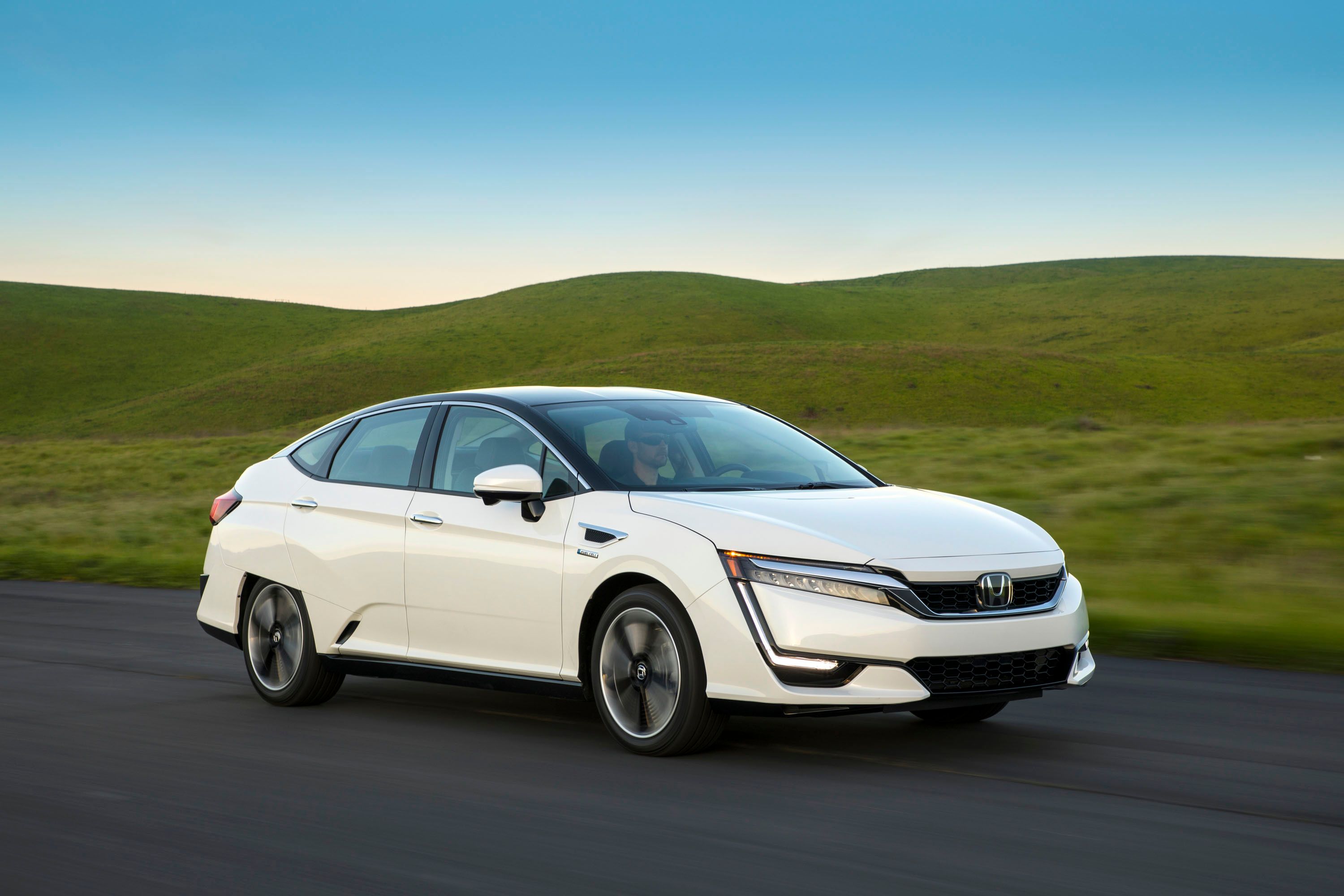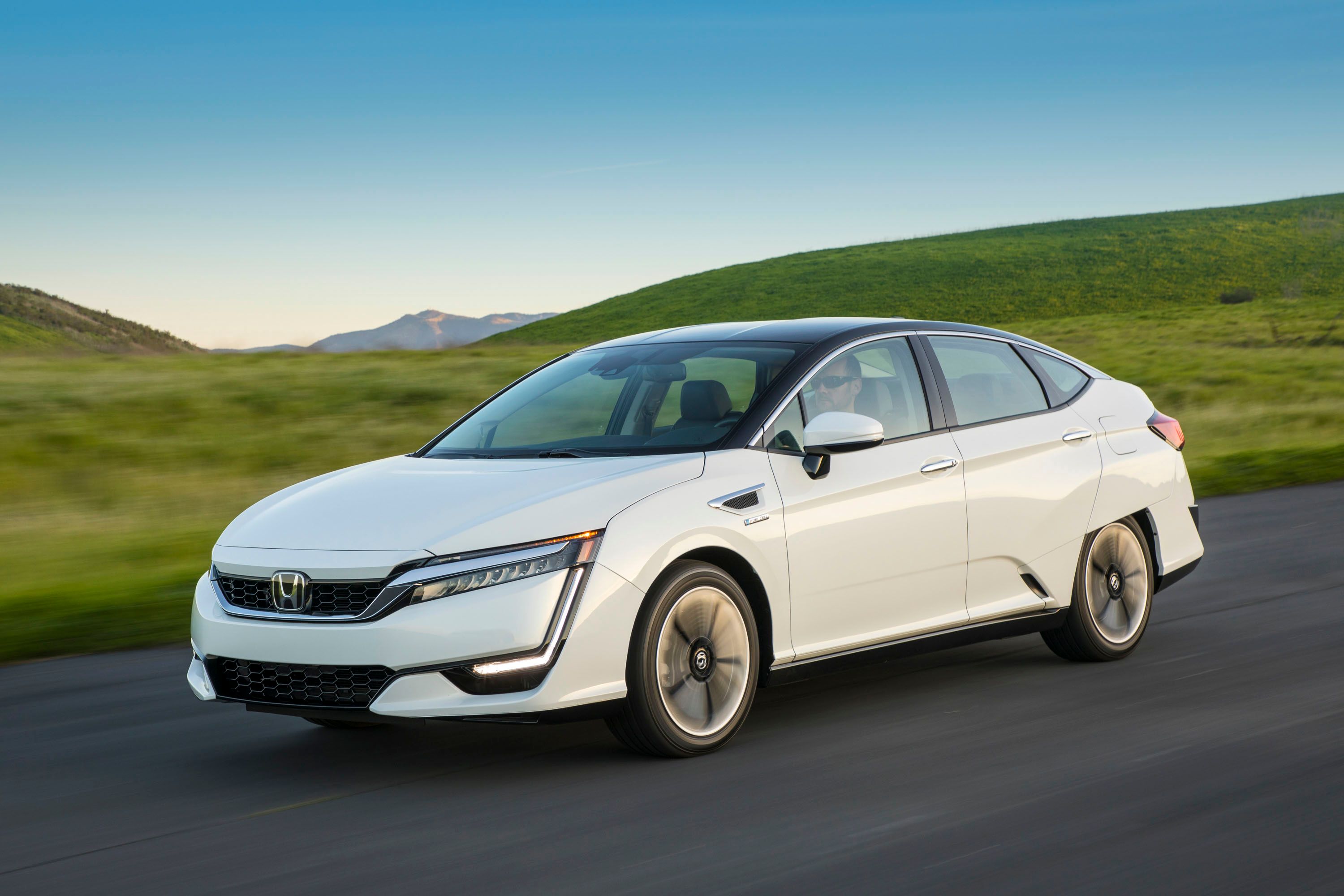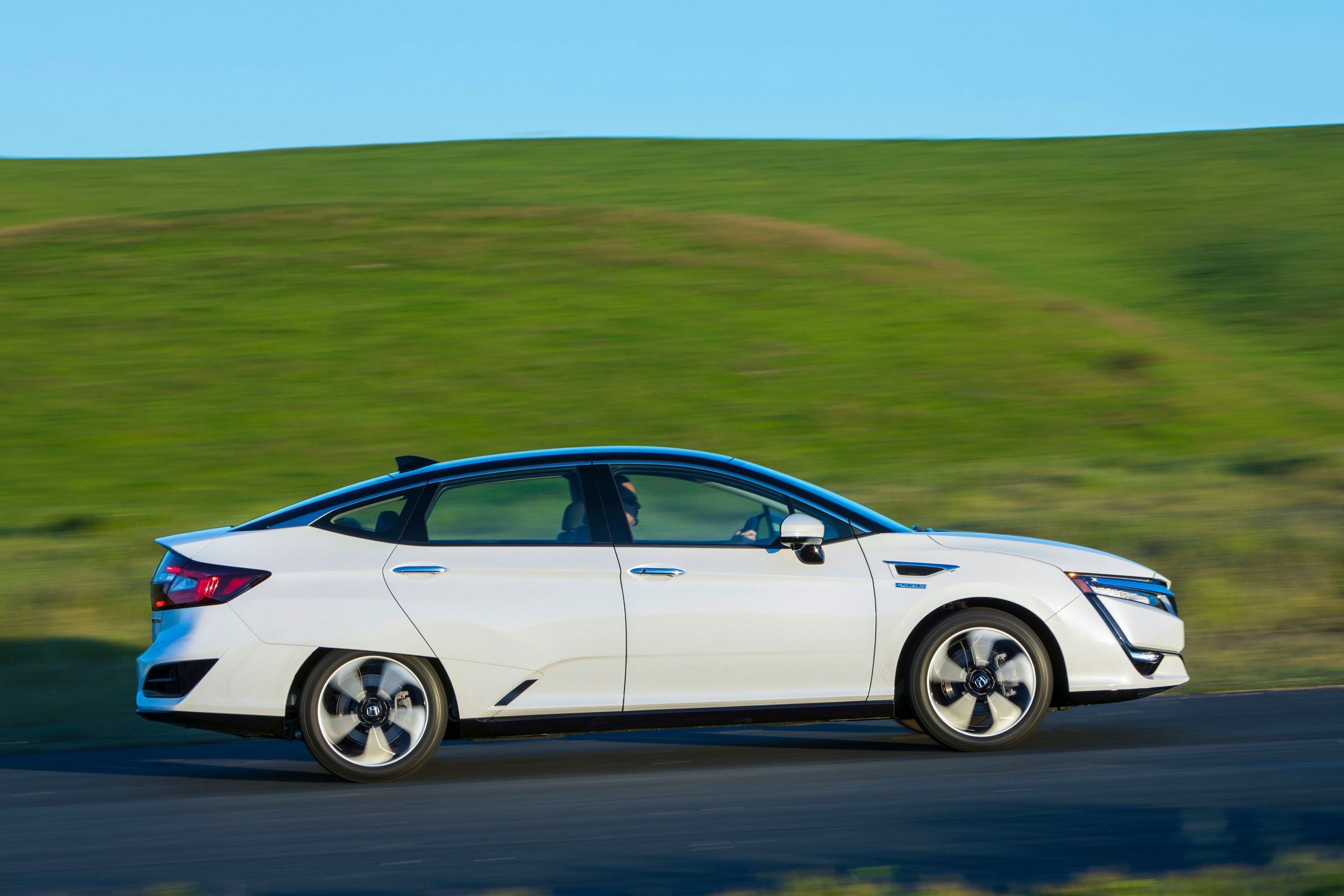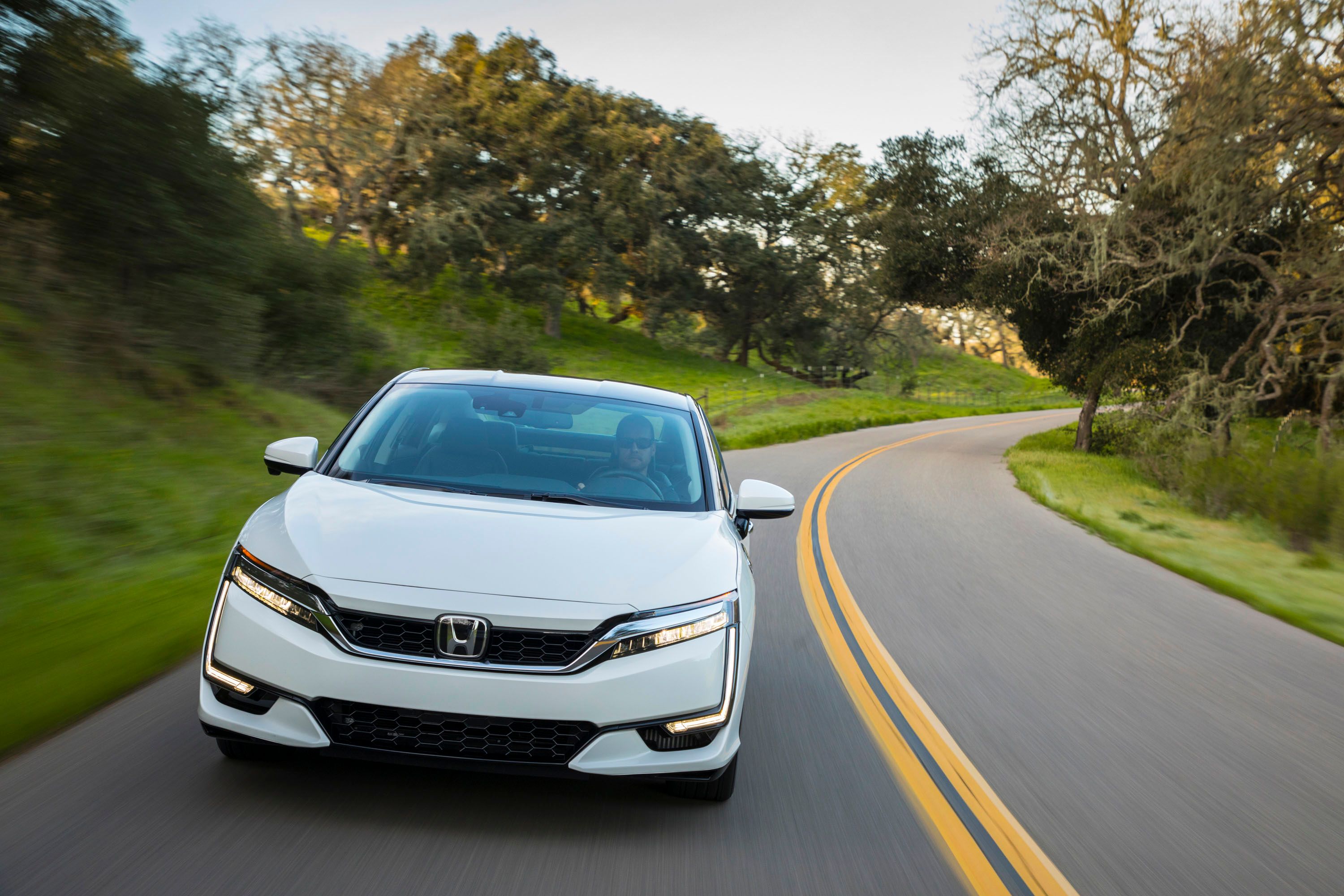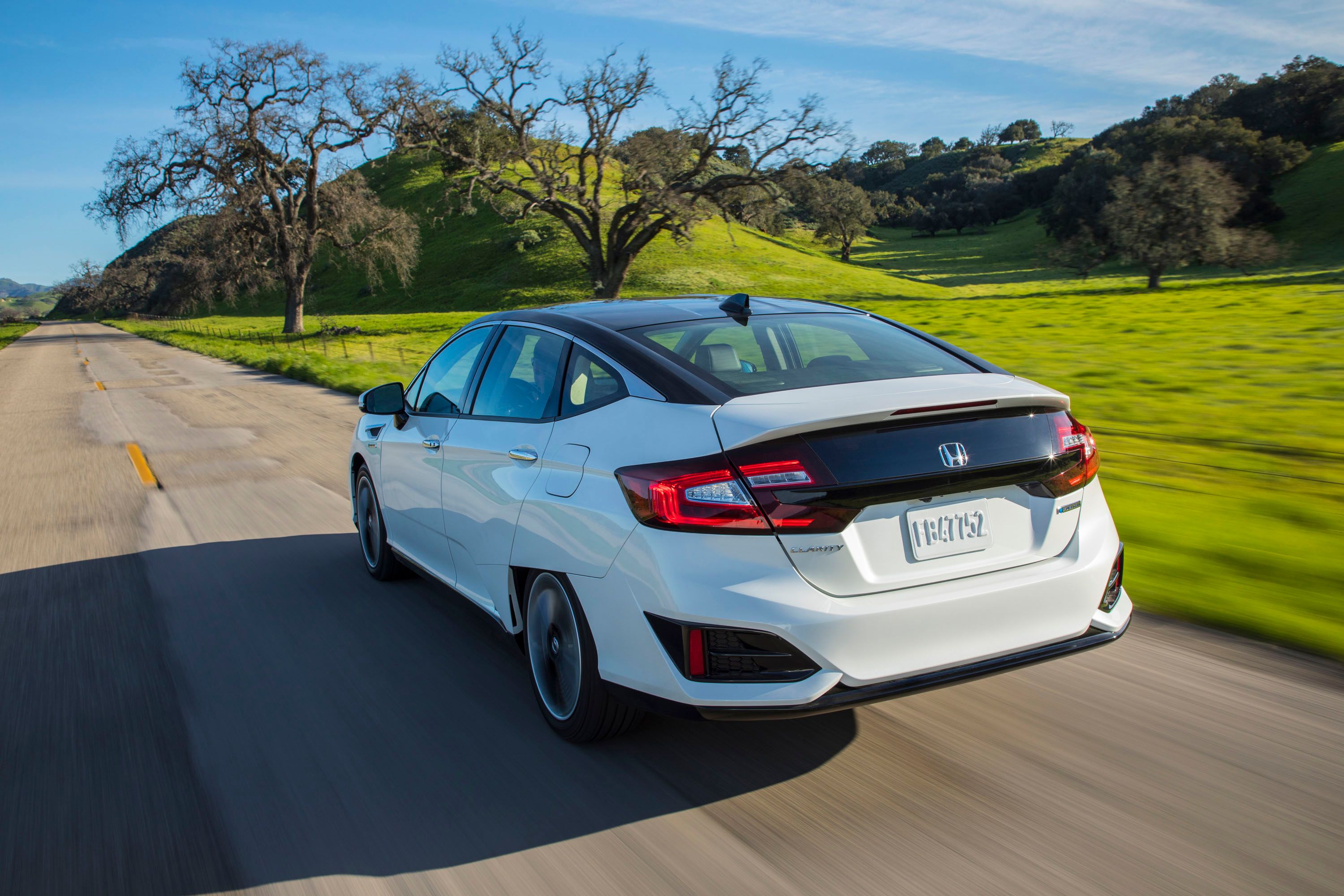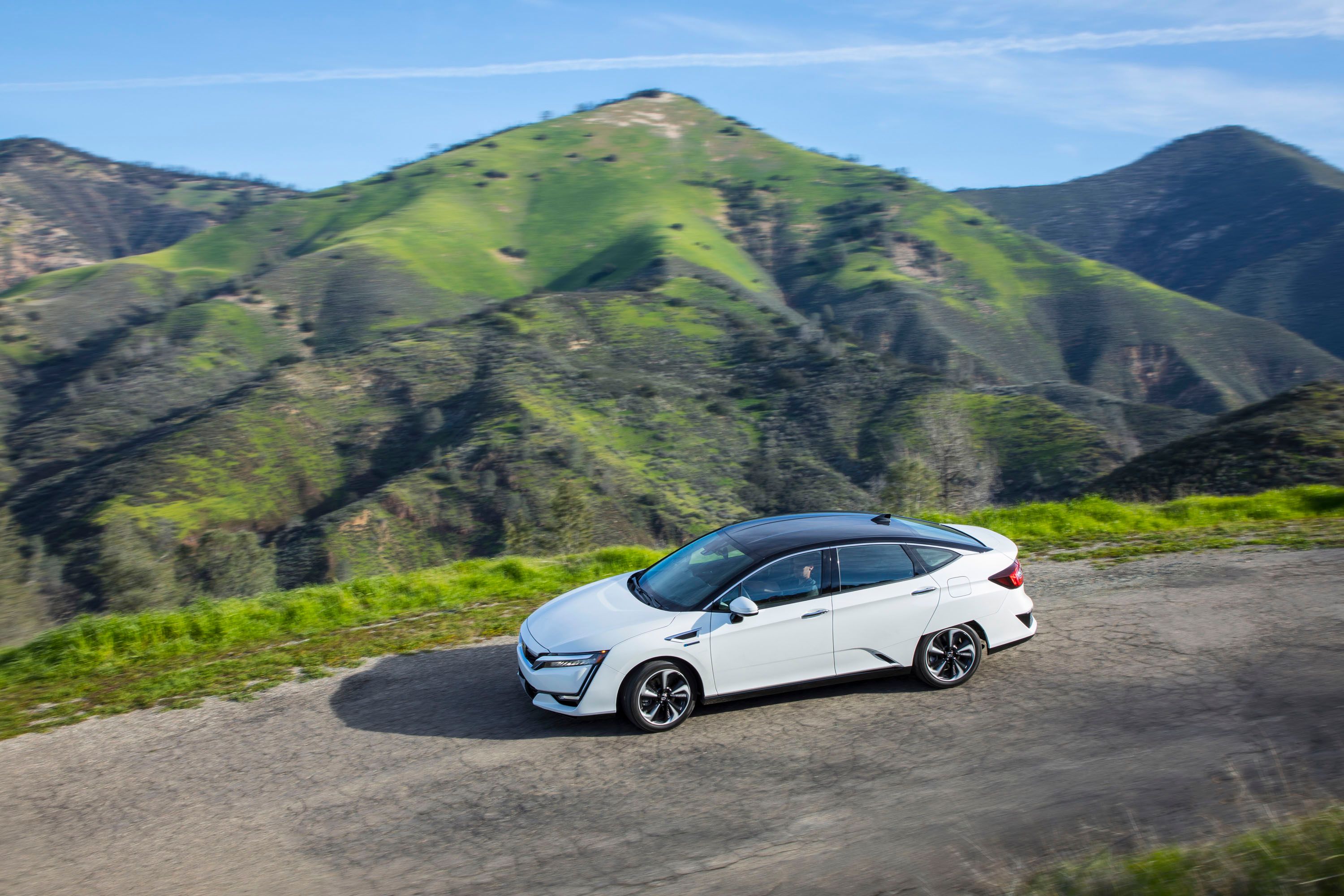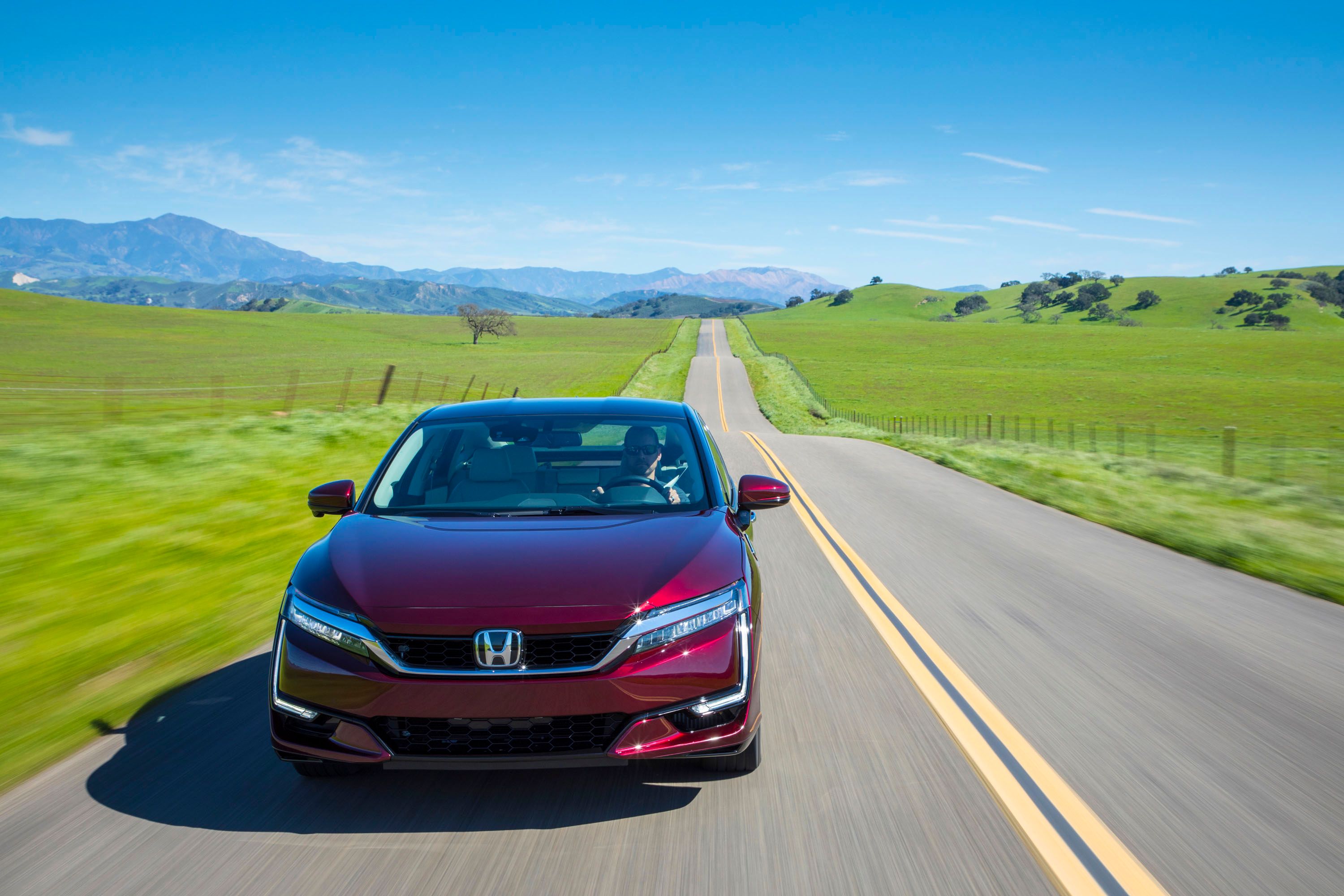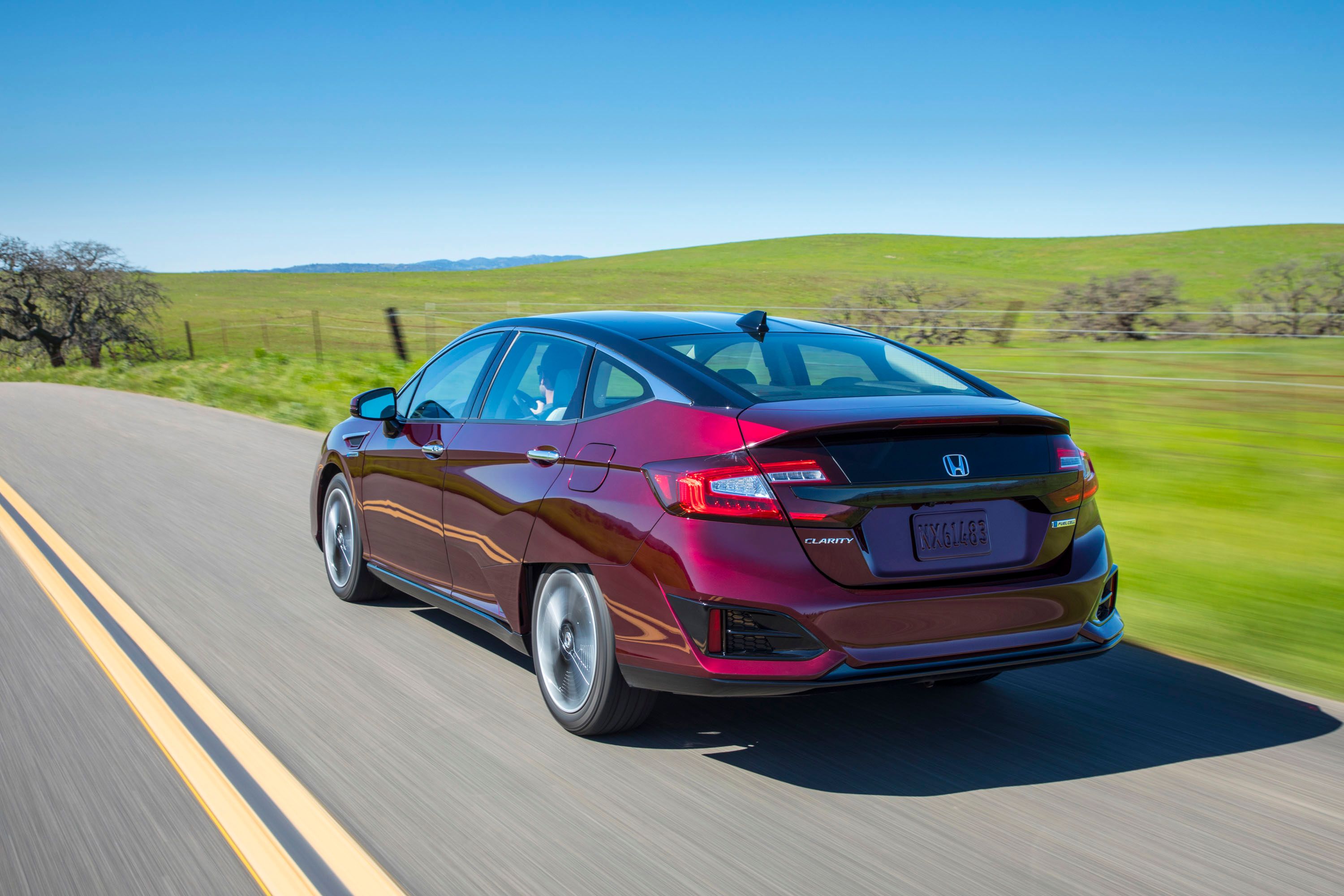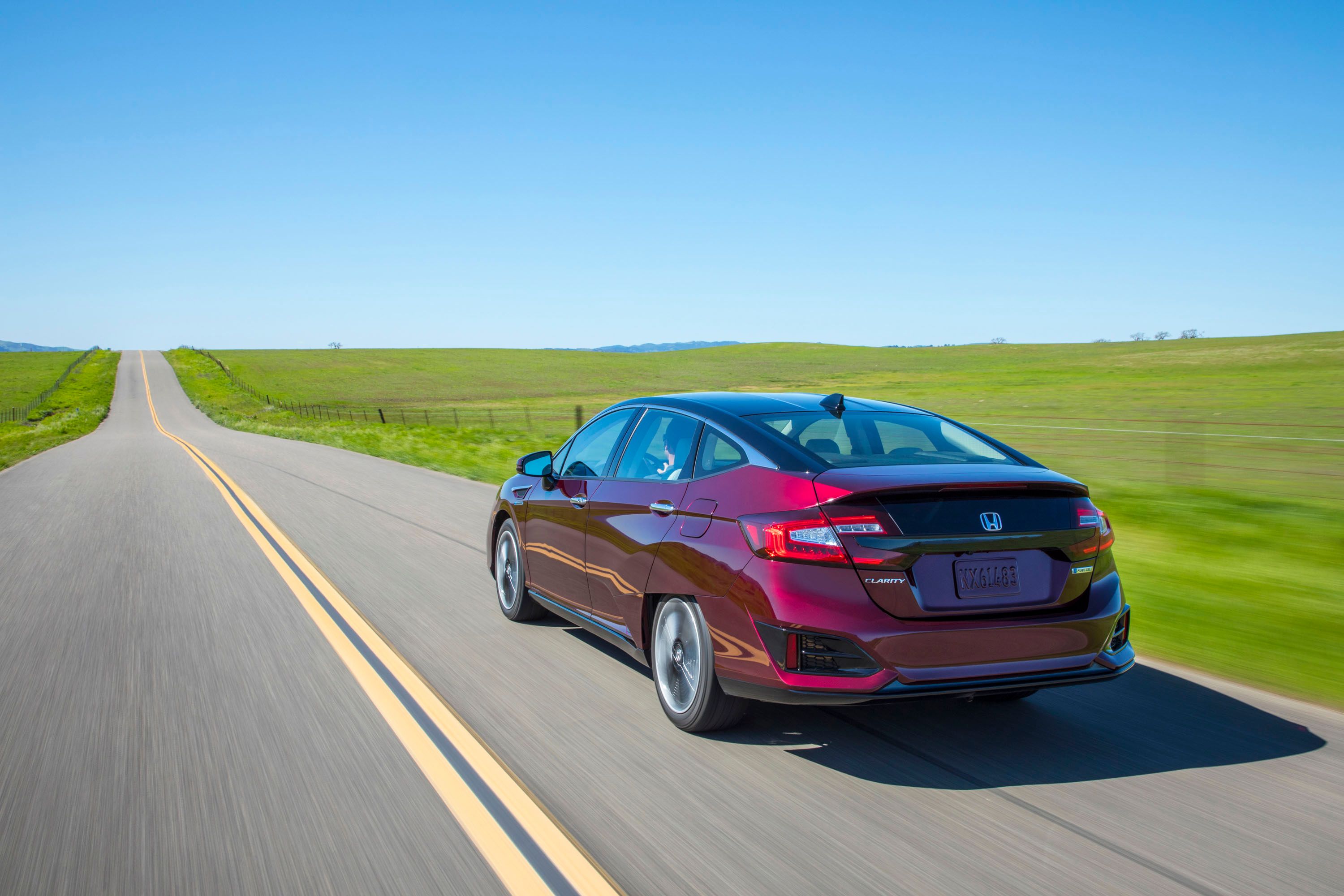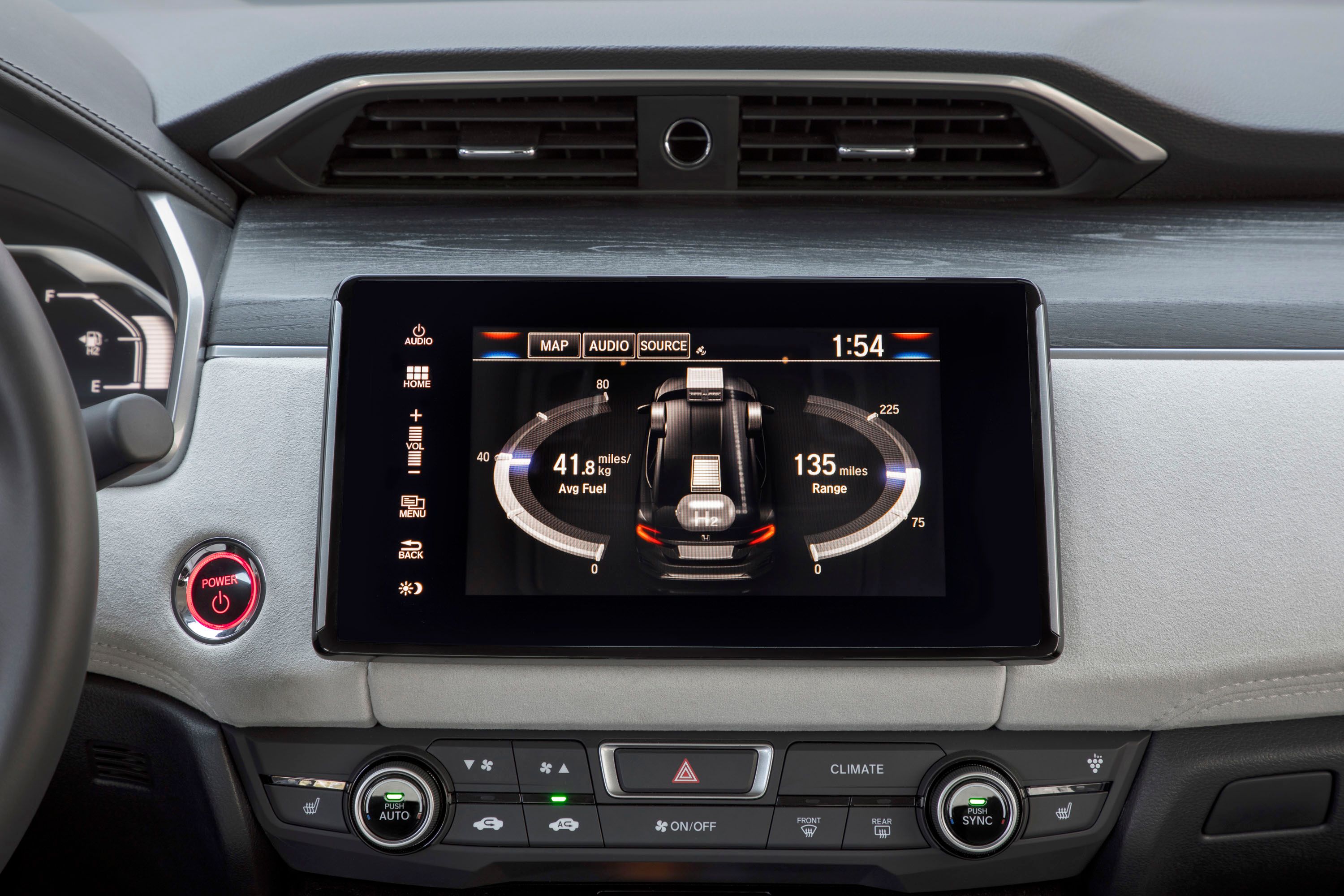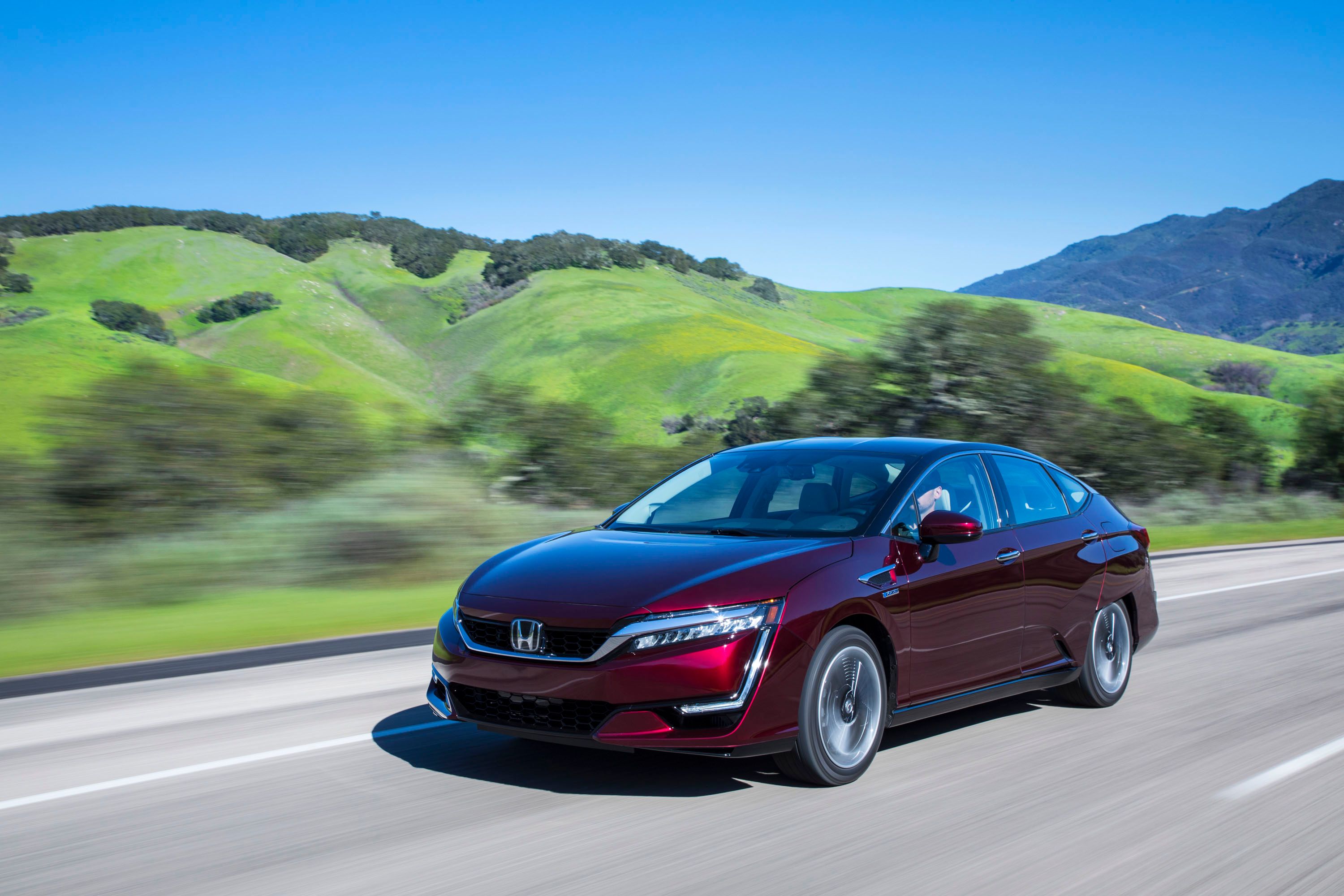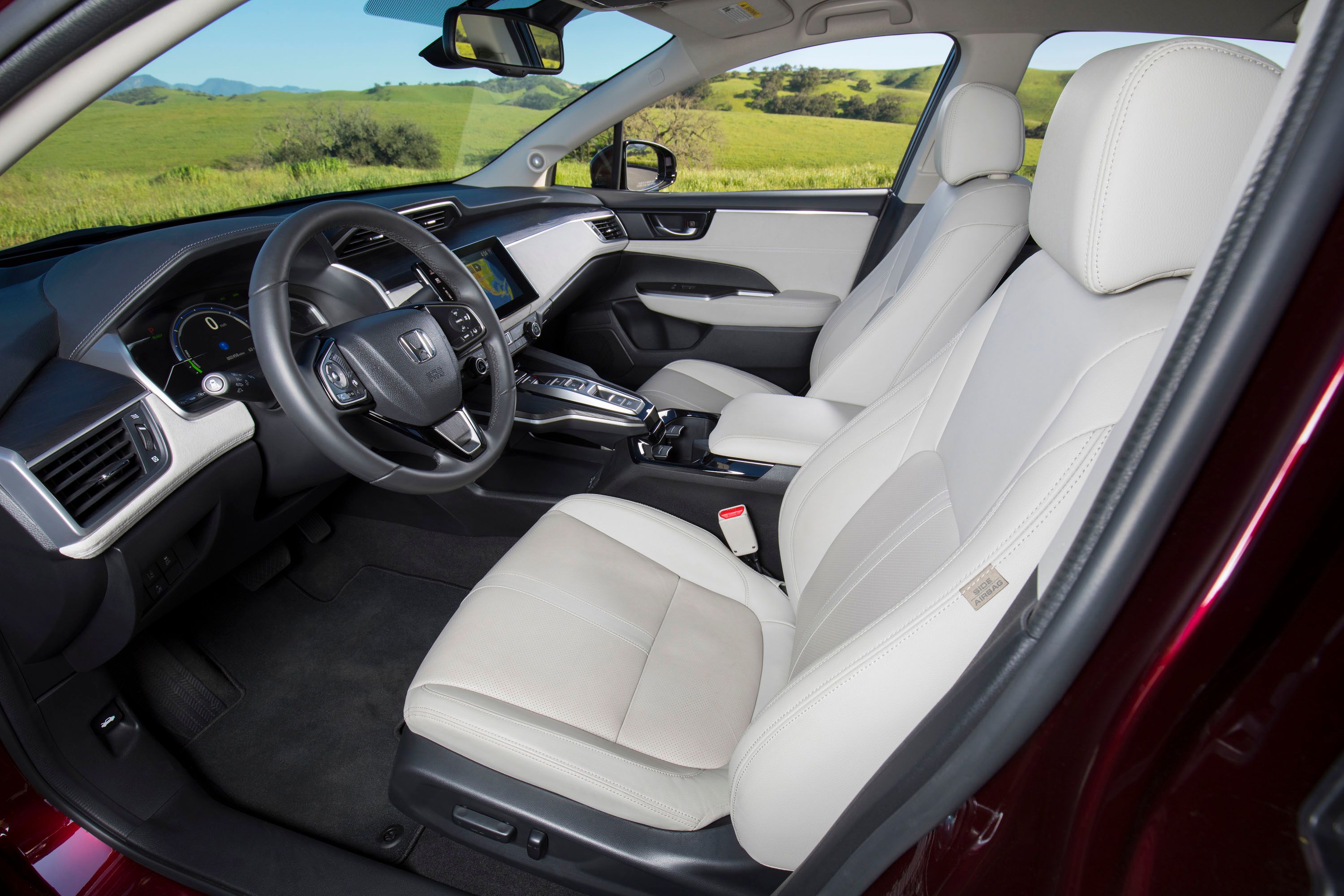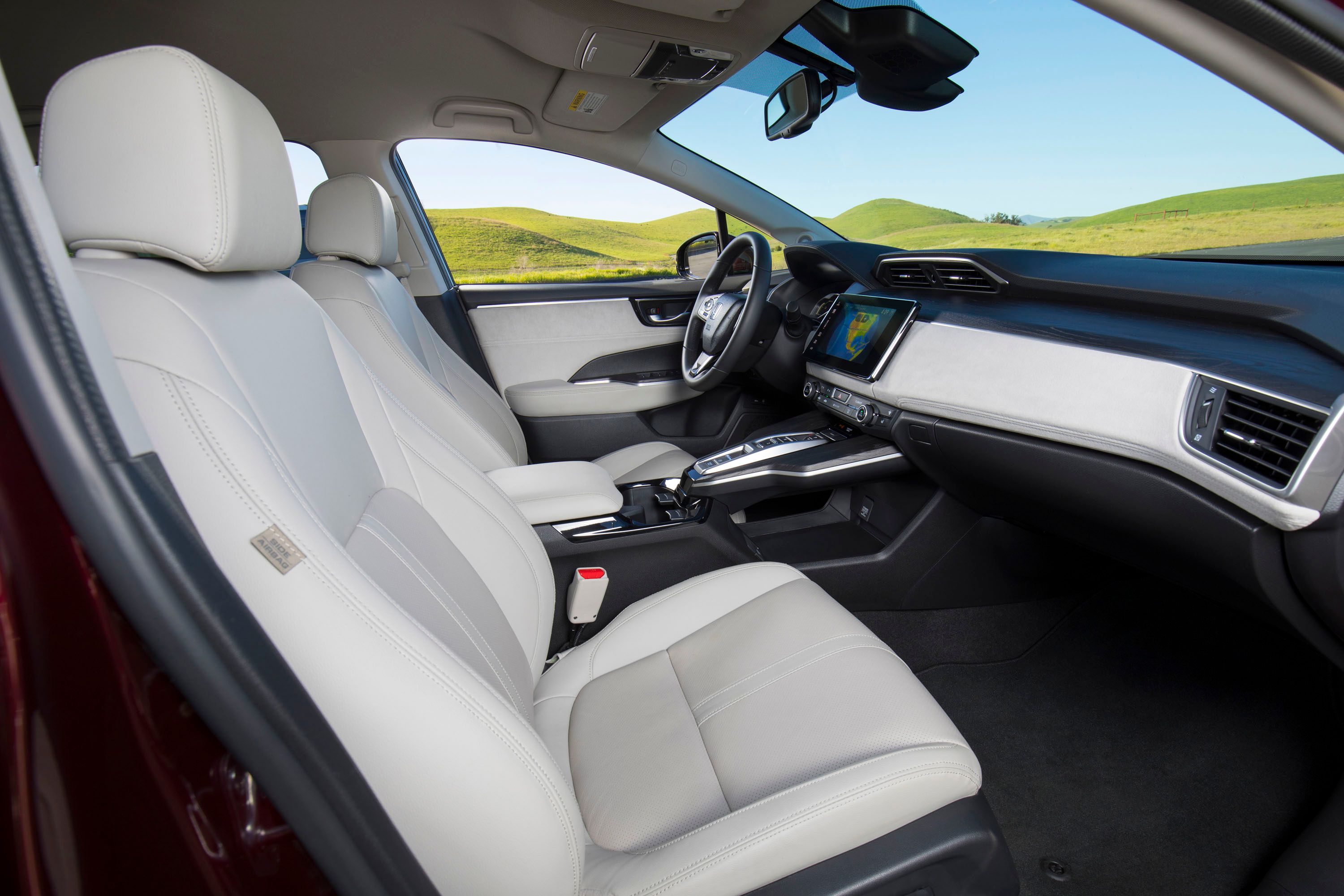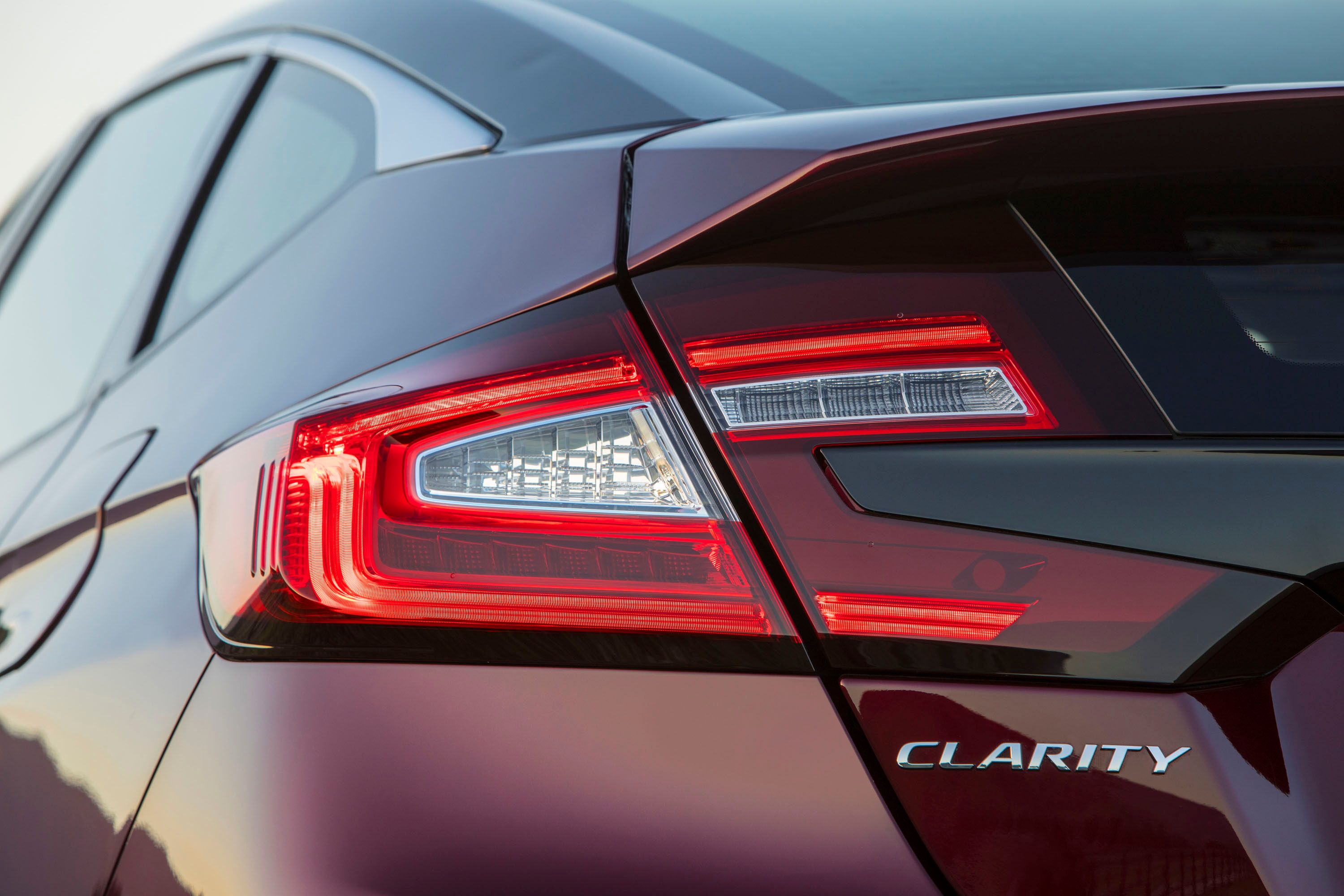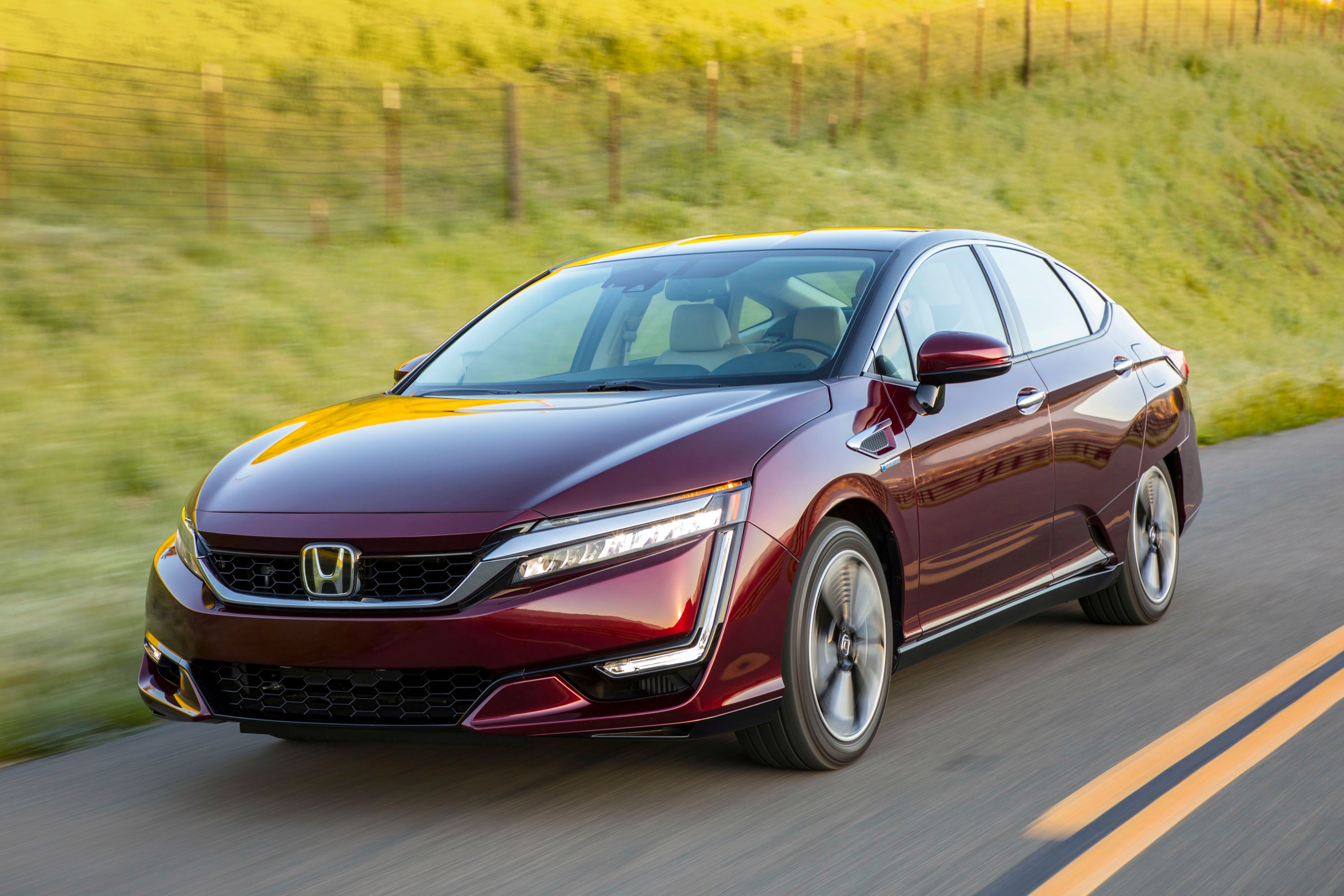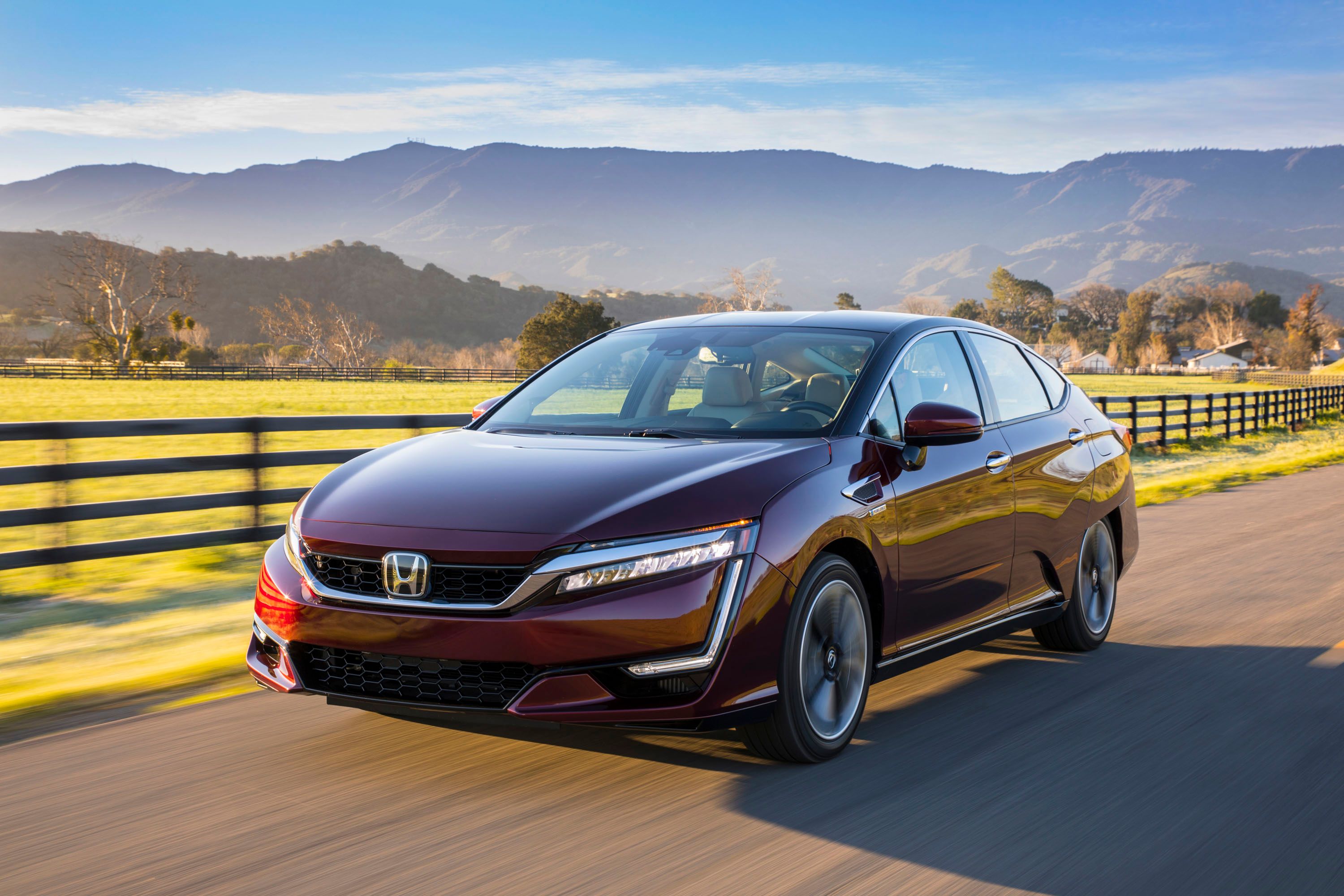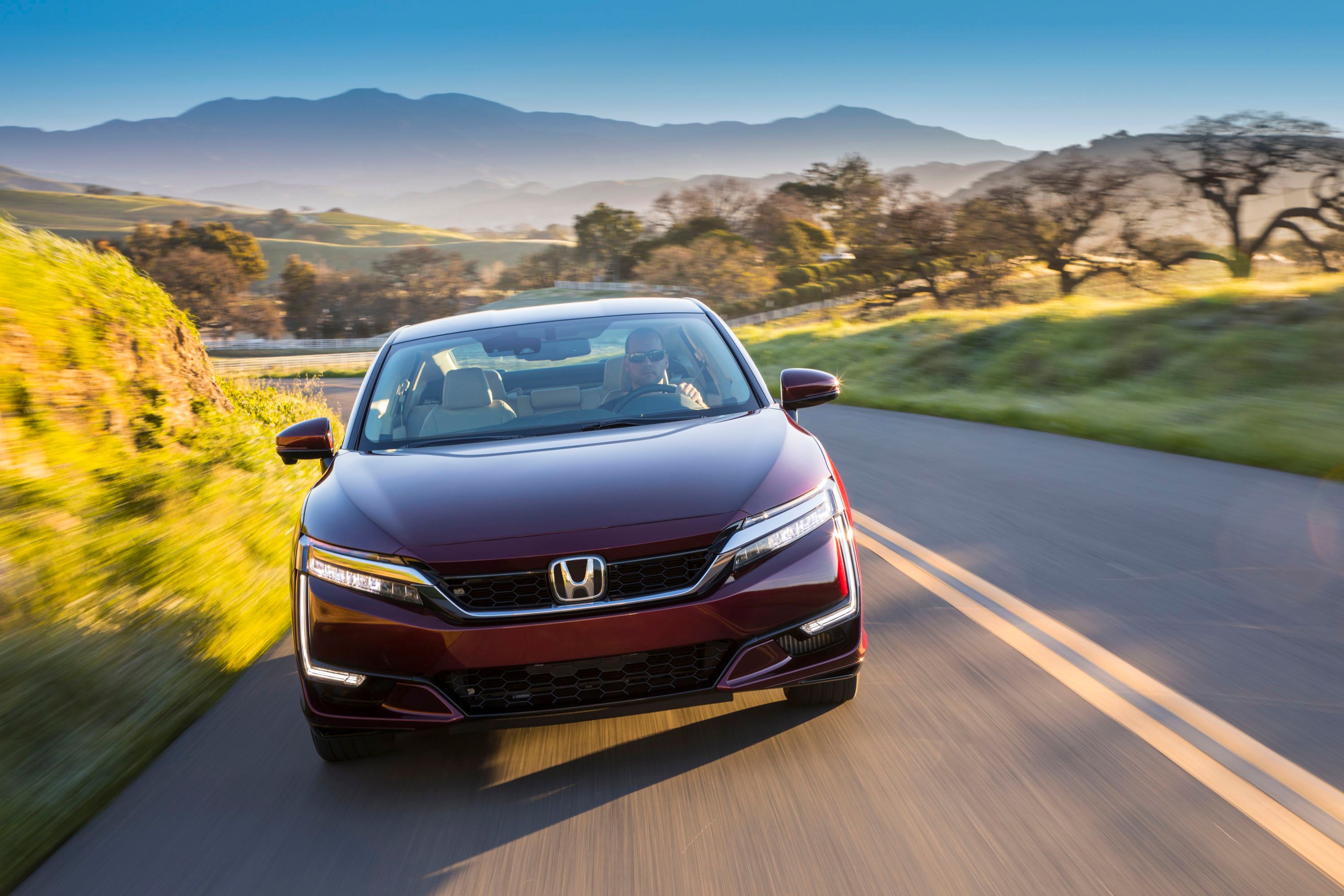Honda introduced the Clarity nameplate back in 2008 with the FCX Clarity, a mid-size, five-passenger, four-door sedan equipped with a hydrogen-powered electric motor. Based on the FCX Concept vehicle from 2006, the original Clarity was the first hydrogen fuel cell passenger car ever offered for general public consumption. Production of the original Clarity ended in 2014 with just a handful of units sold, but now it’s back, with Honda reintroducing the nameplate in December of 2016. The basics are the same, including the four-door sedan body style bristling with nerdy cuts and details, while under the hood you’ll find a hydrogen fuel cell powertrain. Joining the H2-powered model now is two other powertrains, including an all-electric and plug-in hybrid variant, both of which were unveiled earlier this year at the New York International Auto Show.
With three options on the table, Honda hopes to bump up U.S. sales to 75,000 units over the course of the next four years, representing a five-fold increase in electric vehicle sales overall. This also coincides with goals of making two out of every three vehicles sold an electrified green alternative by the year 2030. “The Honda Clarity is aimed at accelerating the deployment of advanced electrified powertrain technology and bringing electrified vehicles further into the mainstream,” said Jeff Conrad, senior vice president of American Honda Motor Co., Inc. “The Clarity series also heralds the advancement of our Honda Electrification Initiative, representing our investment in the full spectrum of electric-vehicle technologies.” Can the Clarity deliver?
Update: 06/12/2017: Honda has just announced a new leasing program for the Honda Clarity Electric. Check out the “Prices” section below to learn all about it.
2018 Honda Clarity
- Make: Array
- Model: 2018 Honda Clarity
- Engine/Motor: inline-4
- Horsepower: 181
- Torque: 232
- [do not use] Vehicle Model: Array
Exterior
Like many green alternative forms of transportation these days, the Honda Clarity gets a unique, standout exterior style that’s hard to miss. The primary motivation behind the Clarity’s styling is functional in nature, with the body panels lowering the overall drag coefficient and maximizing the miles possible from each of the models’ respective power sources. And while aesthetics are secondary, the unique look also helps sell the idea that this car is “different” from a more traditional internal combustion-only sedan. It’s a controversial, polarizing style, that’s for sure, but considering the success of competitors like the Toyota Prius, a vehicle with an equally odd approach to styling, it’s doubtful Honda will lose sales by taking chances with the Clarity’s look.
The whole thing looks relatively low to the ground, which helps minimize the amount of air flowing underneath it, while also lending it a little more aggression. Dominating the front end is a broad chrome trip that rises into slim, squared-off headlights. LEDs are used as the primary lighting element. Thin, L-shaped daytime running lights branch out from the outside edges of the headlight housings, adding chunkiness by framing the bumper beam. The lower valence gets a few creases to help direct air where it needs to be.
The profile on the Clarity looks even stranger, with a sloping roofline that lends the sedan an almost hatchback like appearance, similar to the new Civic. One unique element can be found around the rear wheel wells, where an apron element covers the top edge of the rear wheels, something that should help keep air from getting mixed up under the fender and smoothing out some of the drag. This is complemented by flared out body panels in the rear doors that add substantial chunkiness to the rear end. Shiny polished metal surrounds were used for the windows, adding extra premium flair.
The rear end completes the look with a bulbous, rounded tail. The rear deck is flattened, while C-shaped taillights wrap around into the rear fenders. Pinched lines and creases once again mimic those found on the latest-generation Honda Civic.
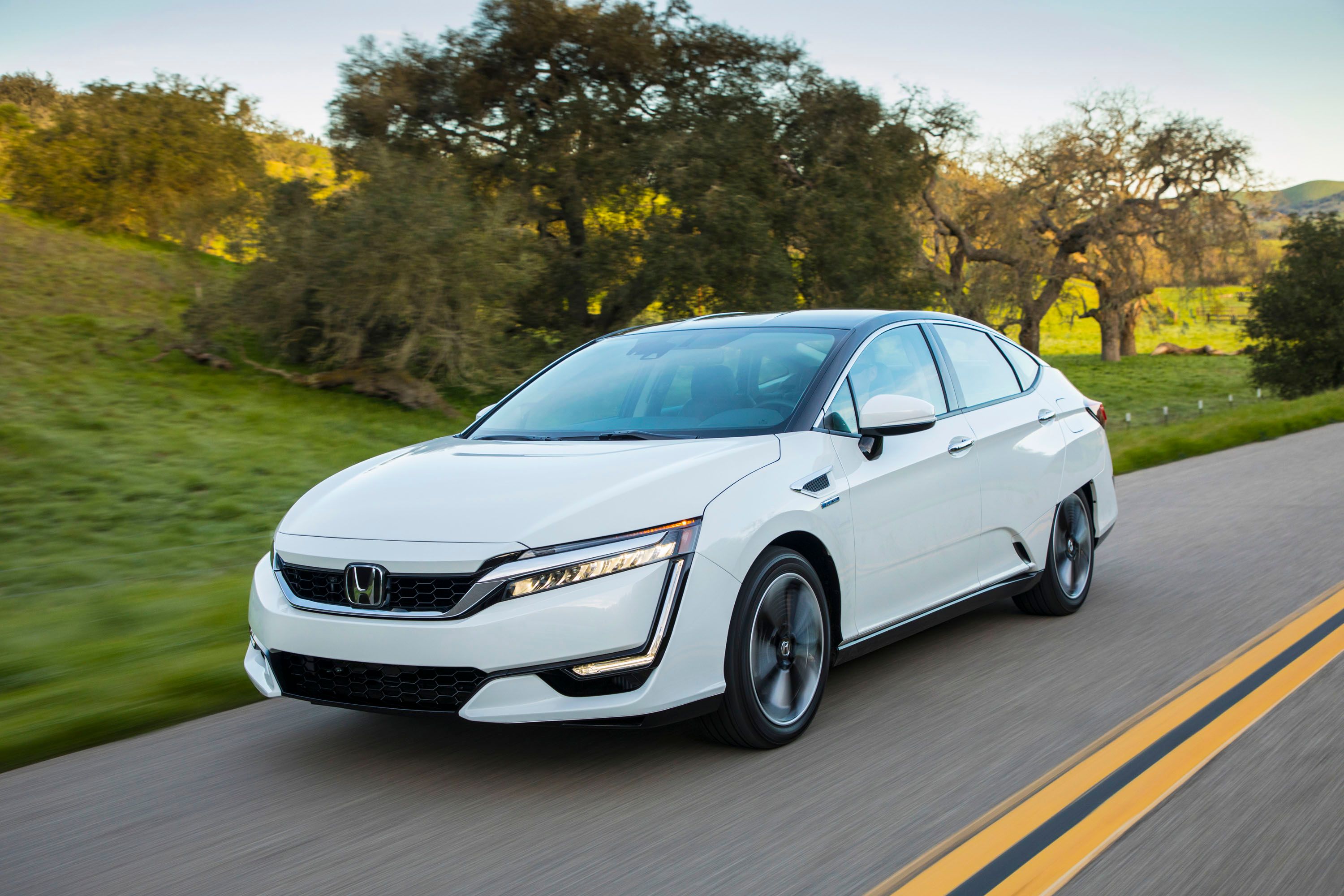
|
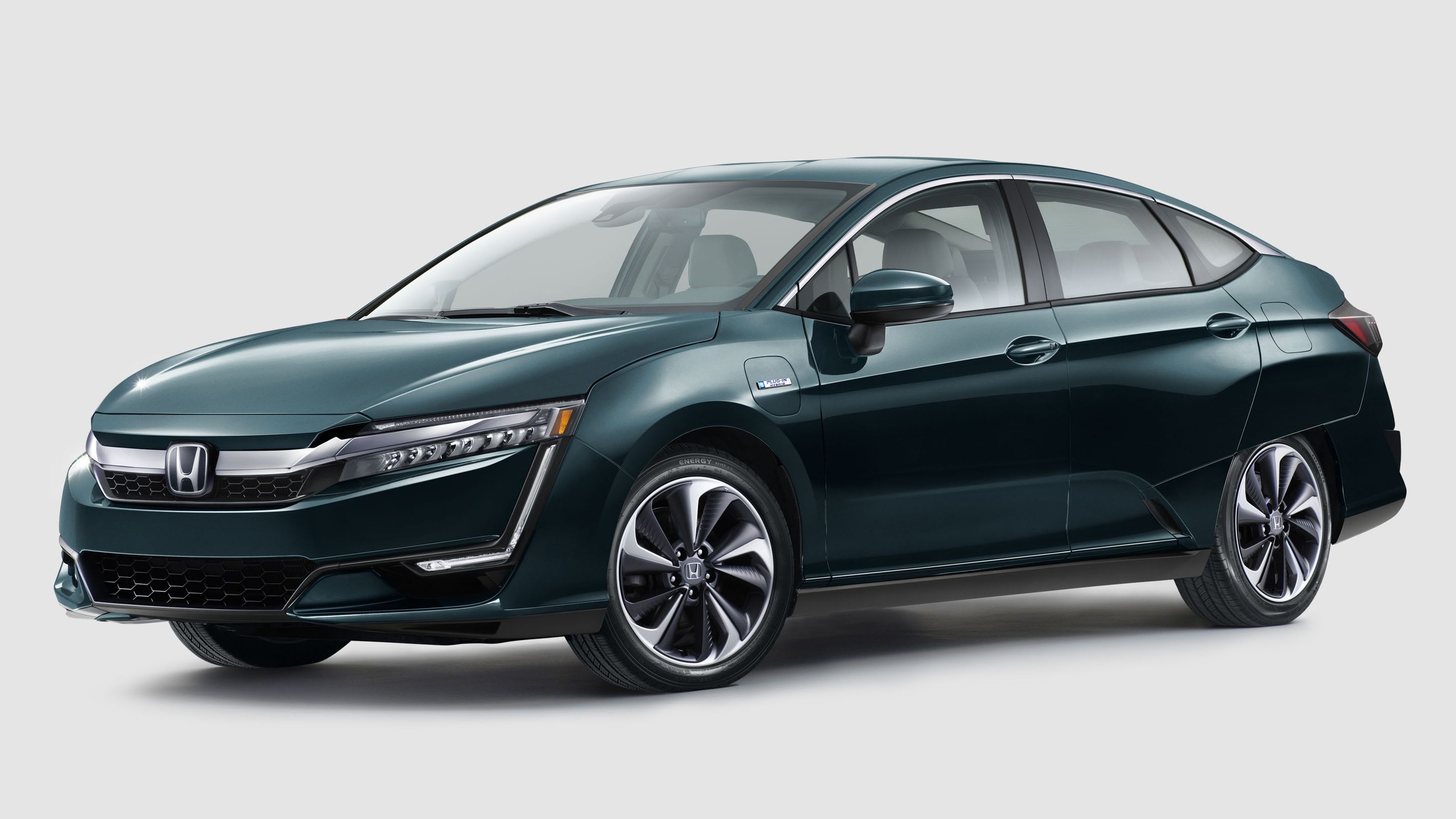
|
Between the three different powertrains, there isn’t a whole lot to separate them in terms of styling, although Honda did add unique badging and wheel designs. Honda also says it reshaped the front end, headlights, and taillights, although the differences are minor. Wheel sizing measures in at 18 inches in diameter. All three models also get their own “special hero color,” and if you go for the Clarity Fuel Cell, you’ll have three colors exterior colors to choose from, including Bordeaux Red Metallic, White Orchid Pearl, and Crystal Black Pearl. No word yet on what colors will be offered on the all-electric and plug-in hybrid variants.
Honda Clarity exterior dimensions
|
Wheelbase (Inches) |
108.3 |
|
Length (Inches) |
192.7 |
|
Width (Inches) |
73.9 |
|
Height (Inches) |
58.2 |
The Competition
|
Toyota Mirai |
Chevrolet Bolt EV |
If you absolutely must have a hydrogen-powered passenger car, but don’t like the Clarity, the only other option comes from Toyota with the Mirai. Like the Clarity, the Mirai offers a unique visual appearance, standing out thanks to a surplus of lines, cuts and angles. Up front, you’ll find a trio of intakes in the bumper, including two triangular openings that dominate the front end’s styling. Vertical daytime headlights outline the periphery. Thin headlights illuminate the road ahead, while lightweight alloy wheels are mounted in the corners. The rear profile gets a swooping fender line that helps direct air towards the tail, and the taillights mirror the front with a triangular shape.
In terms of electric vehicle competition, one of the best on the market right now is the Chevrolet Bolt EV. Unlike the Mirai and Clarity, the Bolt isn’t totally off the beaten path when it comes to styling, taking a more traditional five-door hatchback/sub-compact crossover approach that should please a wider audience in terms of aesthetics. That said, the Bolt EV still gets a few futuristic cues here and there, such as in the front end, where LED headlights, short overhangs, and a broad grille are used. Matte black underbody cladding rings the lower edge of the car, while triangular taillights, also equipped with LEDs, are installed in back.
Beauty might be in the eye of the beholder, but the Bolt’s more traditional approach to styling should help it broaden its appeal compared to the bizarre look seen on the Toyota and Honda. Pair that more attractive styling with smaller exterior dimensions, which translate into better around-town maneuverability, and the Chevy looks like the better buy in terms of the exterior.
|
Toyota Mirai |
Chevrolet Bolt EV |
|
|
Wheelbase (Inches) |
109.4 |
102.4 |
|
Length (Inches) |
192.5 |
164 |
|
Width (Inches) |
71.5 |
69.5 |
|
Height (Inches) |
60.4 |
62.8 |
Interior
While not quite as “out there” as the exterior styling, the Honda Clarity’s interior does continue some of the spacey vibe first seen in the body panels. The central tunnel in particular gets the sci-fi treatment thanks to a geometric, angular cut, and center stripe of buttons. Behind the three-spoke, multifunction steering wheel is a set of digital gauges, while the central dash is equipped with a touchscreen display to relay info like navigation and various other infotainment bits.
Honda says the materials used are environmentally friendly, but still include sleek treatments and soft touch goodies, just as you’d expect from a vehicle in this price range. That means wood trim, leatherette upholstery, and brushed metal surrounds. This approach is complemented by the various electrified drivetrains on offer, which give the Clarity a low level of interior ambient noise and a reduction in vibration and harshness. Go for the Clarity Fuel Cell model, and you’ll also enjoy expanded passenger space compared to the previous year thanks to a more compact powertrain.
Handling the infotainment duties is Honda’s Display Audio platform, which offers expanded smartphone support via Apple CarPlay and Android Auto, including smartphone-esque operation like tap, pinch, and swipe commands.
Honda Clarity interior dimensions
|
Headroom front / rear (Inches) |
39.1 / 37.1 |
|
Legroom front / rear (Inches) |
42.2 / 36.7 |
|
Shoulder room front / rear (Inches) |
59.6 / 57.2 |
|
Hip room front / rear (Inches) |
55.6 / 55.6 |
|
Cargo volume (cubic feet) |
11.8 |
|
Passenger volume (cubic feet) |
102 |
|
Seating capacity |
5 |
Note: dimensions given are for 2017 model year Honda Clarity Fuel Cell.
The Competition
|
Toyota Mirai |
Chevrolet Bolt EV |
Toyota took a page out of the Prius handbook when it went anouy developing the cabin of the Mirai. A surplus of digital screens clutters the center of the cabin, including a climate control panel along the central tunnel, a primary infotainment screen on the dash, and a horizontal driver’s information panel up top. The layout is asymmetric in design, complemented by curving, silver trim pieces echoed in the three-spoke steering wheel and door panels. Toyota’s Entune software platform provides the infotainment, while haptic controls are used for the HVAC system. Piano-black plastic is used for some of the surrounds. Toyota also made sure the GPS system listed available locations for hydrogen refueling.
Things are once again a bit safer in the Chevy Bolt, but the tech vibe isn’t lost completely. The gauges behind the steering wheel are digital, while a large screen and HVAC controls are mounted in a “floating” center console. Interior ambient lighting adds extra glitz along the dash contours. Onboard tech includes Bluetooth connectivity, the OnStar services suite, a 4G LTE Wi-Fi hot spot with connectivity up to seven devices, and smartphone support with Apple CarPlay and Android Auto. Finally, the Bolt offers seating for up to five passengers.
|
Toyota Mirai |
Chevrolet Bolt EV |
|
|
Headroom front / rear (Inches) |
N/A |
39.7 / 37.9 |
|
Legroom front / rear (Inches) |
N/A |
41.6 / 36.5 |
|
Shoulder room front / rear (Inches) |
N/A |
54.6 / 52.8 |
|
Hip room front / rear (Inches) |
N/A |
51.6 / 50.8 |
|
Cargo volume (cubic feet) |
3 |
16.9 |
|
Seating capacity |
4 |
5 |
Drivetrain
An electrified powertrain is really an ideal set-up for a commuter. In addition to the quiet operation, the powerband provides a solid amount of low-end torque, which is perfect when making a quick pass around slow-moving traffic, whether it’s on the freeway or around town.
The Clarity offers a trio of powertrain options, but let’s start with the plug-in hybrid model first, as that’s slated to be the most popular of the three. Making it go is a 1.5-liter Atkinson cycle four-cylinder that pairs with an electric motor and 17-kWh battery pack. The internal combustion 1.5-liter acts as either a direct power source, or can generate electricity to juice up the battery pack. Output from the electric motor is rated at 181 horsepower and 232 pound-feet of torque, while the battery pack can get topped off in around 2.5 hours when plugged into a 240-volt power source. Give it a full tank of gas and a full battery charge, and Honda estimates you’ll see upwards of 330 miles of range, while all-electric, non-local emissions range comes in at 42 miles, a number that Honda claims as the “longest of any mid-size plug-in hybrid.” Helping to tailor the experience to whatever the condition might be is a selection of four different drive modes, including Normal, Econ, and Sport, as well as HV mode, which preserves the current charge of the battery to save all-electric motivation for a later time. The EPA estimates returns at a rated 105 MPGe combined, a figure Honda boasts as the “top of its class.”
Next up we have the Honda Clarity Electric, which is powered exclusively by an electric motor rated at 120 kilowatts, 161 horsepower, and 221 pound-feet of torque. Juicing the motor is a battery pack rated at 25.5 kWh. Plug it into a 240-volt source and you’ll see a full charge in roughly 3 hours. The Clarity Electric also gets the option for DC quick charging, which will jolt the pack to an 80-percent charge in 30 minutes. The whole thing is rated at 111 MPGe combined, while multiple driving modes help fine tune the experience in a fashion similar to the hybrid, offering Normal, Econ, and Sport. However, one of the most important specs on an all-electric vehicle is range per charge, and the Clarity falls a bit flat in that department, providing a less-than-impressive 80 miles between plug-ins.
Note: previous model year Honda Clarity Fuel Cell pictured here.
Finally, there’s the Clarity Fuel Cell, which gets numerous powertrain improvements and upgrades compared to the previous model year of the hydrogen-powered Clarity. For 2018, Honda gave the Clarity a more compact fuel cell stack, down by around 33 percent in size, while also improving power density by 66 percent. Honda says the fuel cell and hydrogen powertrain are now roughly equivalent in dimensions to a modern V-6 internal combustion engine, offering greater cabin space as a result. Total range with a full tank of hydrogen is 366 miles, which Honda says is the highest EPA-rated driving range of a zero-emission vehicle on the U.S. market. Of course, that should be tempered with the fact that the bulk of zero-emission vehicles are all-electric models, which inherently have lower range than a hydrogen car that carries its electricity generator around with it. Regardless, the EPA gives the Clarity Fuel cell an estimated fuel economy of 68 MPGe combined.
Honda Clarity Plug-in Hybrid drivetrain specs
|
Internal combustion engine |
1.5-liter Atkinson cycle four-cylinder |
|
Electric motor output |
181 horsepower, 232 pound-feet of torque |
|
Battery pack |
17 kWh |
|
Battery charge time |
2.5 hours (240-volt power source) |
|
Range |
330 miles of range (battery and gasoline), 42 miles (all-electric only) |
|
EPA estimated fuel economy |
105 MPGe combined |
Honda Clarity Electric drivetrain specs
|
Electric motor output |
161 horsepower, 221 pound-feet of torque |
|
Battery pack |
25.5 kWh |
|
Battery charge time |
3 hours (240-volt source), 80 percent in 30 minutes (DC quick charge) |
|
Range |
80 miles |
|
EPA estimated fuel economy |
111 MPGe combined |
Honda Clarity Fuel Cell drivetrain specs
|
Electric motor output |
170 horsepower (est.) |
|
Battery pack |
N/A |
|
Range |
366 miles |
|
EPA estimated fuel economy |
68 MPGe combined |
|
Curb weight |
4,134 pounds |
The Competition
|
Toyota Mirai |
Chevrolet Bolt EV |
The most attractive feature of the Toyota Mirai is what it’s got under the hood, where a hydrogen fuel cell juices the front wheels to the tune of 153 horsepower and 247 pound-feet of torque. A sprint to 60 mph takes about nine seconds. High-pressure hydrogen storage tanks constructed from carbon fiber keep the fuel safe in the event of a collision, while a nickel-metal hydride battery provides the drive storage. The EPA estimates range at 312 miles, while top speed is rated at 111 mph. A MacPherson strut-type suspension is used up front and double wishbones are used in the rear.
As for the Chevy Bolt EV, the big news is what it offers in terms of range – top off the battery, and you’ll enjoy up to 238 miles before requiring another plug-in. The battery is rated at 60 kWh, and comes with a variety of charge options. Hook it up to a 240-volt source, and you’ll get a full charge is roughly 9.5 hours, or 25 miles in an hour. There’s also the option to plug into a DC quick charge source, which will net 90 miles in half an hour. A 110-volt option is also available, but expect much longer charge times. Put your foot down, and you’ll see 200 horsepower and 266 pound-feet of torque at the front wheels, which is enough to propel the Bolt to 60 mph in a blistering 6.5 seconds. Top speed is 93 mph.
The Competition
|
Electric motor output |
153 horsepower, 247 pound-feet of torque |
|
Battery pack |
nickel-metal hybride |
|
Range |
312 miles |
|
EPA estimated fuel economy |
67 MPGe combined |
Toyota Mirai drivetrain specs
|
Electric motor output |
200 horsepower, 266 pound-feet of torque |
|
Battery pack |
60 kWh |
|
Battery charge time |
9.5 hours (240-volt source), 90 miles in 30 minutes (DC quick charge) |
|
Range |
238 miles |
|
EPA estimated fuel economy |
119 MPGe combined |
Safety And Convenience
As you might expect given the Clarity’s penchant for cutting-edge technology, the 2018 model year tosses in the latest Honda Sensing safety and driver-assist features. That means it gets Adaptive Cruise Control, Collision Mitigation automatic braking, lane-keep assist, Road Departure Mitigation, lane-change assist, blind-spot monitor, Cross Traffic Monitor, automatic high beam headlights, and more. The entire suite of features is included as standard equipment.
In terms of crash test ratings, neither the National Highway Traffic Safety Administration (NHTSA) nor the Insurance Institute for Highway Safety has posted ratings for the Honda Clarity.
The Competition
|
Toyota Mirai |
Chevrolet Bolt EV |
Like the Clarity, the Toyota Mirai gets a nice lineup of safety technology, such as vehicle pre-collision automatic braking and frontal crash warning, a blind spot monitor, lane-departure alert, drive-start control, and automatic high beam headlights. The Mirai also gets a full airbag system, rear backup camera, front and rear parking sensors, and the usual lineup of helpful gadgets (low tire pressure warning, airbag occupancy detection, etc.). The NHTSA and IIHS have yet not posted crash ratings for the Toyota Mirai.
The Bolt EV also falls in line when it comes to active safety tech. There’s lane-departure warning, a collision avoidance system, a blind-spot monitor, parking assist, and a teen driver mode. A full airbag system and other standard safety features round it out. Like the other two entries already mentioned, the Bolt doesn’t have any official crash test ratings from the NHTSA or IIHS posted online.
Prices
Honda will produce the Clarity in the United States, with Plug-in Hybrid and Electric variants offered in dealers later in 2017. Official pricing numbers have yet to be announced, but expect figures around the $35,000 mark.
Sales for the Plug-in model will be in all 50 states, and should make up the bulk of sales for the nameplate. Two trim levels will be offered, including the base model and a higher-grade Touring model.
Meanwhile, the Electric model will be offered with exclusive lease programs in California and Oregon. Interested buyers outside these two states are out of luck.
If you instead want to lease the Fuel Cell model, Honda is offering it for $369 a month for 36 months, with $2,868 due at signing. The lease also includes a 20,000-mile annual allowance, as much as $15,000 in hydrogen fuel, 21 days of Avis Luxury Rental inside California, roadside assistance, and single occupant HOV lane access. Further incentives include a $5,000 rebate for California residents.
Leasing Program
Honda is set to offer the new Clarity Electric sedan with an introductory lease price of $269 a month for 36 months. This leasing package includes a mileage allotment of 20,000 miles per year and roadside assistance. The leasing program includes the federal tax credit and requires $1,730 down plus tax, registration, and other fees. The Clarity will arrive in Oregon and California dealers starting in August of 2017. California customers will be eligible to receive the state’s Clean Vehicle Rebate, which will knock another $2,500 of the total cost of the lease.
The Competition
Note: Toyota Mirai pictured on the left, Chevrolet Bolt EV pictured on the right.
The Toyota Mirai can be had by both lease and outright purchase. Leasing goes for $349 per month for 36 months with $2,499 due at signing and a 12,000-mile limit, or you can buy one starting at $57,500. Incentives include 3 years of complimentary hydrogen fuel (up to $15,000), and if you live in California, white HOV carpool eligibility and a $5,000 rebate.
The Chevrolet Bolt EV can be had in one of two trim levels, starting with the LT for $37,495, which includes 17-inch wheels, LED taillights, automatic headlights, an 8-inch gauge display, and 10.2-inch touchscreen. Or you could spring for the Premier, starting at $41,780, which gets a unique wheel design, roof rails, additional active safety and convenience gear, and a heated steering wheel covered in leather. The usual federal and state incentives apply.
Other Options
Toyota Prius
When it comes to green transportation options, the Toyota Prius is pretty much the benchmark, at least when it comes to hybrids. Toyota first introduced the nameplate back in 1997, and the model currently sits in its fourth generation. Pricing starts at $23,475 for the ultra-basic Prius One model, and ranges as high as $30,015 for the Four Touring model. However, the closer competition for the Clarity hybrid is the Prius Prime, a plug-in model with upgraded features and equipment. Pricing for the Prime starts at $27,100 for the Plus model, and ranges as high as $33,100 for the Advanced model.
Read the full review here.
BMW i3
The i3 builds on the success of the Bavarian’s hybrid sports car, the i8, by offering consumers a more practical five-door hatchback loaded with an all-electric drivetrain. Range per charge is rated at just 80 miles, but a range extender internal combustion engine is optional to help quell those range anxieties. Pricing starts at $42,000, with output rated at 170 horsepower at the rear axles. Inside, the i3 looks the part of a high-tech all-electric city car, while offering enough space for up to four passengers.
Read the full review here.
Conclusion
The strategy Honda is using here is obvious – hedge your bets on green, electrified transportation by offering any and all possible powertrains under a single nameplate, regardless of the popularity of those powertrains in the moment. Honda is clearly looking to the future with the Clarity, and depending on where the market goes, it could see quite a lot of success.
“Electrification is the future of mobility and the future of Honda, and it all starts now with this new Clarity series,” says Steve Center, vice president of the Connected and Environmental business Development Office at American Honda. The automaker adds, “This shared ‘3-in-1’ platform strategy will enable Honda to respond to infrastructure and market developments, provide customers nationwide with an ultra-low carbon vehicle that meets their lifestyle needs, and takes Honda toward higher volume sales of advanced powertrain products that will help reduce CO2 emissions.”
With so much uncertainty over regulations, gas prices, and the evolution of customer demands, having a variety of powertrains in your back pocket equals a good amount of flexibility, which is an enviable position to be in. However, Honda might be spreading itself a bit thin in a few areas.
While the hybrid model is a solid proposition as the most popular option of the three, the all-electric model seems to fall short. Pricing for the Clarity Electric is far above where it should be, while the range per charge is far too low. And with the competition stepping up their game in terms of making EV’s cheaper and more capable in the range department, I don’t foresee the EV Clarity enjoying that much success.
The Fuel Cell variant, however, is a definite wildcard. Honda says that fuel cell vehicles are the “ultimate zero-emissions vehicle technology,” and along with the Mirai, the Clarity seems to be at the forefront of the trend. So far, over 100 Clarity Hydrogen-powered Clarity vehicles have been delivered in California, where the tech sees its greatest support with an expanding fuel station network. Will that support continue to grow? If it does, Honda will surely be there to reap the benefits.

